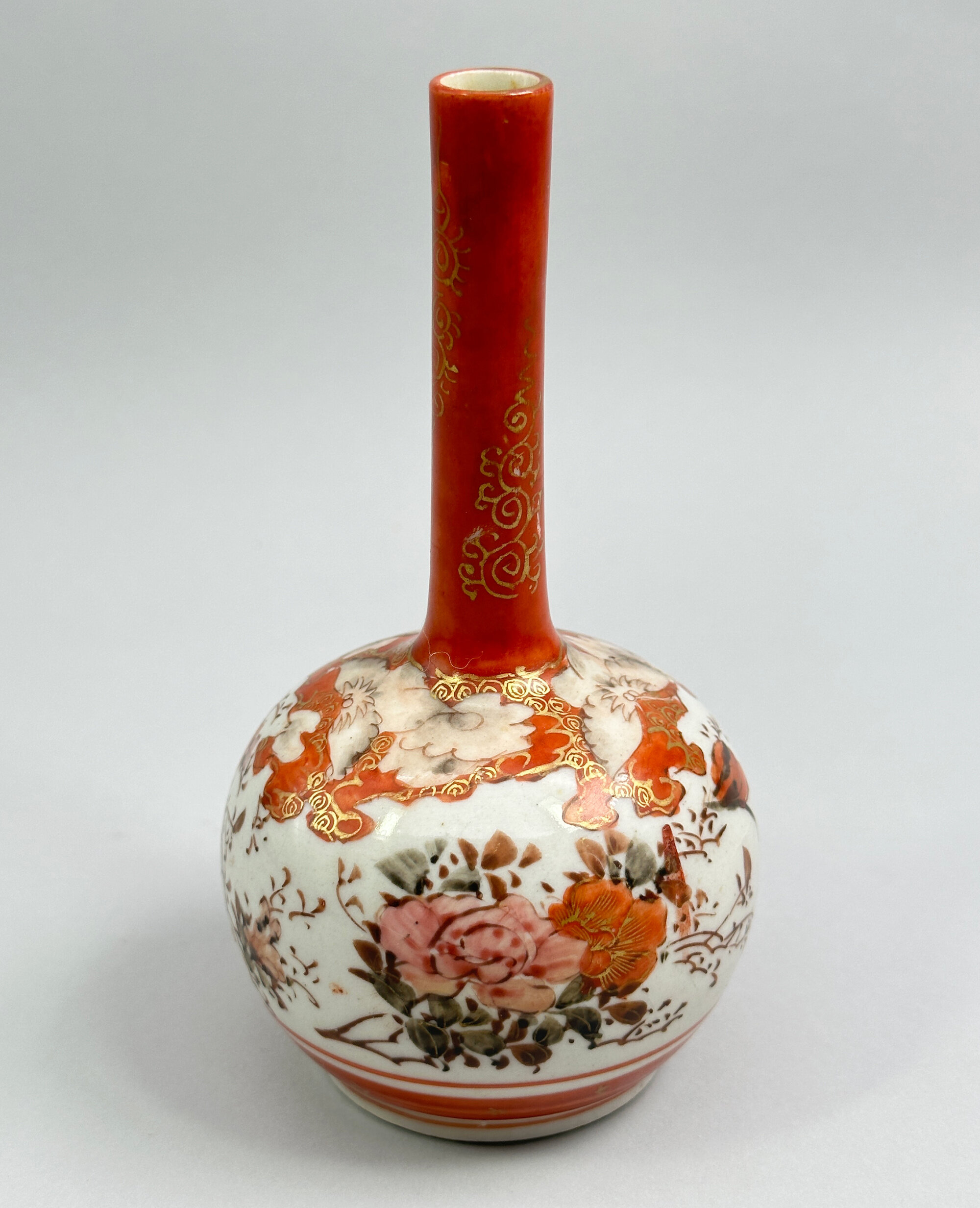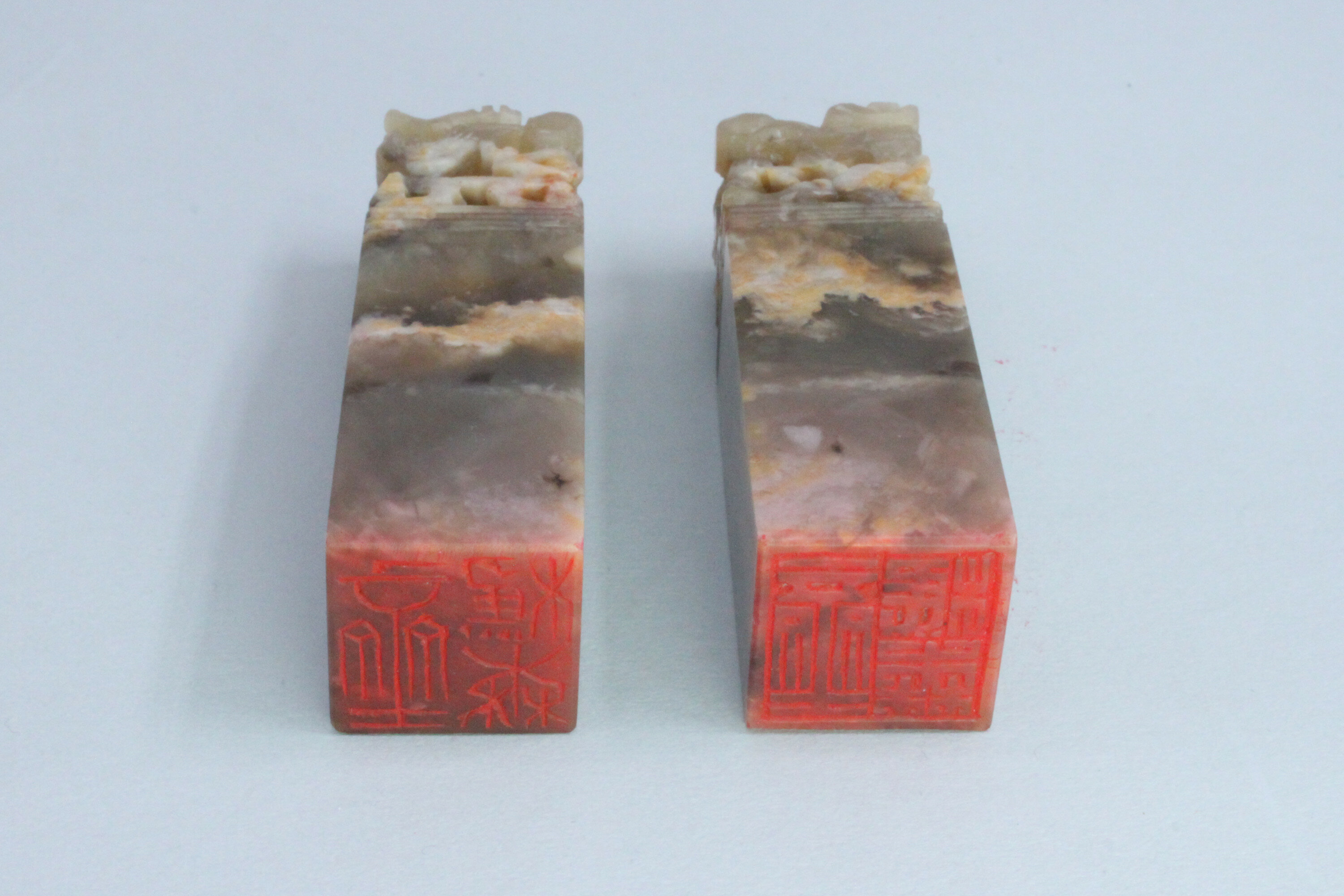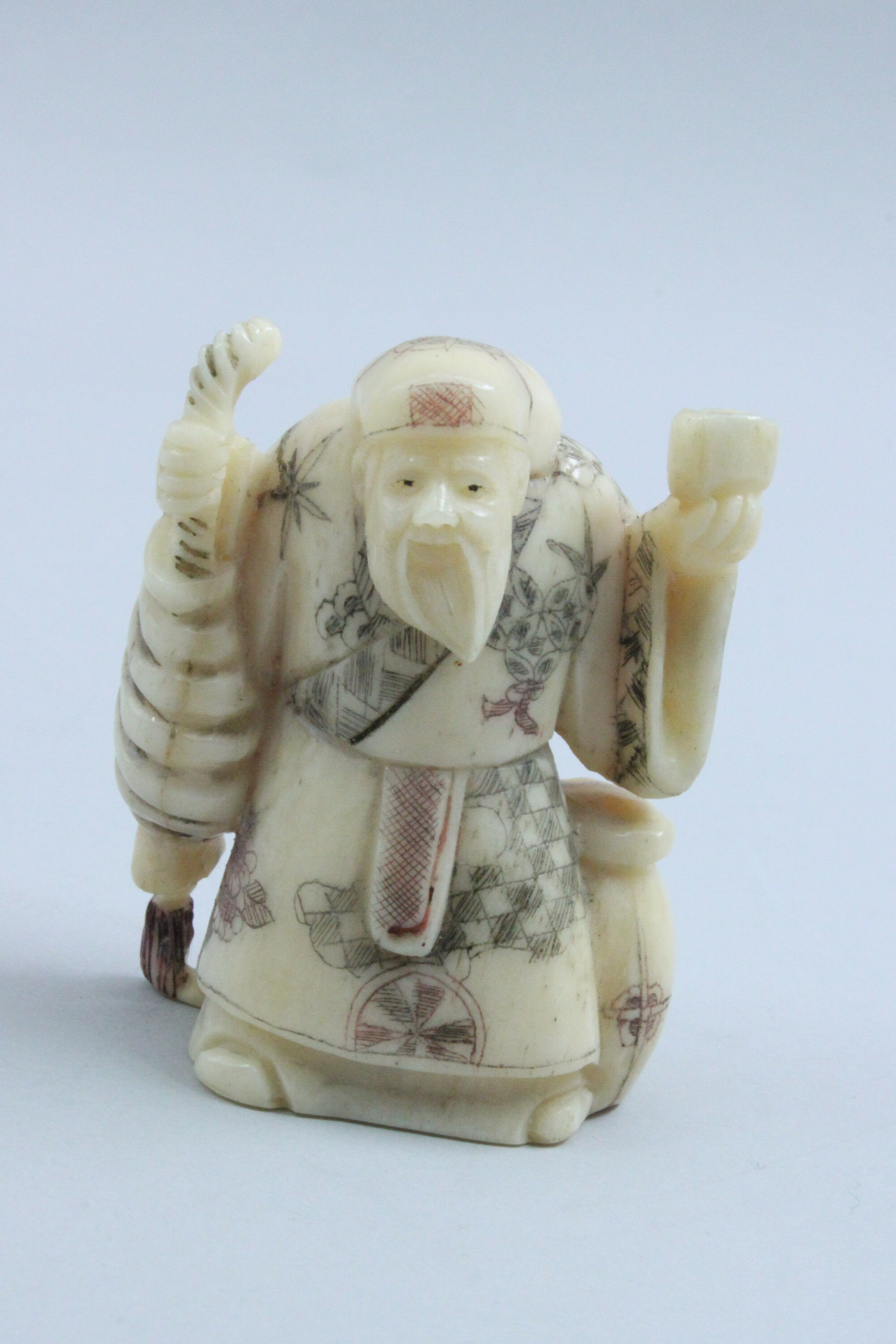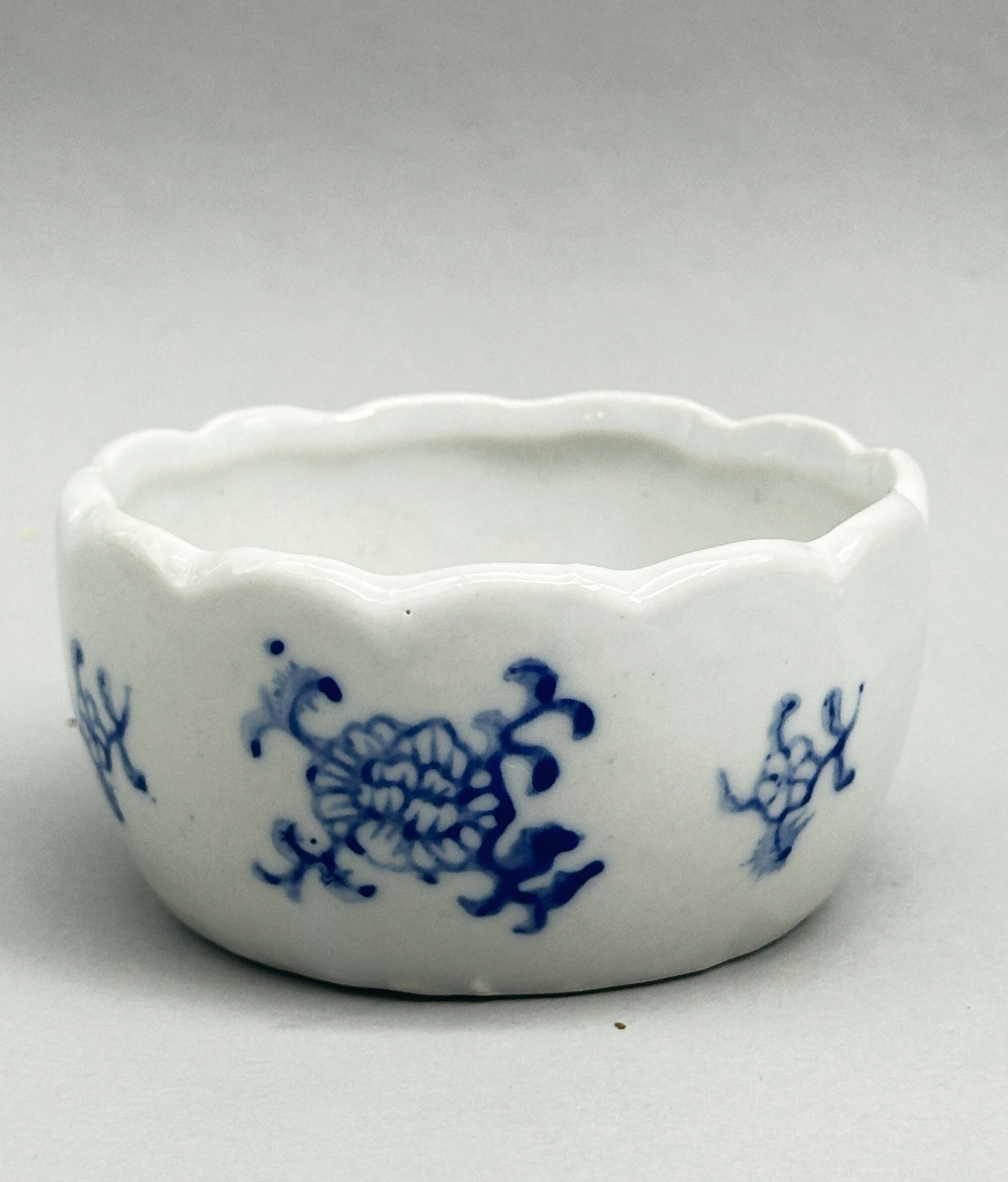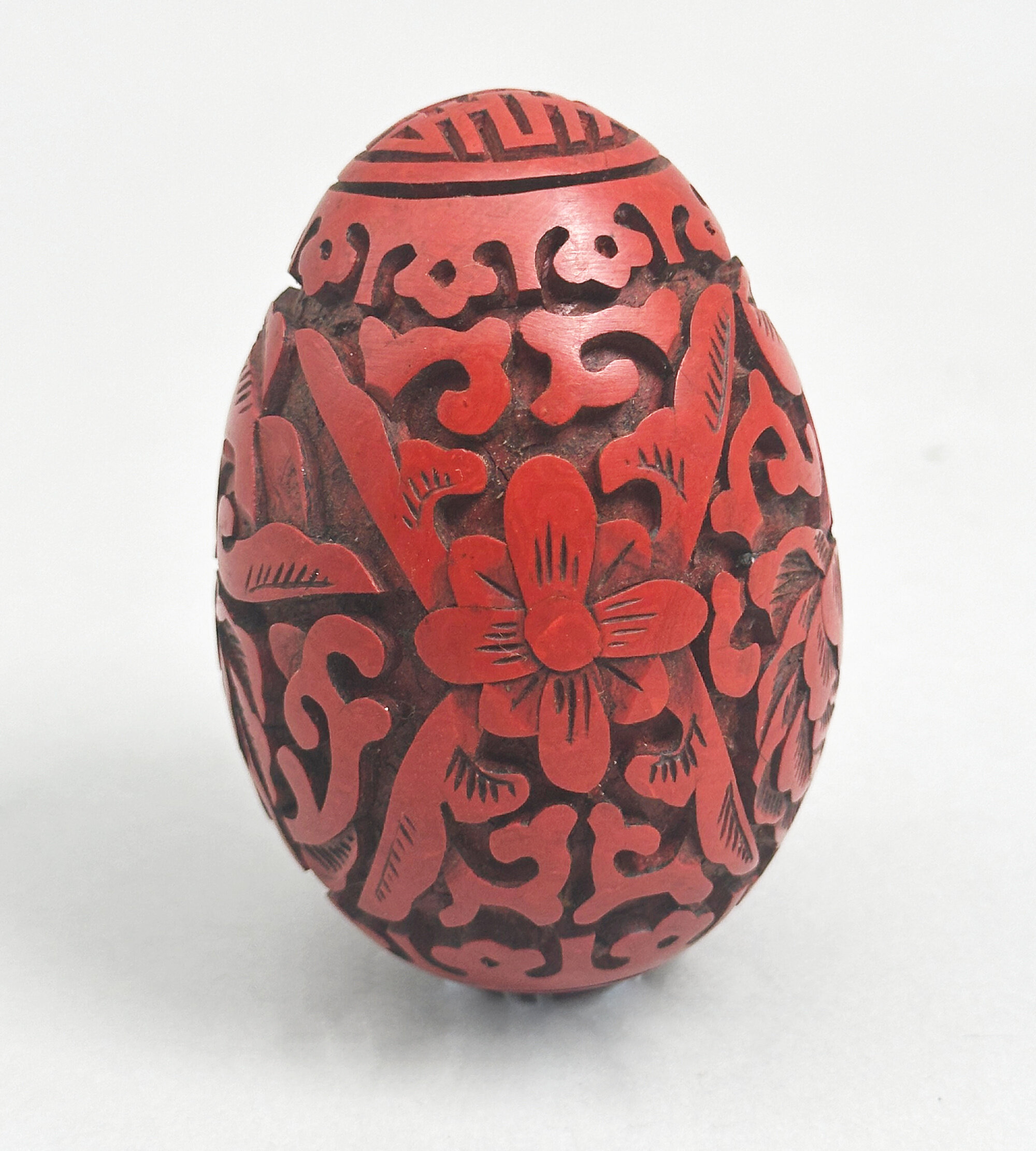
Chinese Cinnabar Lacquer Egg, C20th
Price: £55
Nesting Set of Four Small Brass Trays with an engraved designs of Bats, Chinese C20th
Price: £30
Stunning rope and tassel necklace, signed, c1990
Price: £45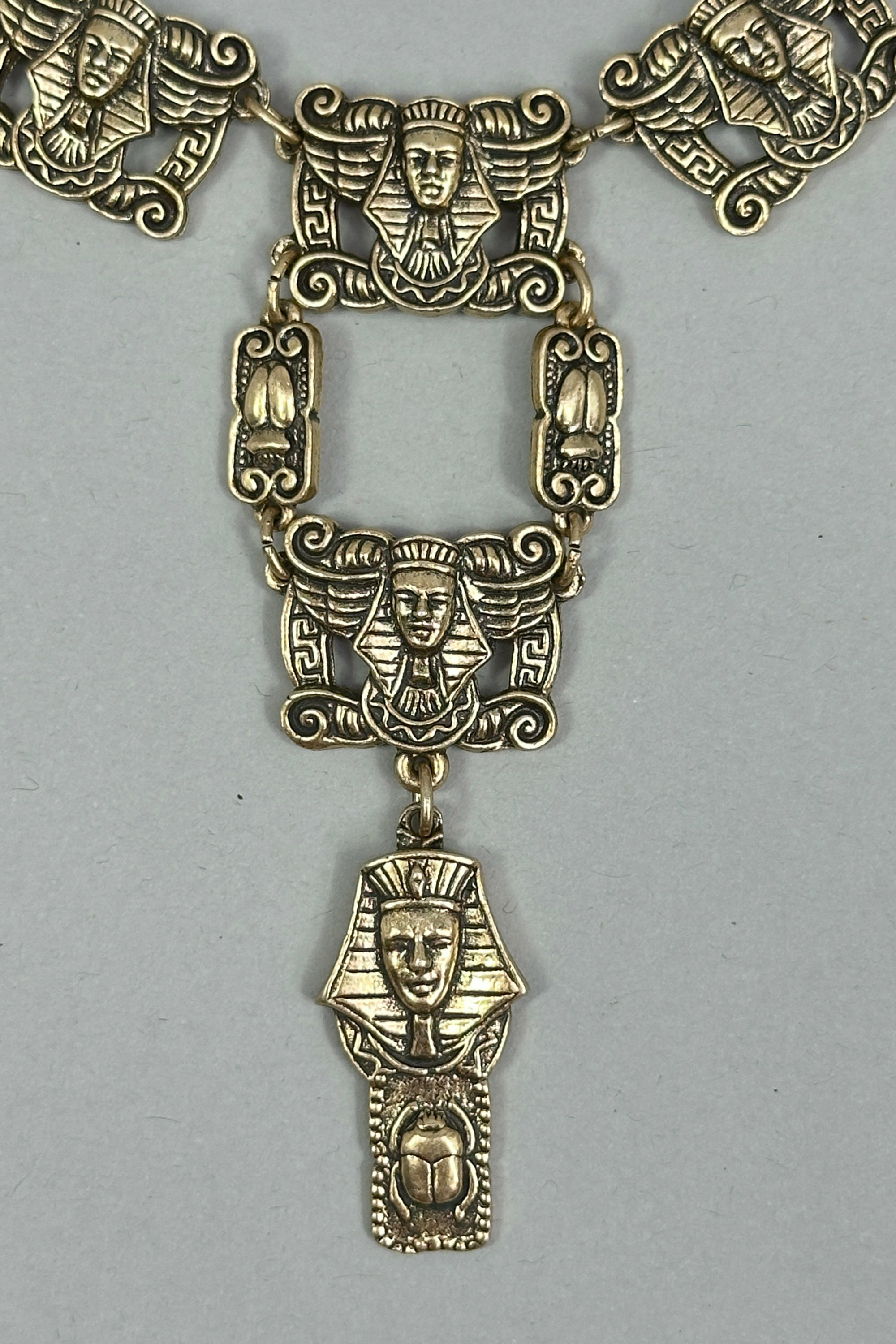
Egyptian Revival necklace depicting Tutankhamun c1980
Price: £45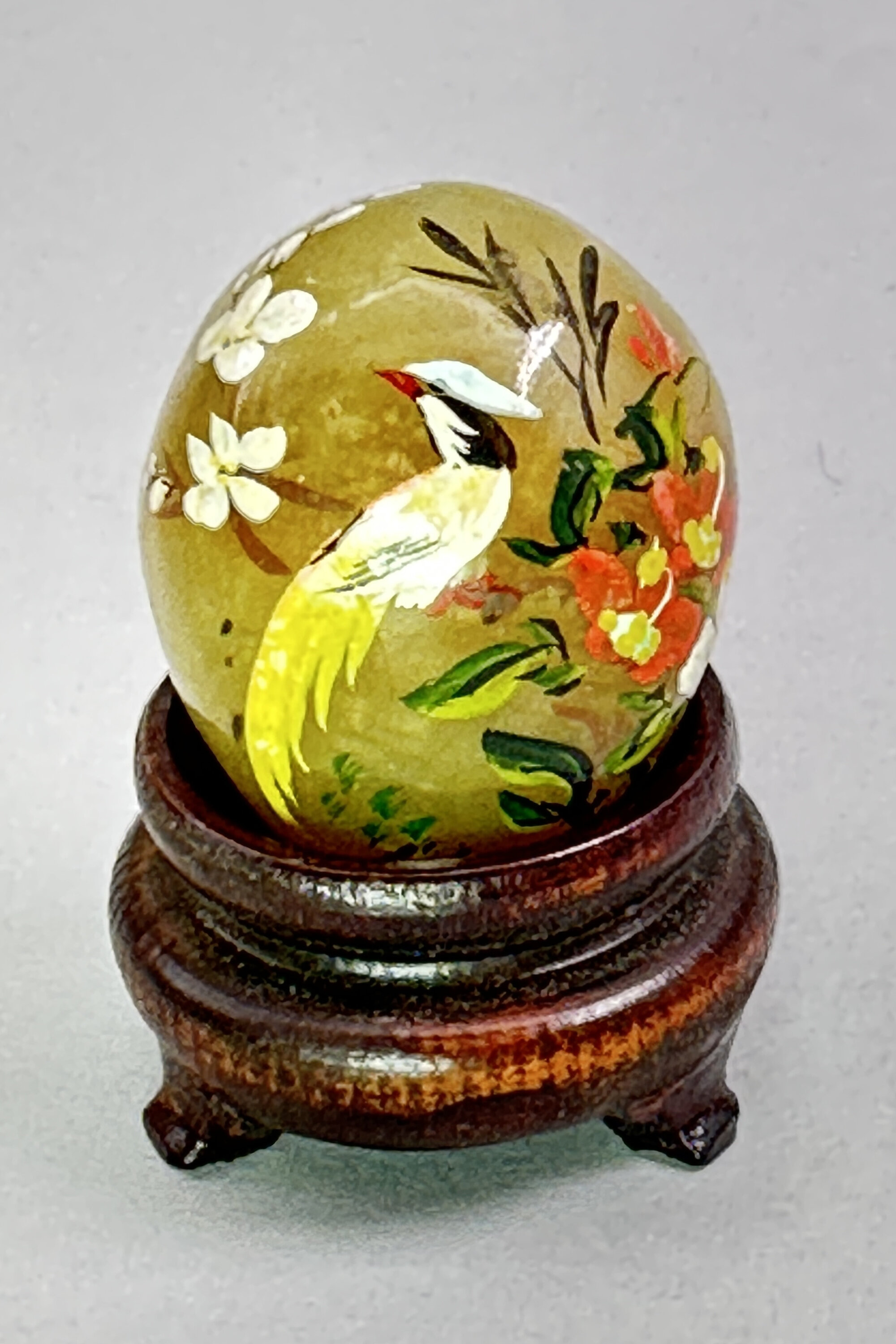
Brown Alabaster Egg painted with a bird and flowers, fitted wood stand, Chinese C20th
Estimate: £10 – 20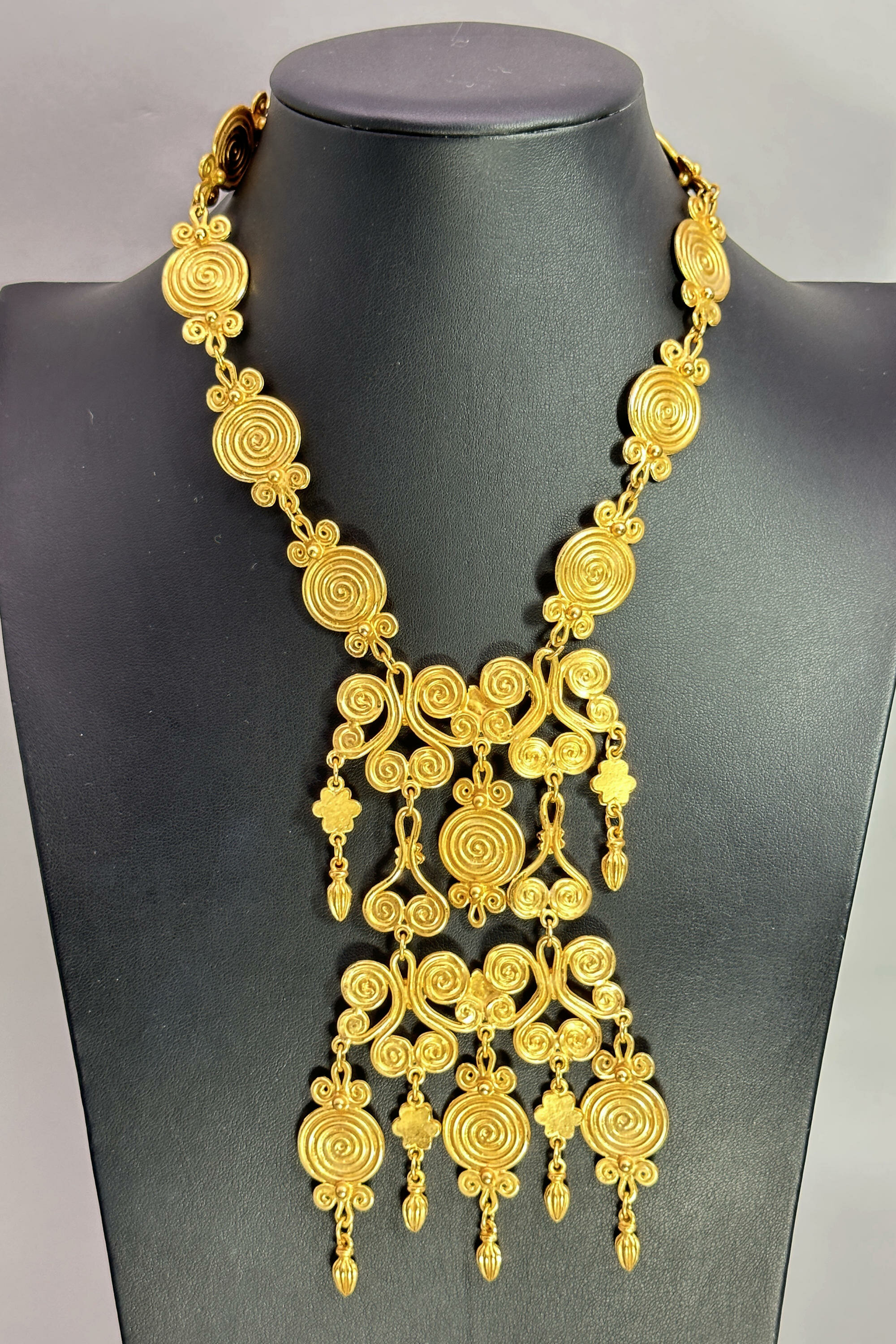
Statement necklace in the manner of Lalaounis c1990
Price: £75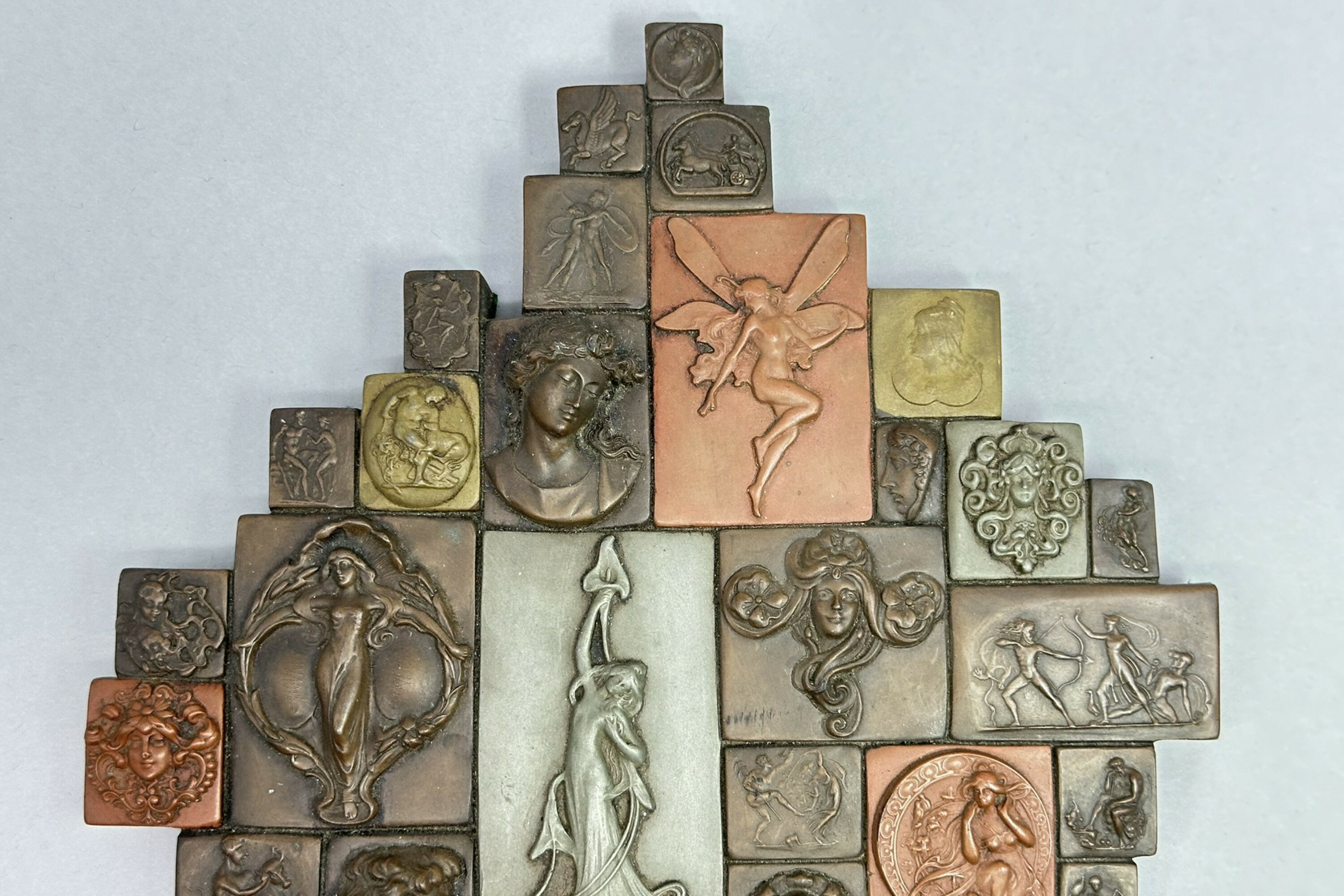
Wall plaque by Giovanni Schoeman depicting classical style figures, 1970s
Price: £75While Art Nouveau in style, Schoeman only perfected these techniques in the late 1960s, producing pieces in the style from a studio in Kentish Town which sold well in the London outdoor art markets. In the late 1970s, Schoeman moved to America with the intention of producing large scale art but the venture foundered and he died in 1981. This plaque, of which other examples are known, must have been one of his most popular designs in those London years and is a striking example of the techniques he developed and mastered.
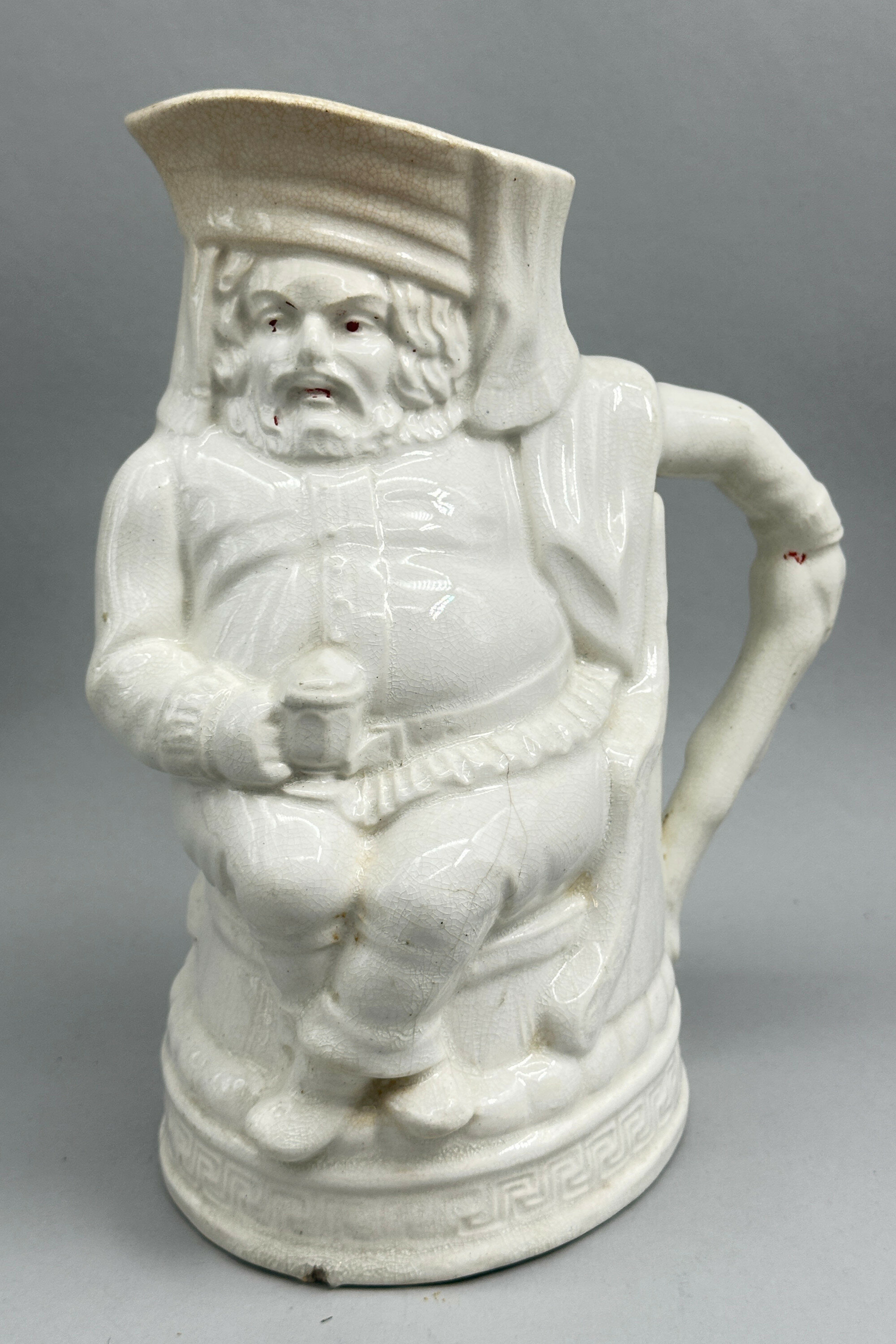
Earthenware Jug, Falstaff or Old King Cole, Furnival and Clark, mid C19th
Price: £75The design for this jug, usually termed ‘Falstaff’ but sometimes ‘Old King Cole’ is known to have been registered (Rd.No. 32601)by the firm Furnival and Clark on December 30th 1845. This was a very short lived partnership between Thomas Furnival and Richard Clark, based at the Stafford Street Pottery Works, Hanley, Staffordshire and which traded from 1844 to 1846 apparently producing just this one model, albeit in a variety of colours. Thomas Furnival had been involved in other firms before this brief venture and was to be involved in others afterwards. The dating of these mugs is usually attributed to the short period when Furnival and Clark traded but it is quite possible that more pieces were produced afterwards by Furnival himself. The paste and finish of this piece, though, which is not marked, certainly suggest a mid nineteenth century dating. In general, the model is quite rare. Some examples were fitted with a Britannia metal or pewter lid but this was never integral to the piece. This striking composition, then, is a rare and desirable item collectors with an interest in British Staffordshire wares.
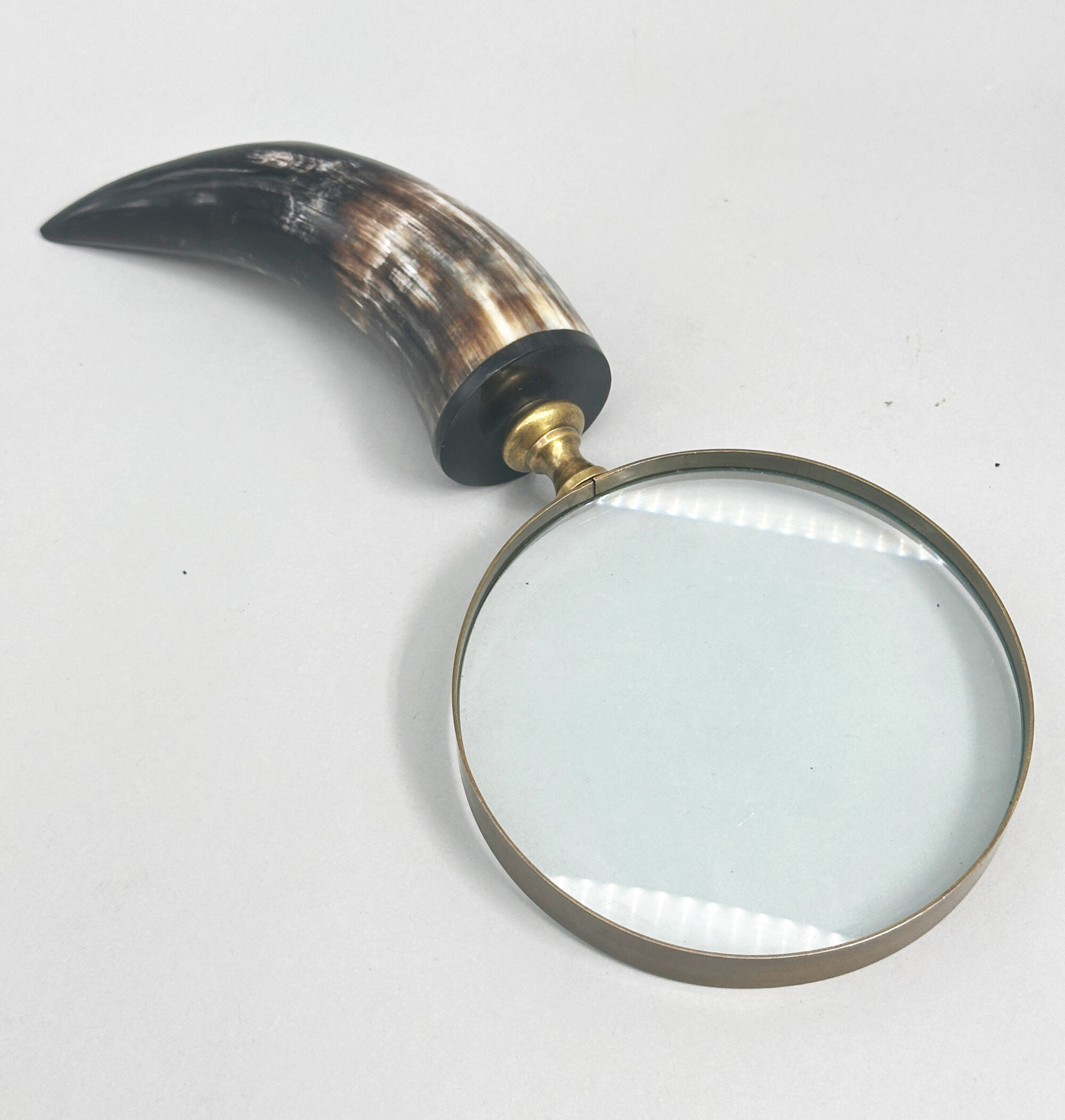
Edwardian large text magnifying glass with horn handle, early C20th
Estimate: £30 – 40
Japanese Kutani Shell Shape Dish, circa 1880
Price: £45Kutani (the word means 'nine valleys') porcelain was made at various factories in the former Kaga province of Japan. The earliest pieces were in a completely different style employing a palette of colours emphasising green, the so called 'Ko Kutani'. Production of this ceased around 1730, and manufacturing was not revived until the early nineteenth century when the more familiar colourings of iron red and gold were introduced. Many pieces were exported to the West in a variety of forms including vases and wall plates. This shell dish is more unusual; the shape is more normally found in Chinese ceramics. Perhaps one of an original pair, this dish, like its Chinese counterparts, was probably intended as a serving dish and could even be used as such today although it can well stand as a decorative item.

Ceramic and Bronze figure of a Blue Tit, Albany Worcester, late C20th
Price: £35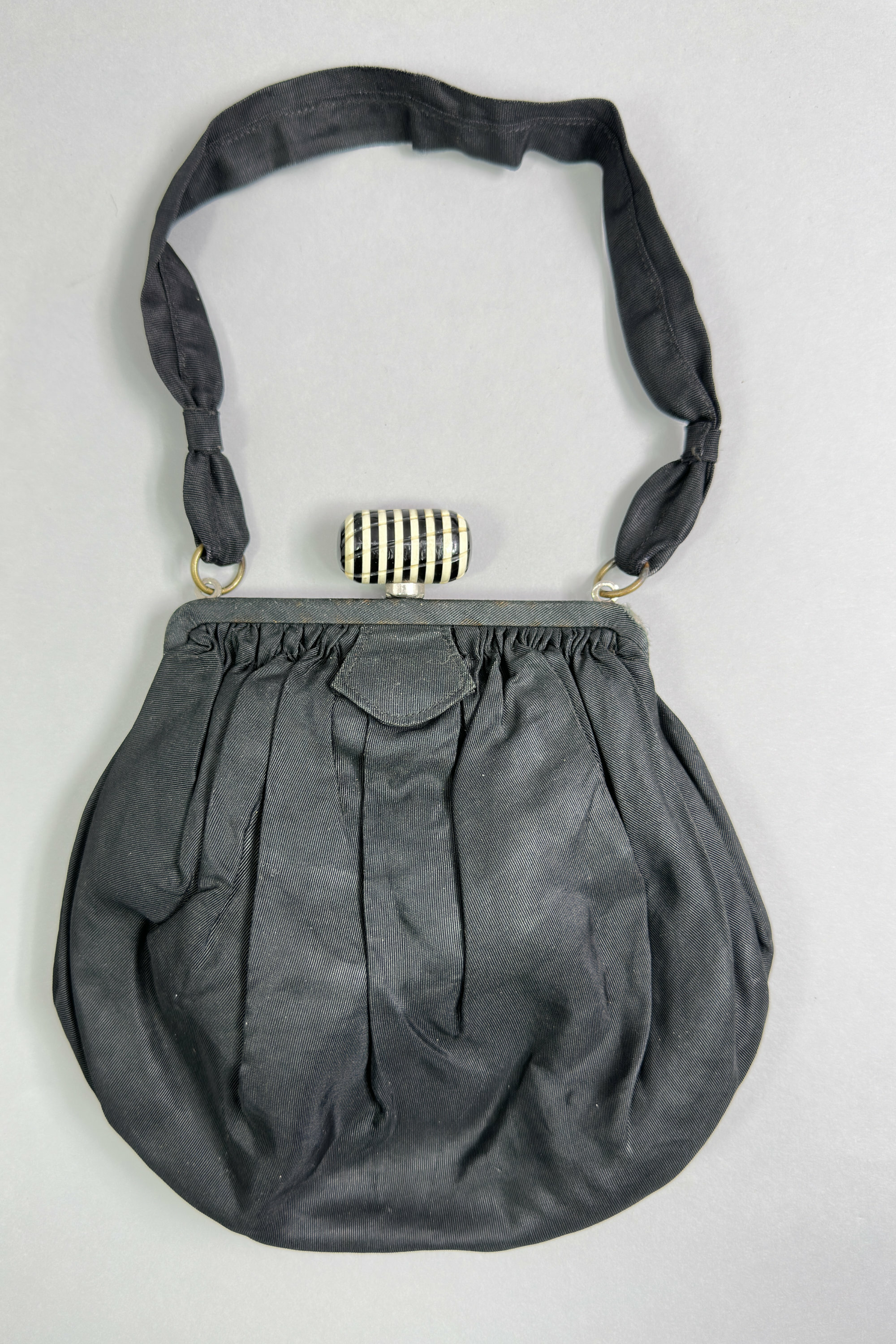
Small Art Deco wrist bag with Bakelite closure, French 1920s
Price: £35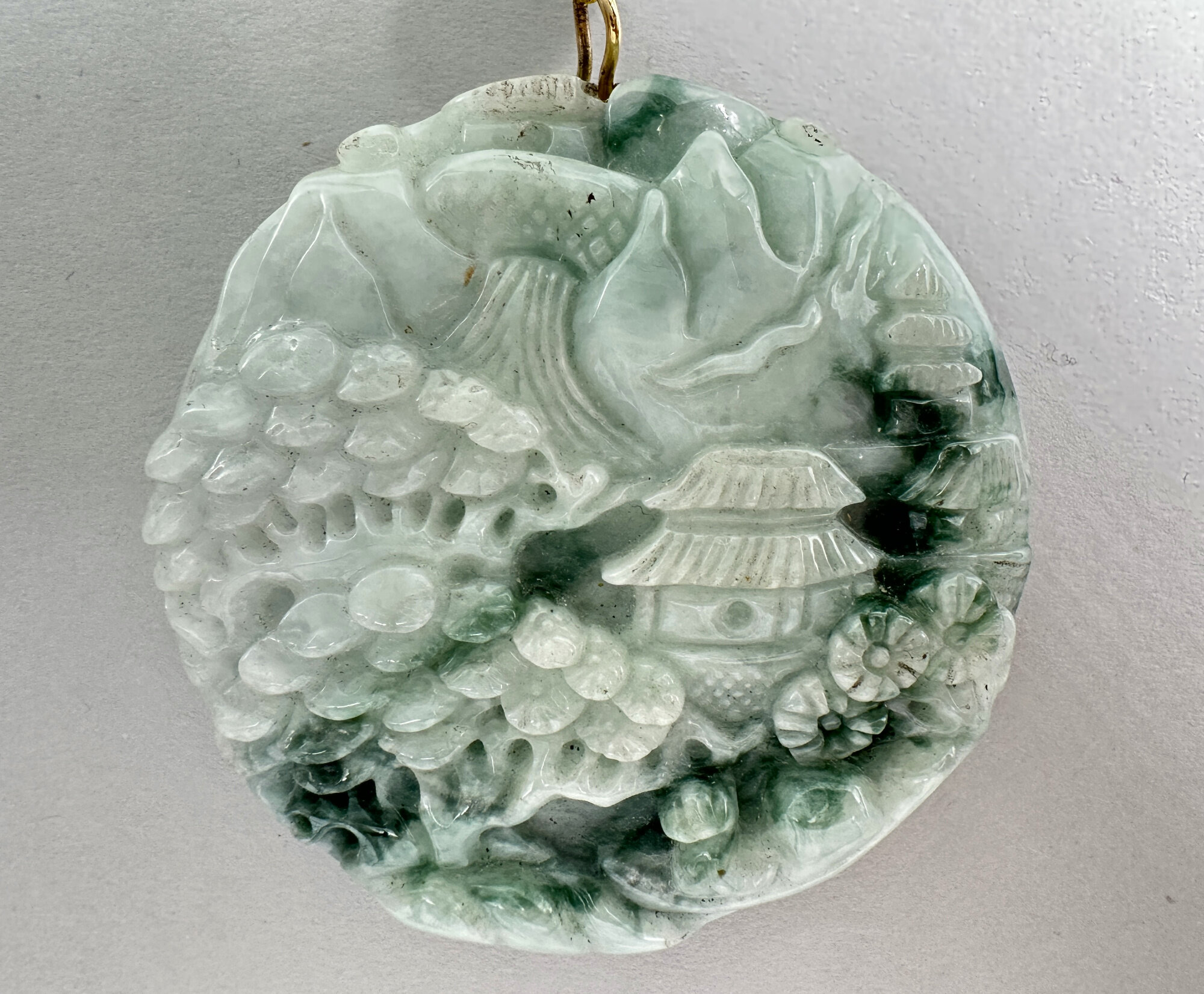
Floating Flower jade pendant on bead necklace
Price: £175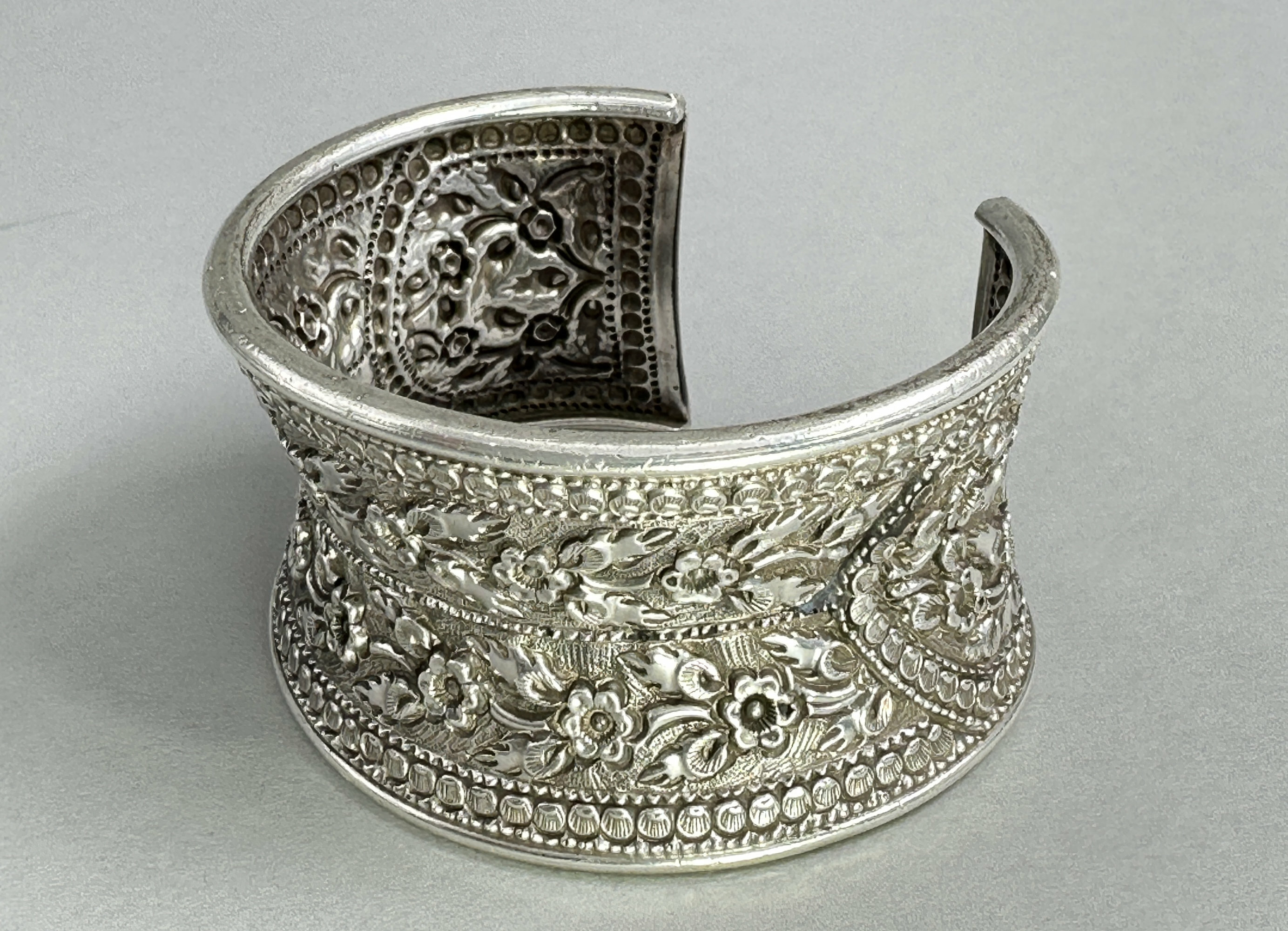
Indian silver repousse cuff bracelet, c1920
Price: £85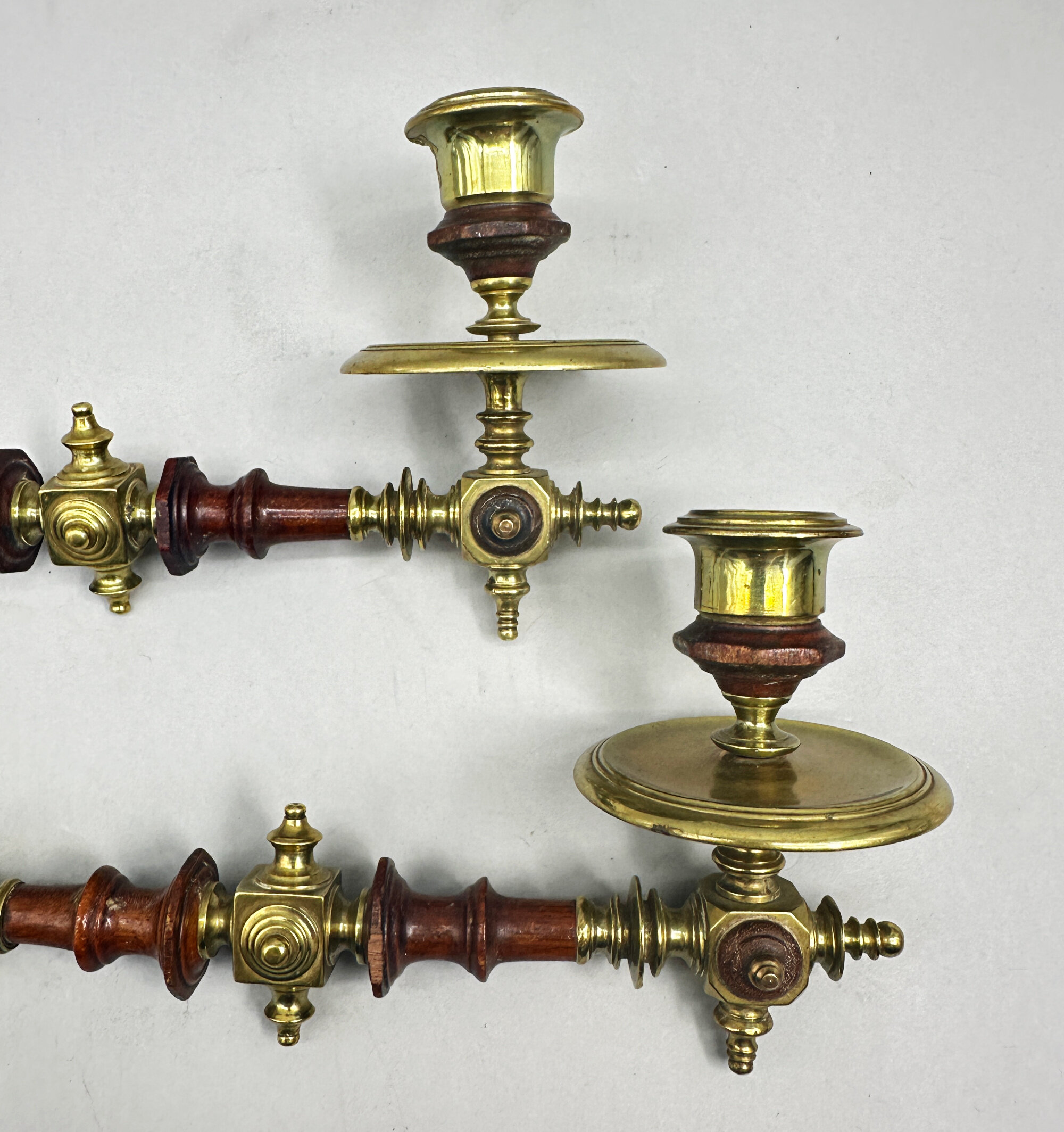
Art Deco piano sconces c1920
Price: £85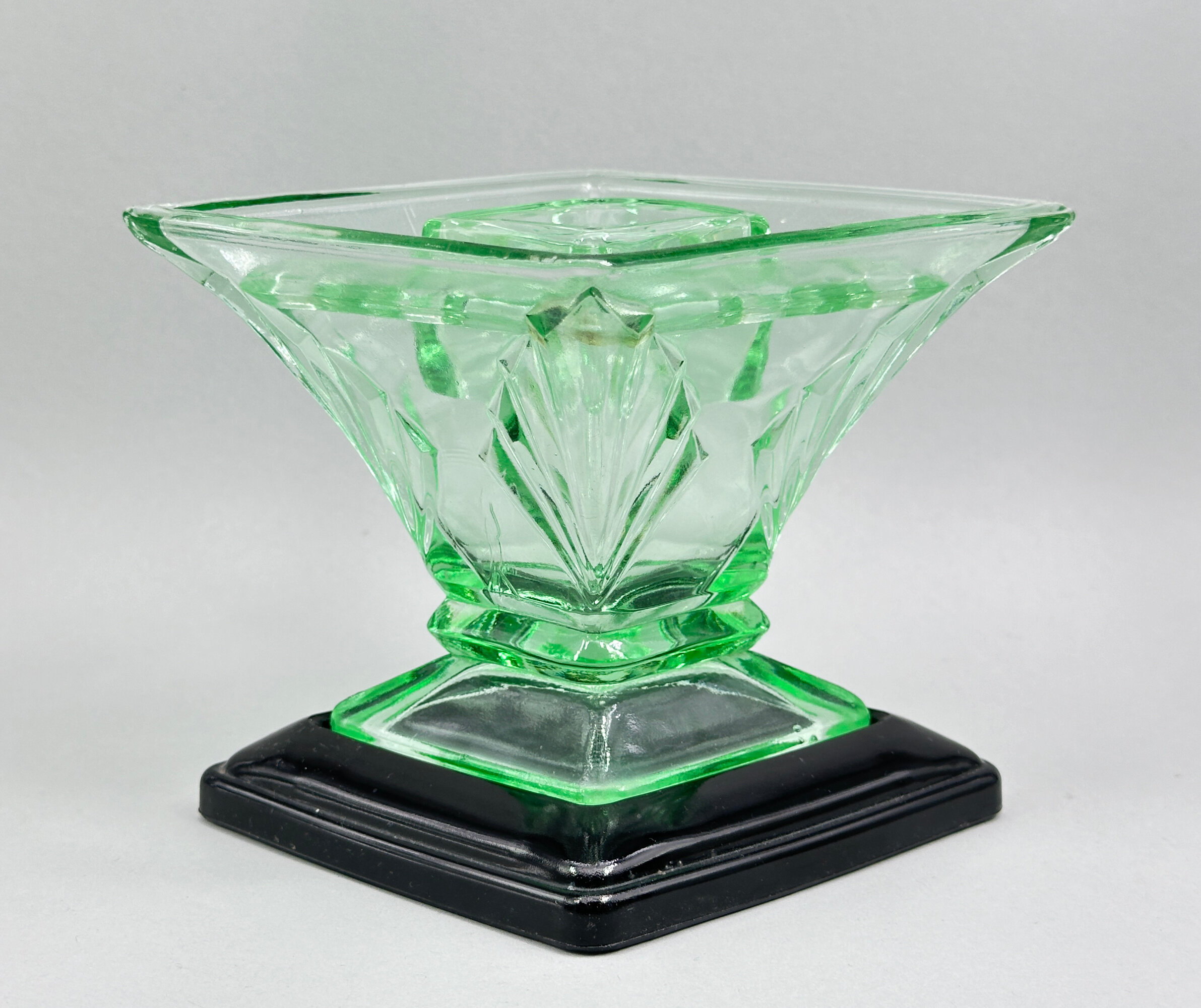
Art Deco Flower Vase, Frog and Stand, Bagley Glass, Spinette Range, 1930s
Price: £45Bagley Glass was established in Knottingly, England (south east of Leeds) in 1871. Bottle makers at first they branched out in 1912 and opened a department 'The Crystal Glass company' which made crystal and pressed glass. But it was for the latter that Bagley were to become famous and they became the biggest manufacturer of pressed glass in England in the years before and after the war. Many of their designs were influenced by the Art Nouveau styles and this flower vase, unusually presented complete with its frog and stand, is a classic example of their range.
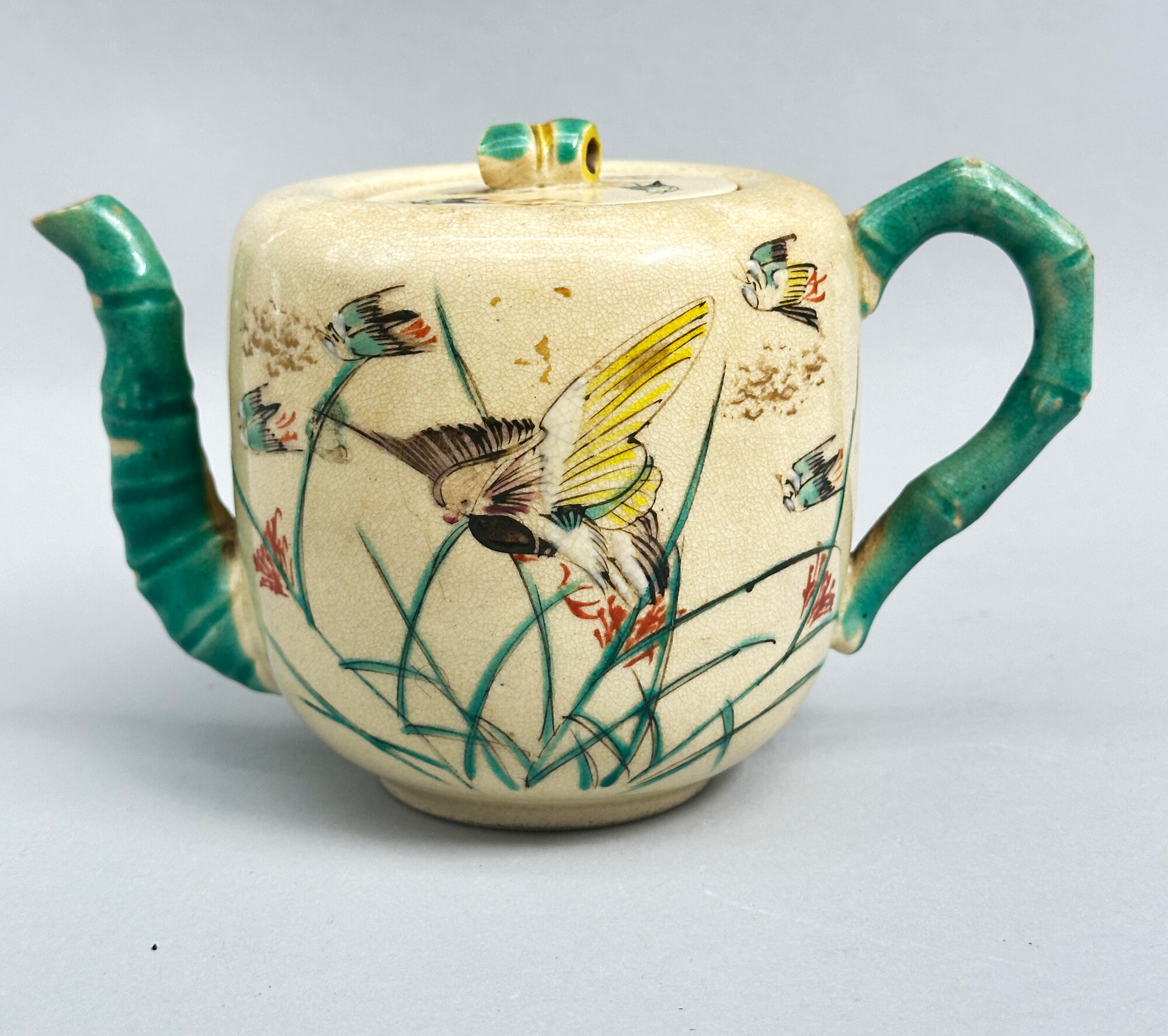
Japanese Awata ware Teapot and Cover, signed, circa 1900
Price: £25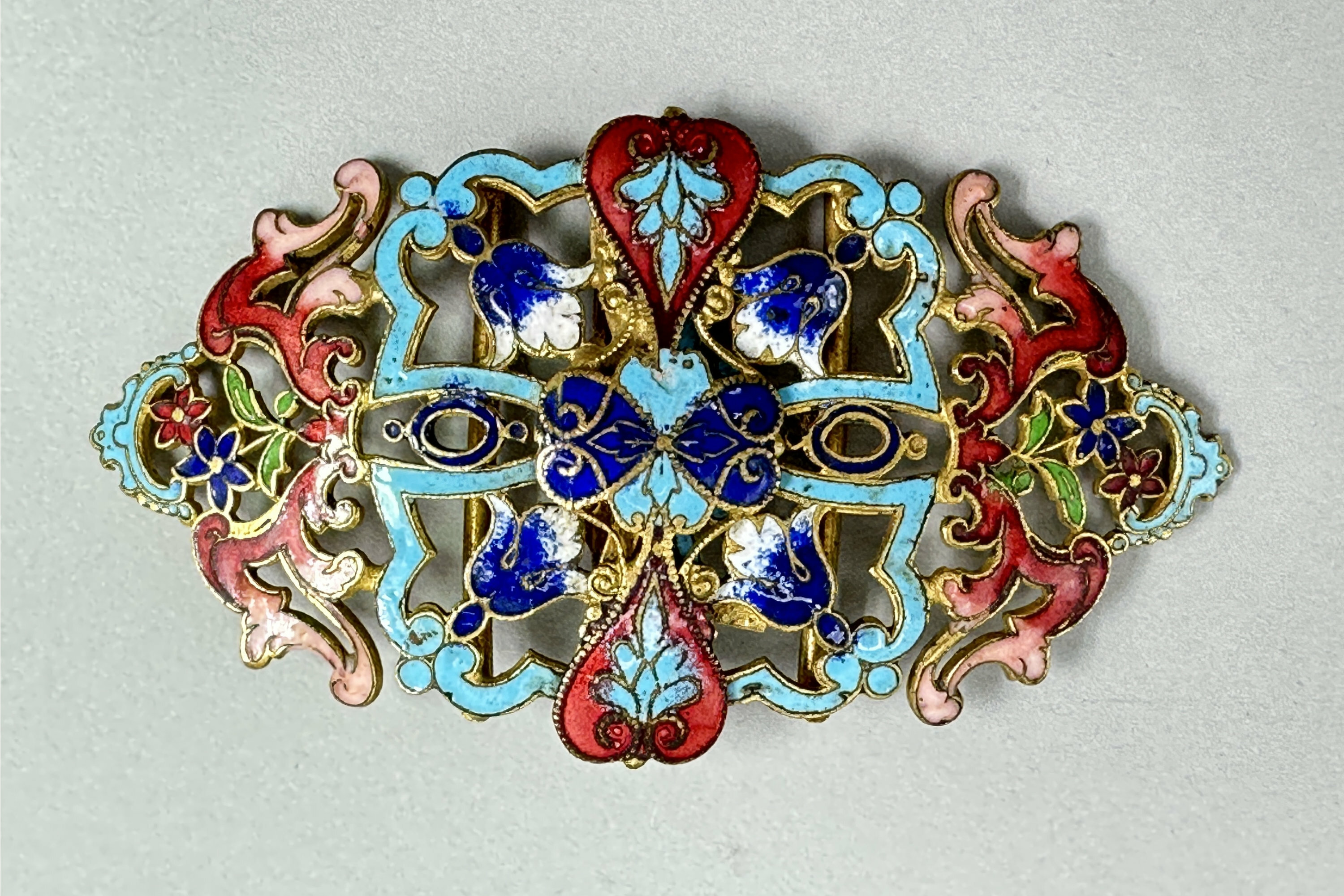
Victorian enamel buckle c1900
Price: £45
Paris tourist novelty bracelet c1950
Price: £35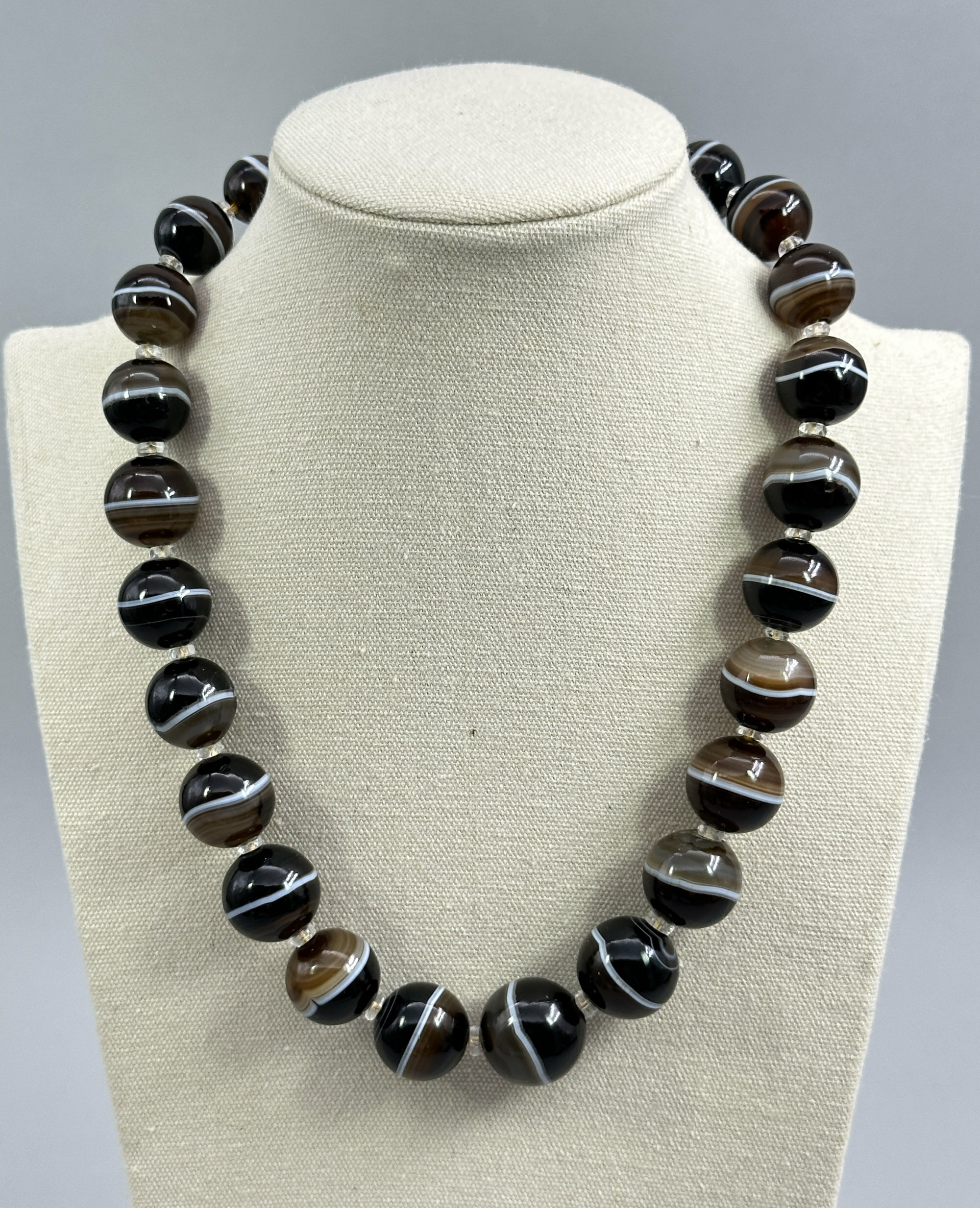
Victorian set of matched Scottish agate beads c. 1880
Price: £450
A very finely carved white pendent on traditional silk cord, Modern
Price: £25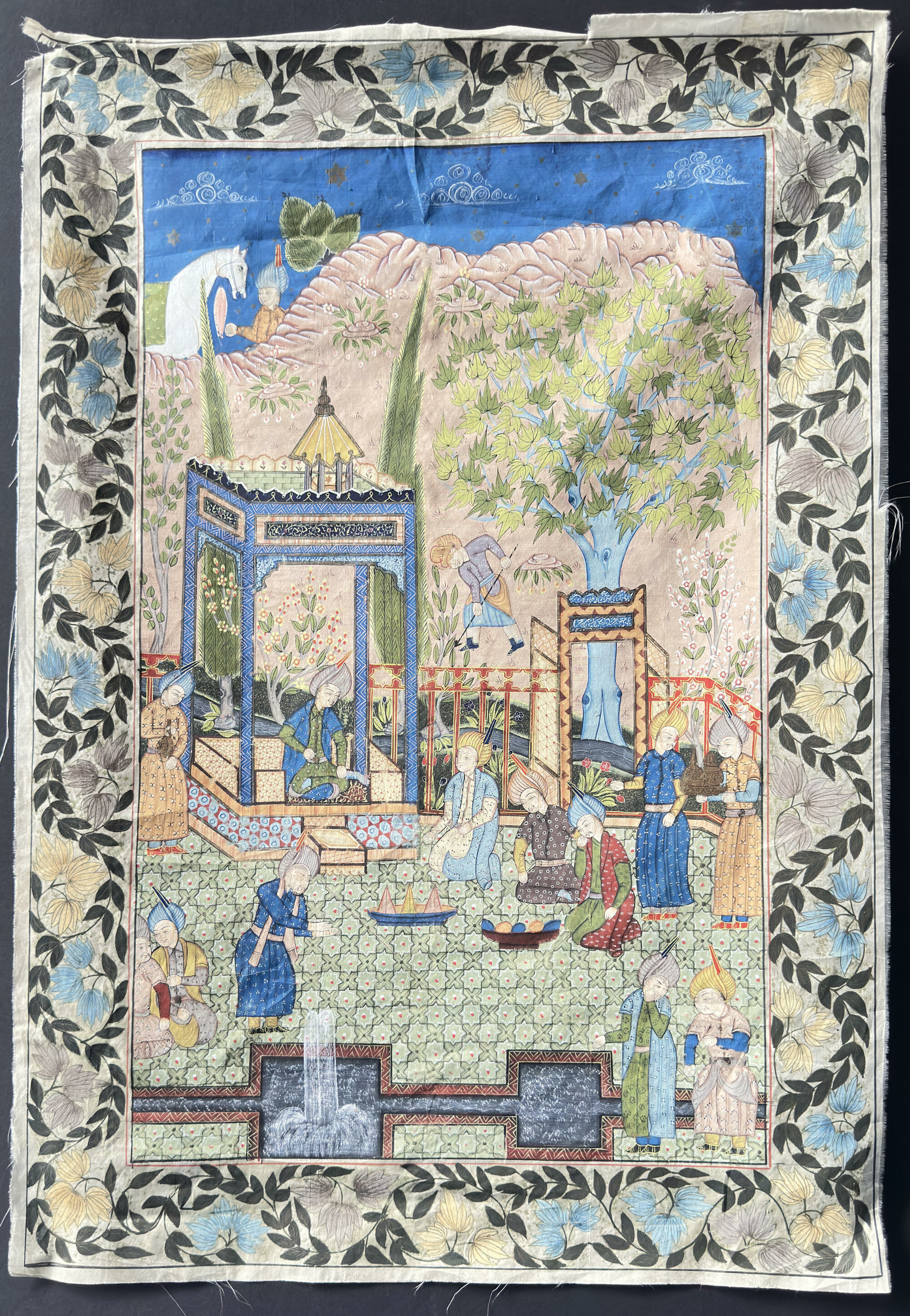
Persian Painting on Silk depicting Courtiers in a Palace Scene, C19th/C20th
Price: £75The ‘Khamsa’ (Quintet or Quinary) is the best known work of Nizami Ghanjavi (c1141 – 1209) considered the greatest romantic epic poet in Persian literature. It comprises five long narrative poems the first of which is ‘Makhzan-ol-Asrar’ (The Treasury or Storehouse of Mysteries) and contains an episode where two physicians agree to fight each other with poison: each would give the other a poison and the doctors would then attempt, by their skill, to provide an antidote. One doctor succeeds but the other has less luck and in the version of the scene mentioned above is depicted lying ill on the ground.
The Khamsa was a popular subject for lavish manuscripts illustrated with painted miniatures at the Persian and Mughal courts in later centuries. The British Museum picture mentioned above, for example, comes from a manuscript created for the Mughal Emperor Akbar in the 1590s. Scenes from these works were then copied or adapted in turn by Persian artists in the late nineteenth and early twentieth centuries which is what we have here. The quality of the execution remains high producing a highly decorative example of the best Persian work.
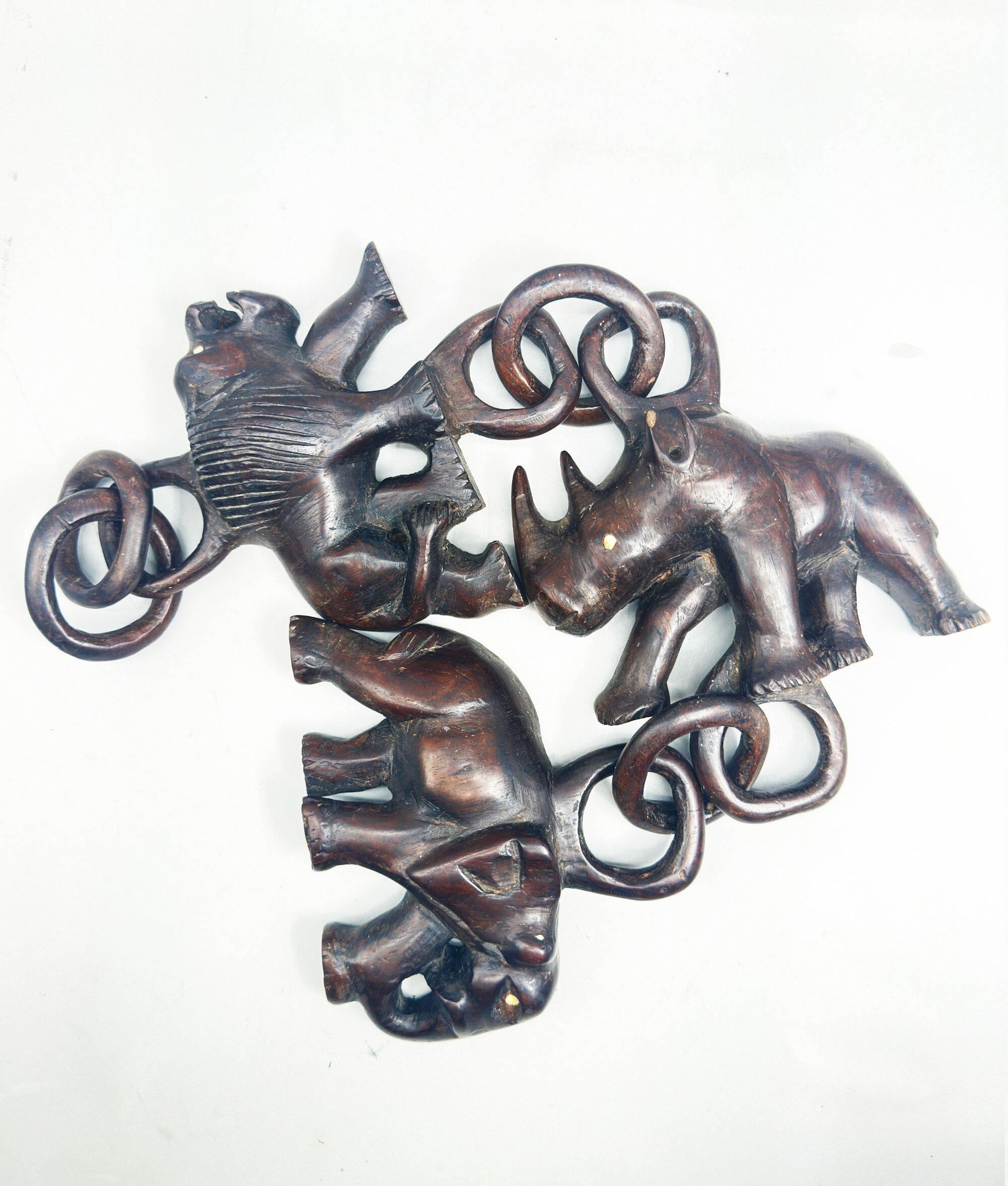
Large African wall decoration carved from one piece of ebony wood c1950
Price: £85
Victorian Rolled Gold Necklace with Pendants, late C19th
Price: £45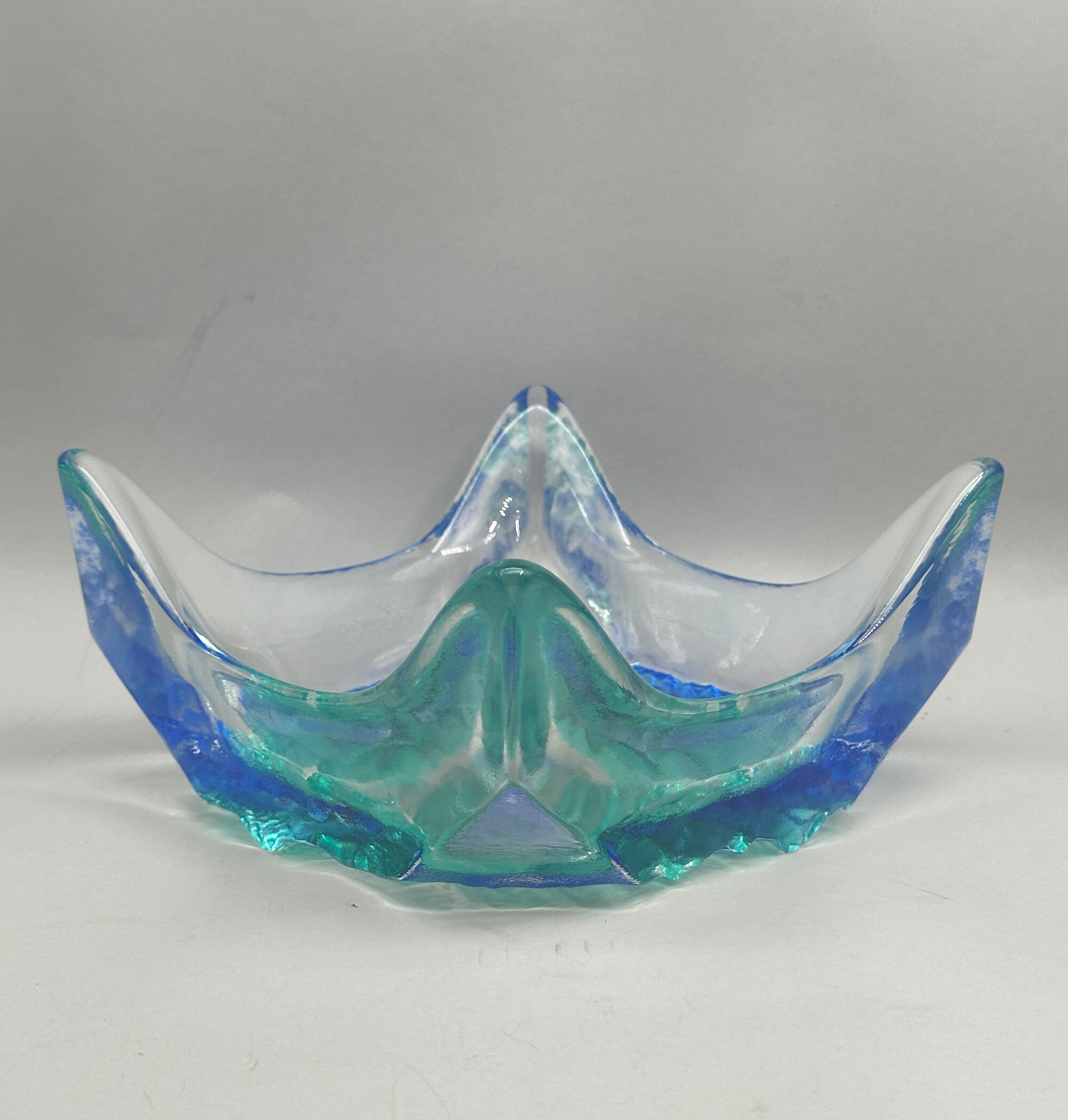
Blue and Green Ice Glass Square Bowl, possibly Pukeberg, late C20th
Price: £45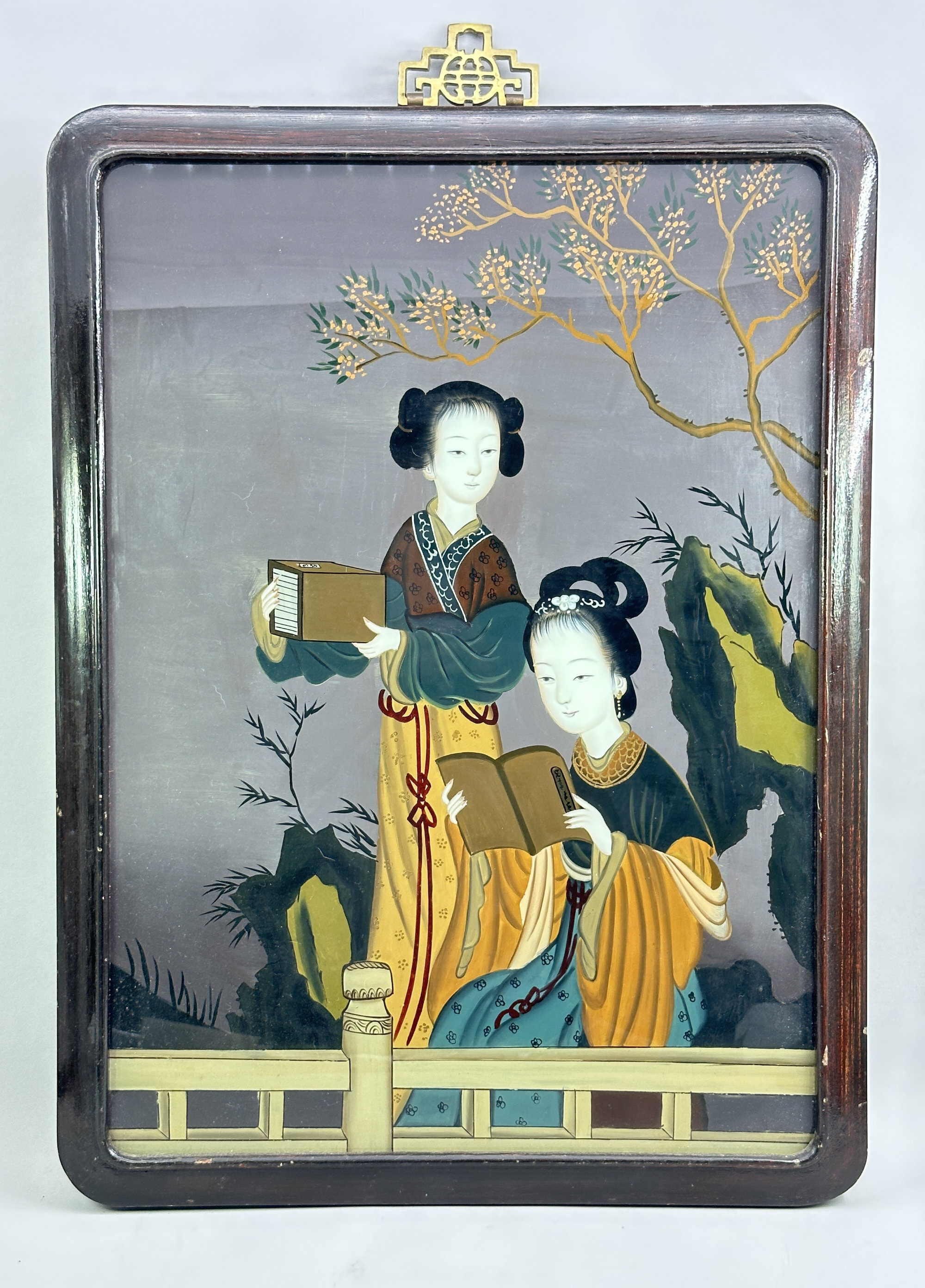
Chinese Reverse Glass Painting of Two Ladies on a Garden Terrace, first half C20th
Price: £240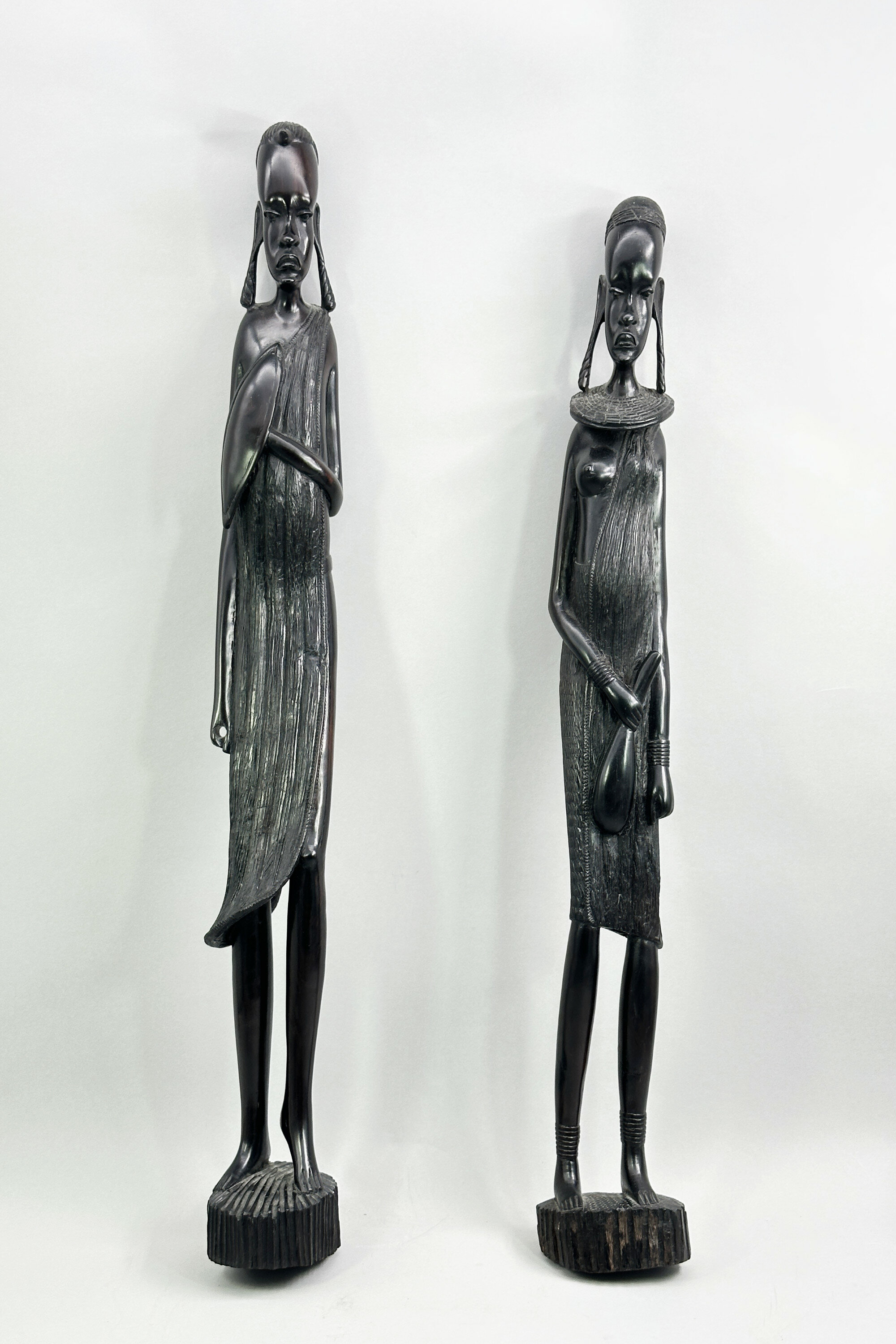
A Pair of African Ebony Wood Makonde Style Carved Figures, probably late C20th
Price: £55Maasai and Makonde are ethnic terms used to describe African peoples who live in Tanzania, Mozamique and Kenya, with their own distinctive languages, culture and art. This pair of figures is typical of the wood carvings produced by their craftsmen in the second half of the twentieth century but their quality and size is well above average, the ebony wood finely rendered with much attention to detail and finished with a highly attractive glossy patina. The two figures complement one another well, their heads slightly turned to face one another with their legs turned slightly outwards and their robes flowing almost in mirror image. The abstract style makes them well suited to a contemporary interior where they could prove a striking accessory.

Vintage Carved wood bust of a Lady, Bali, Indonesia, second half C20th
Price: £75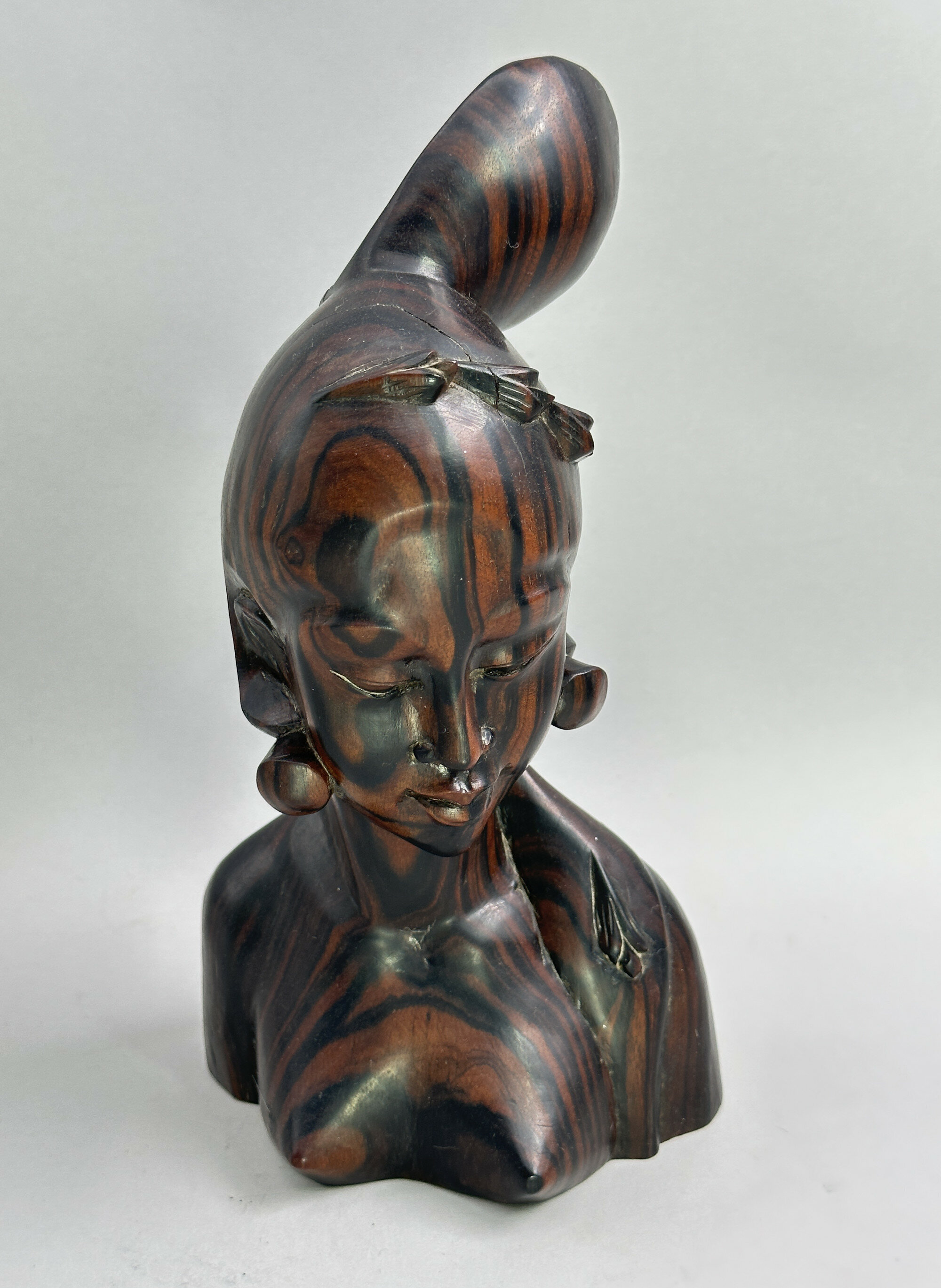
Vintage Carved wood bust of a Lady, Bali, Indonesia, second half C20th
Price: £75
Vintage Carved wood figure of a seated Man, Bali, Indonesia, second half C20th
Price: £75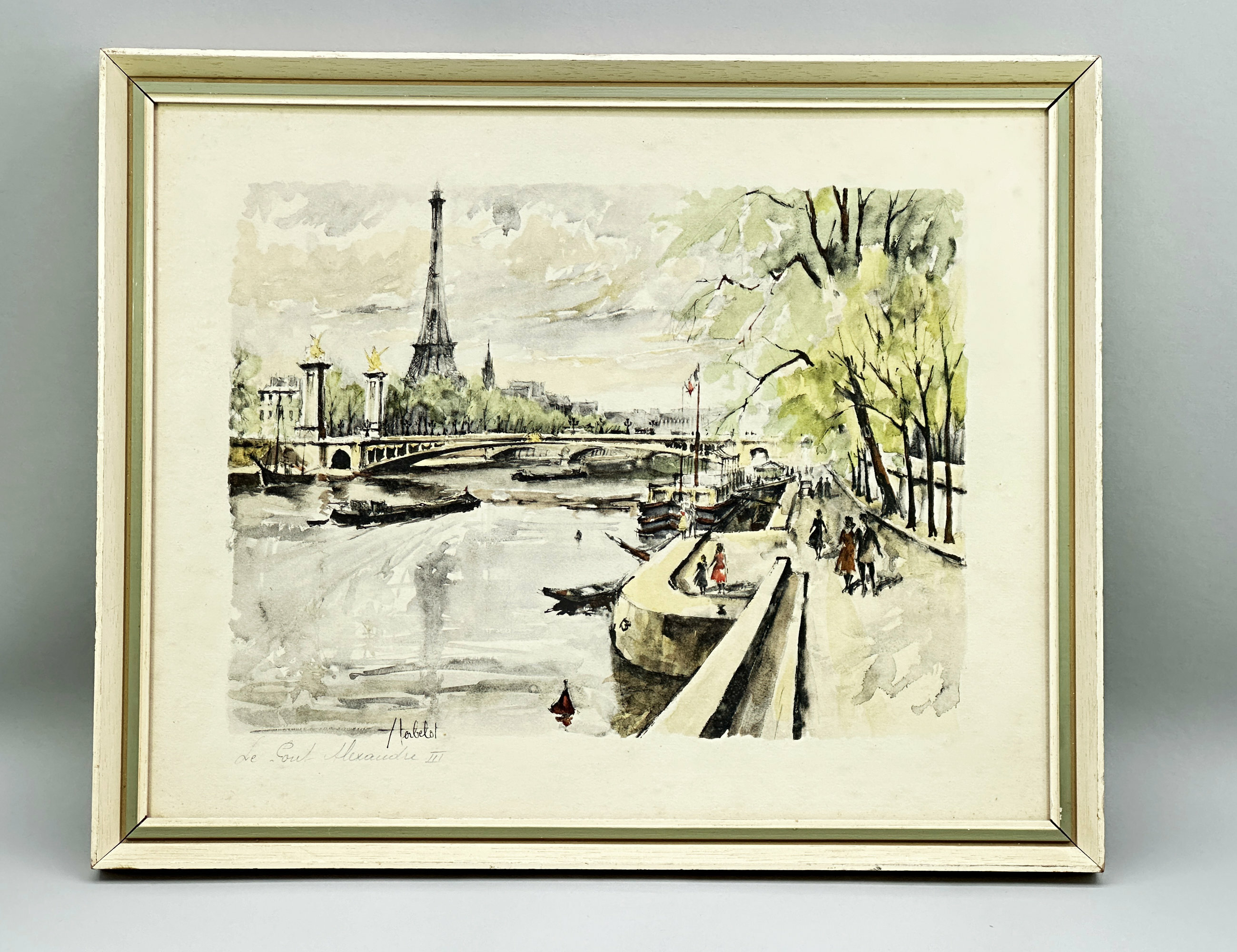
Lithograph Print, Le Pont Alexandre III in Paris, signed Herbelot, 1950s/1960s
Price: £45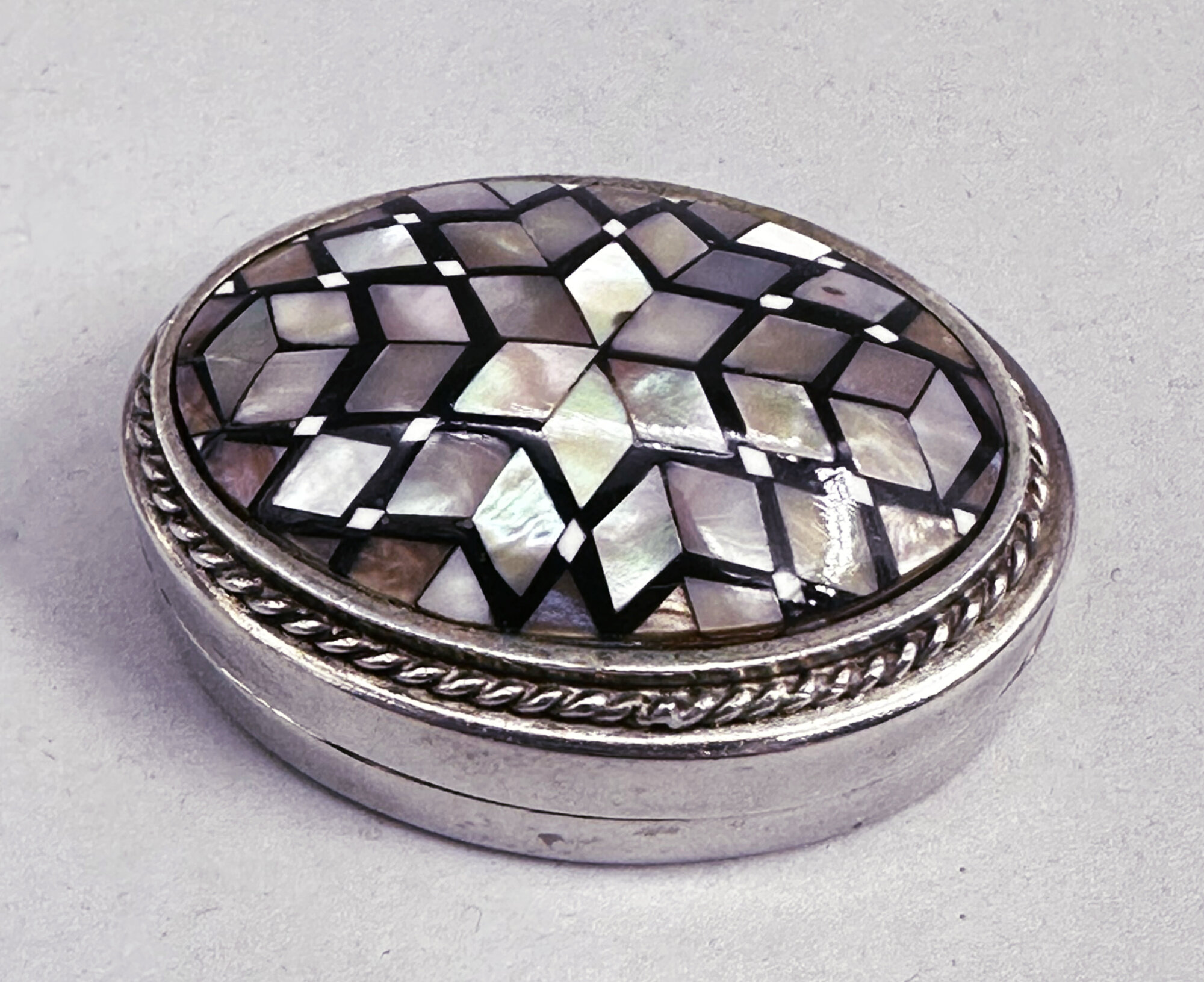
Egyptian Silver Pill Box with Mother of Pearl Inlay, marked, second half C20th
Price: £45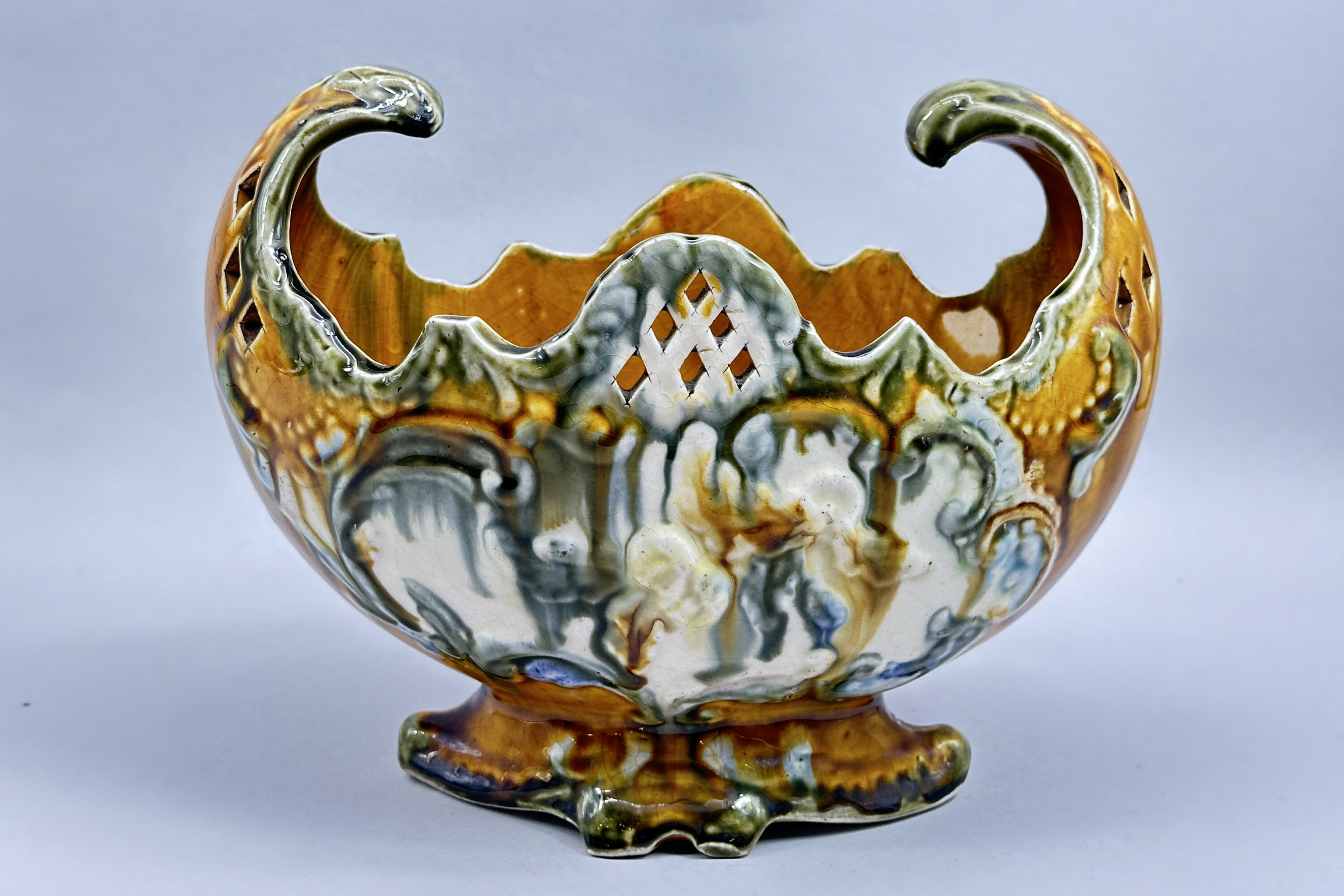
Majolica Style Jardiniere, French, circa 1900
Price: £45This is a French interpretation of the ‘Majolica’ style which became so popular, particularly in England in the second half of the nineteenth century. A very distant relation of the tin glazed Italian and Spanish wares which share the name, nineteenth century majolica employed a wide variety of brightly coloured glazes applied to elaborate forms some of which had a slightly ‘classical’ feel and some a reflection of ‘rococo’ designs. The paste and glazes here suggest France, which produced various pieces in the ‘majolica’ style and dating is probably to the end of the nineteenth century.

Vintage Brass Pocket Case with a lid, probably a Vesta case for Matches, circa 1900
Price: £55
Vintage Brass Vesta Case in the form of a Violin, circa 1900
Price: £55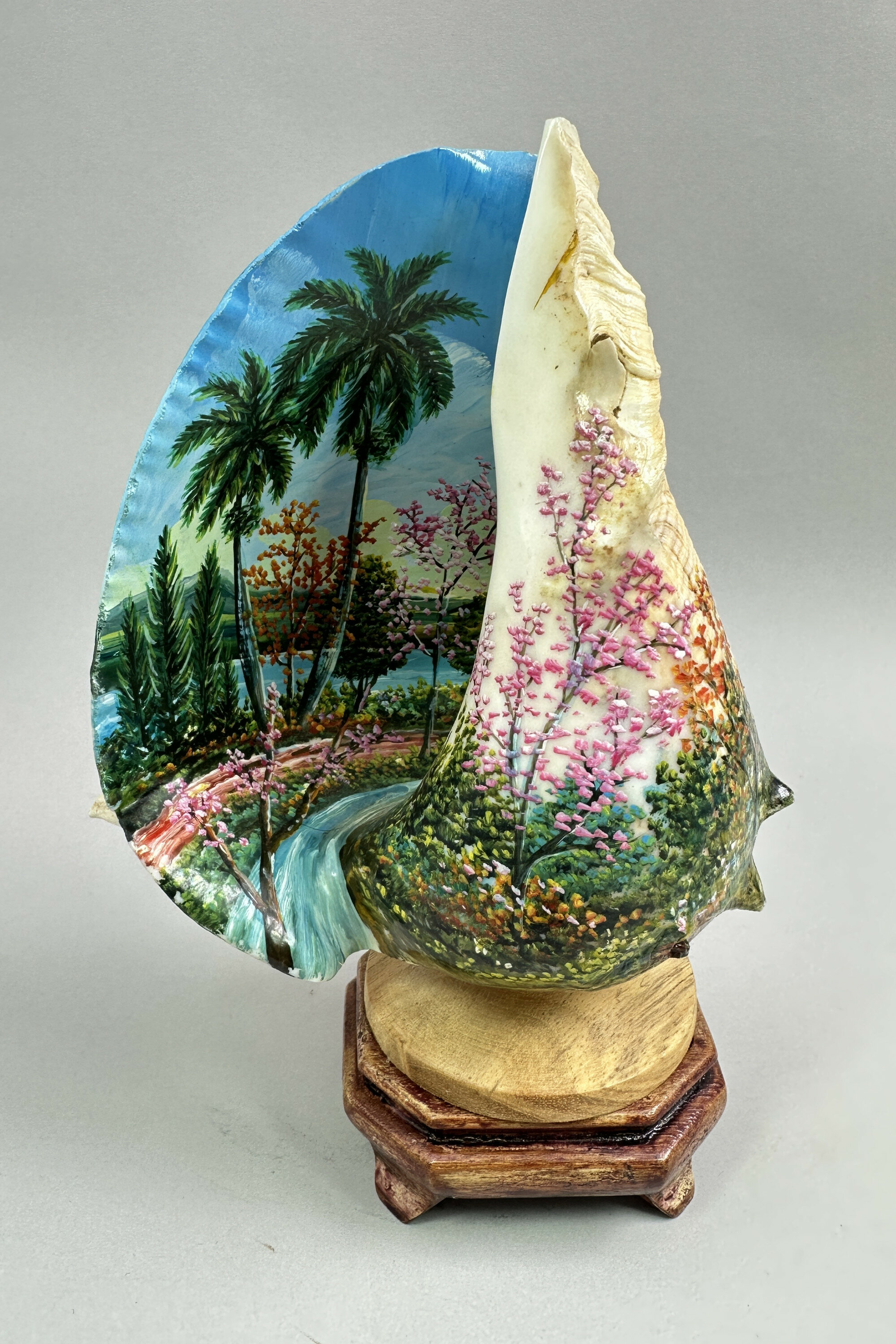
Kitsch Style Conch Shell with painted landscape decoration, C20th
Price: £45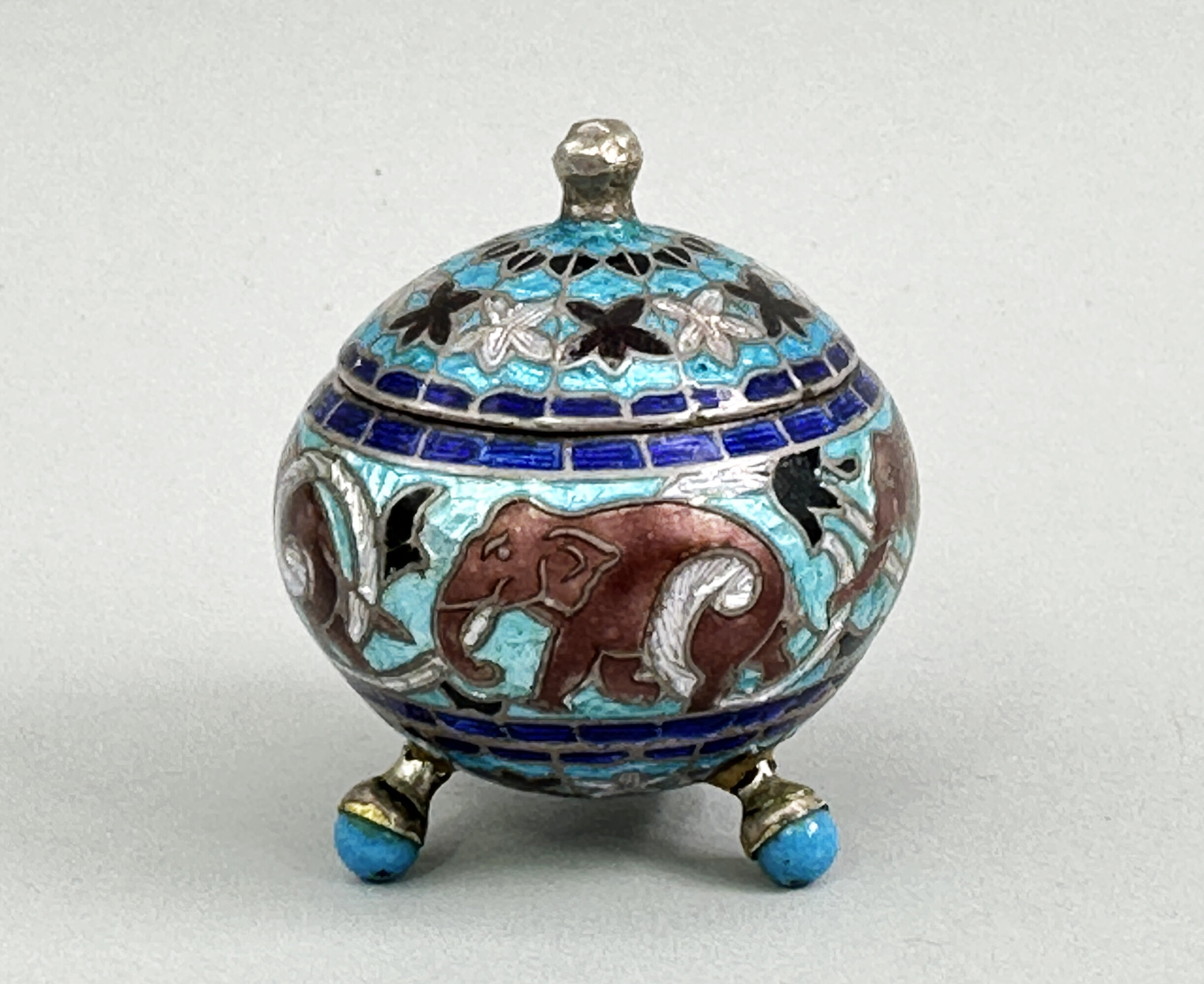
Indian Silver and Enamel pill or trinket Box, early C20th
Price: £55
Dark chestnut crocodile handbag 1940s
Price: £75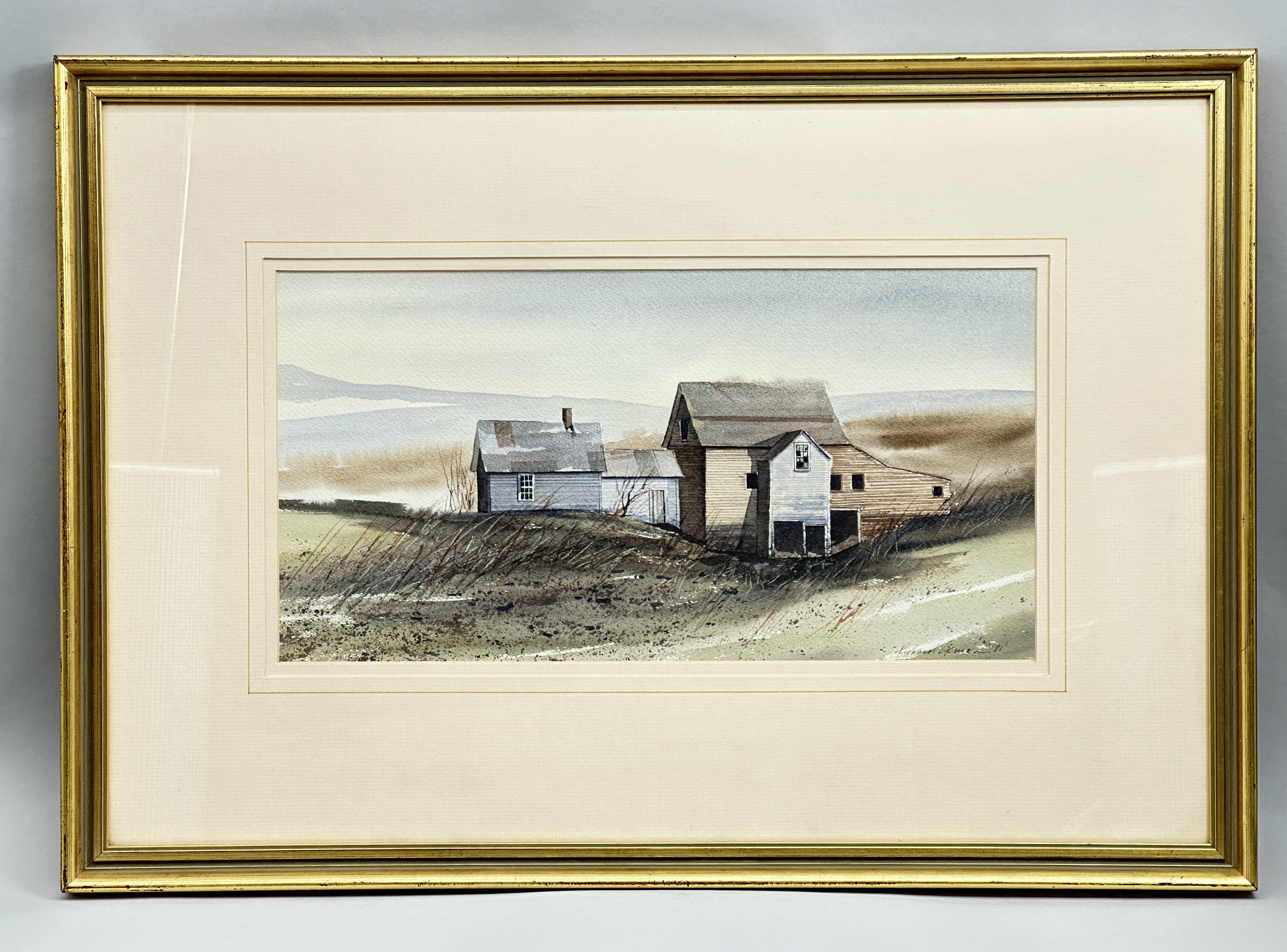
Signed Watercolour of Farm Buildings, Richard Akerman (1942-2005), dated 1981
Price: £110..............................................................................…………………………………………………………………………………………..............................…
Richard Akerman was born in London in 1942. He attended the Hornsey College of Arts and Crafts in the early 1960s, studying a general fine art course which incorporated printmaking and sculpture. His first exhibition was at the Obelisk Gallery in Crawford Street, London, where his work was displayed alongside works by famous surrealists such as Man Ray and Salvador Dali, implying that the style of his early work matched that of his more famous contemporaries. Years of travel followed in both Europe and the Far East and this seems to have turned him to painting in a more coventional style. A succession of watercolours was to follow with subjects ranging from still life and flowers to garden and architectural subjects. His work became immensely popular through the prints made from his original paintings, indeed such was the demand for them that he rivalled Monet as a subject for reproduction in this medium becoming, in a sense, quite a household name with exhibitions of his work internationally.
The path to success, however, was not straightforward and one account of him, written by his son Marcus, mentions running a hot dog stand alongside joining the artists with their weekend displays of works for sale on the railings at Kensington Gardens. Convivial and outgoing (a self portrait captures him well : see image 9), Akerman was married with three children and spent the latter years of his life in Spain where he sadly died after an accident in 2005.
But his work survives him and the prints produced in his lifetime can still be obtained today, giving an accesible overview of his output. The style is approachable with an attractive use of colour and often slightly impressionistic brushwork. But there are works executed in a more precise style, for example a signed watercolour ‘Hot House Flowers’, exhibited by the Edinburgh Gallery in 1994 (see image 10) and this is seen in the work we have on offer. The location of this group of farm buildings is uncertain but Akerman painted similar scenes which appear to be located in Kent and this may well be the case here. Original watercolours by Akerman are not so easily found but what increases the rarity and interest of our picture is that the artist’s signature, done in a slightly more precise hand than the signatures found in the reproduction prints, has the date in addition (’81). We have been unable to find any other example of this and it leads to the possibility that this is a work which the artist painted for himself. Certainly there are no reproductions of it. If so, then it is of particular interest and more than worthy of inclusion in a collection C20th British watercolourists with the addition of being an original creation by an artist who enjoyed such great popularity with the general public.
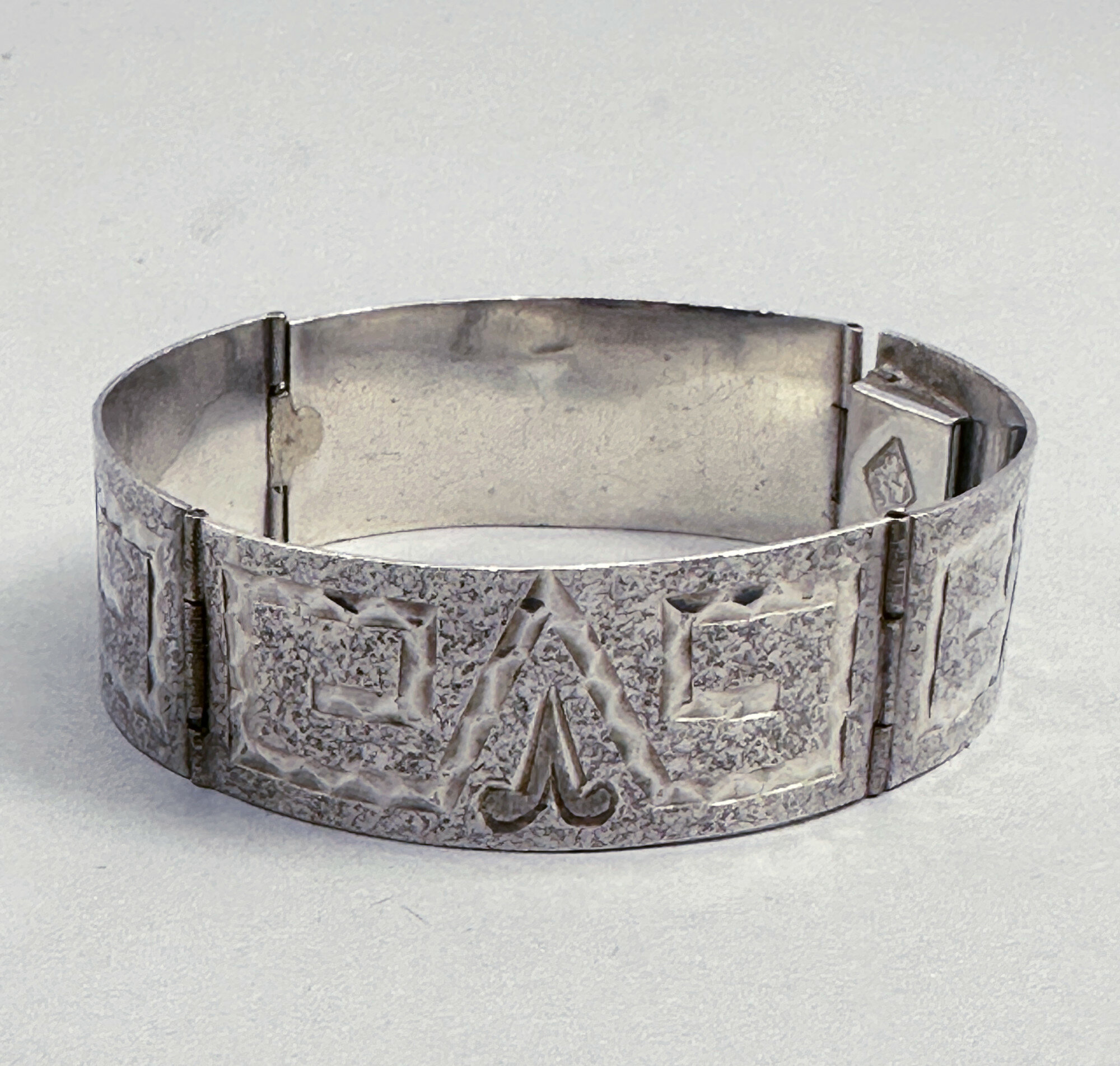
Mexican Silver Bracelet with Aztec Designs, Taxco, 1950s
Price: £65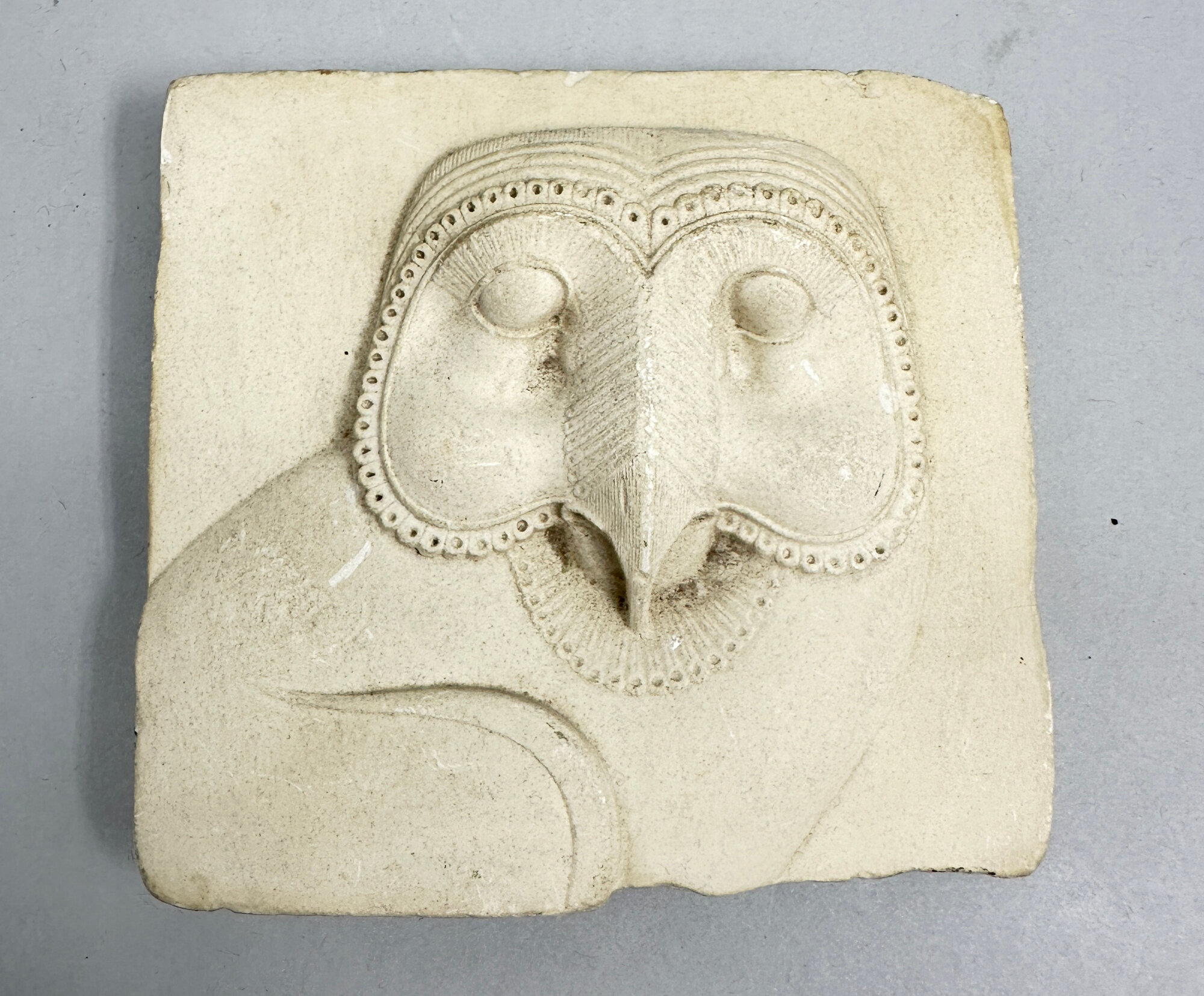
Metropolitan Museum of Art Egyptian Hieroglyphic wall plaque c2000
Price: £20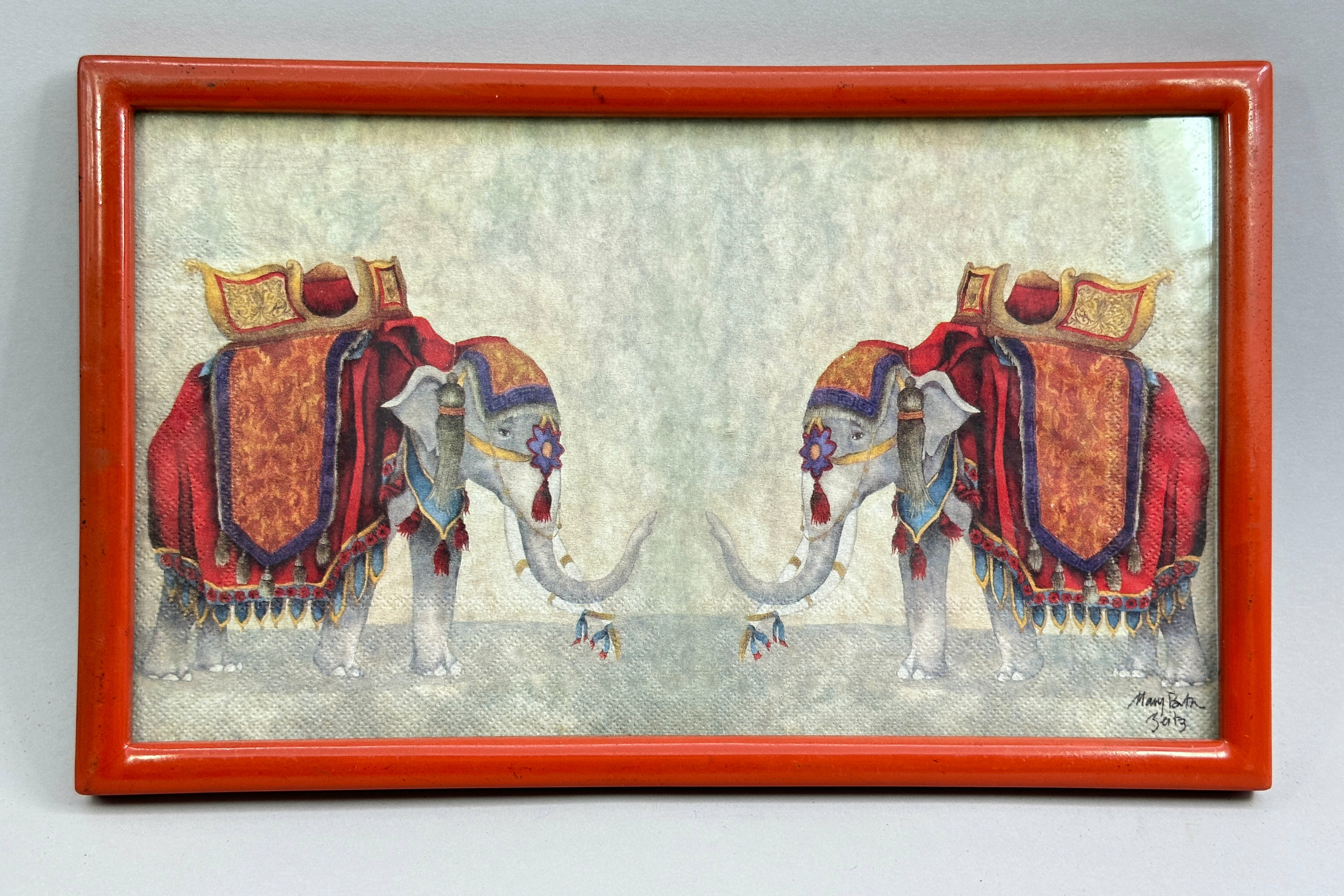
Framed Picture of Two Elephants signed Mary Beth Zeitz and dated 2003
Price: £25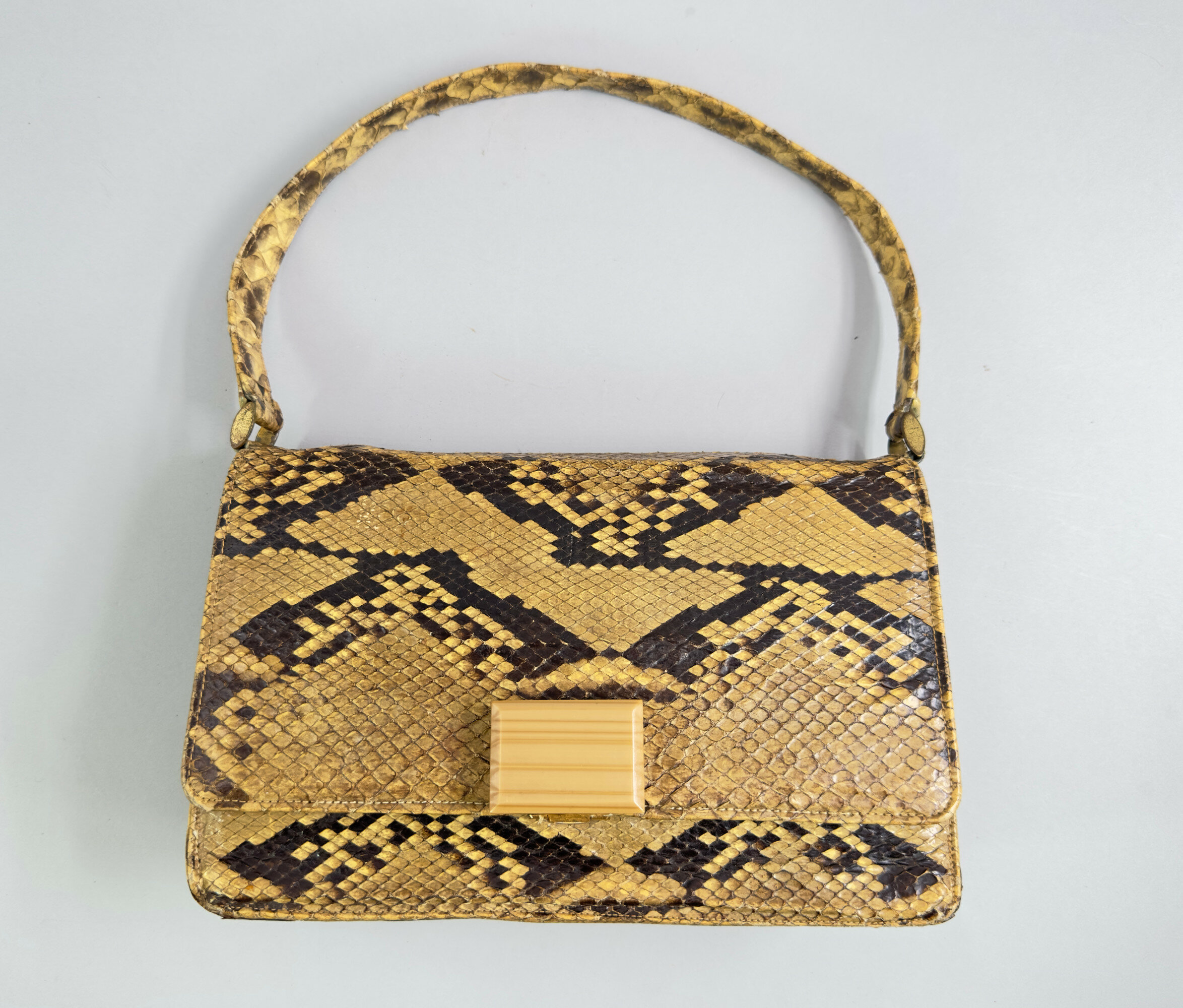
Large python handbag with wood closure detail 1930s
Price: £125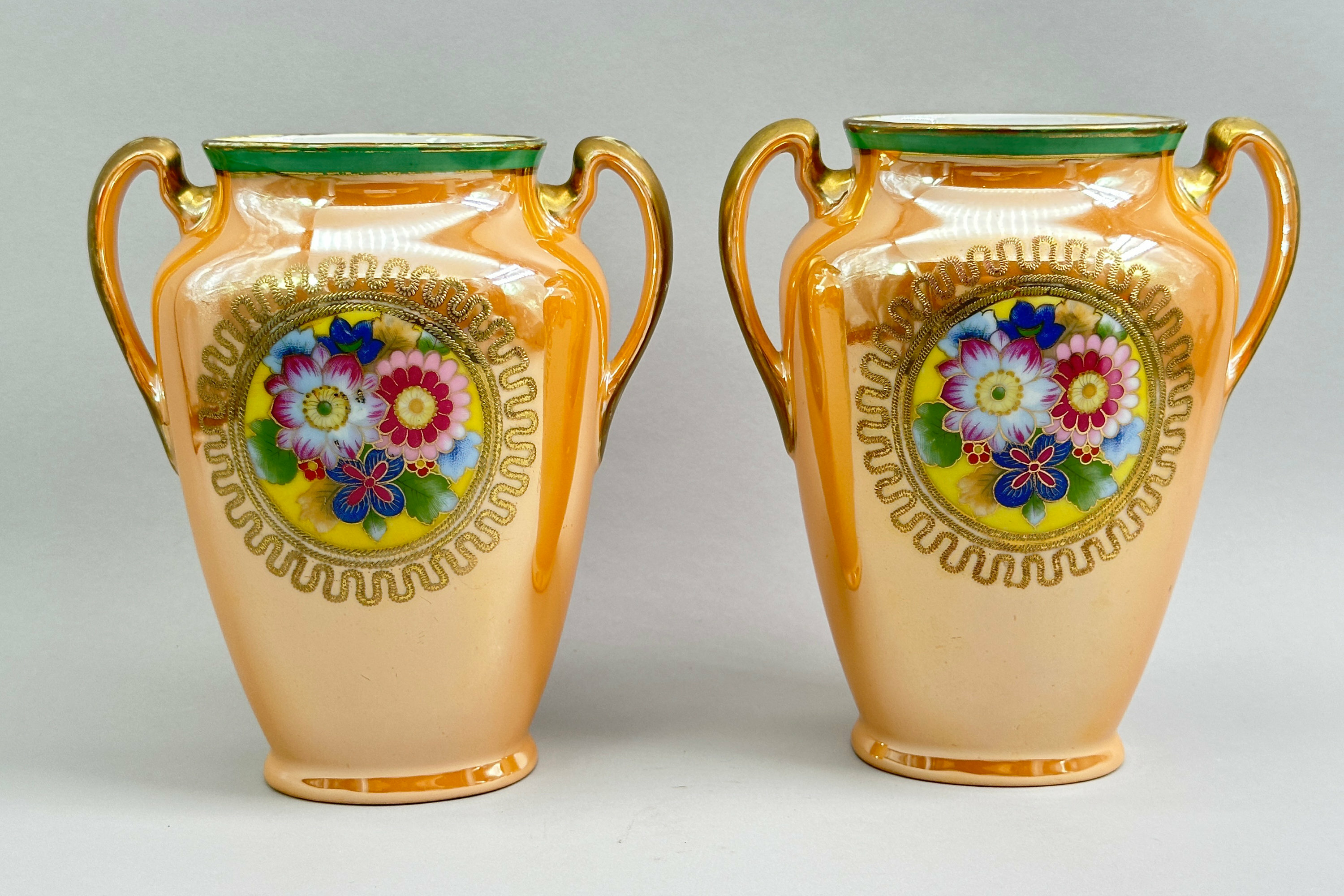
Pair of Japanese Noritake Vases, early C20th
Price: £35The Noritake compnay was set up by the Morimura family at Noritake near Nagoya in the early twentieth century. Called at first 'Nippon Toki Kaisha Ltd' on its founding in 1904, the business soon changed its name to 'Noritake' and began the manufacture of porcelains for the domestic and export markets. The mark seen here is interesting. It comprises a 'Komaru' symbol, crowned with "Noritake" and with the mark 'Made In Japan'. The centre symbol said to be taken from the Japanese character "Komaru", meaning "overcoming difficulties". According to the Noritake company tradition this mark was designed when contact with the different culture of the west early in the 20th century caused problems of adaptation. It is also known as the 'tree crest mark' which is the clan crest of the Morimura family. This mark is said to have been registered in London for the UK market by 1908. The curled up ends of the Komaru symbol seen here distinguish this mark from later versions and allow a dating of this piece to the early twentieth century.
Noritake porcelain became synonymous with finely potted tea and breakfast services made in great quantities for export. These vases are a rather more unusual production and show the factory capable of producing high quality pieces with decorative potential.
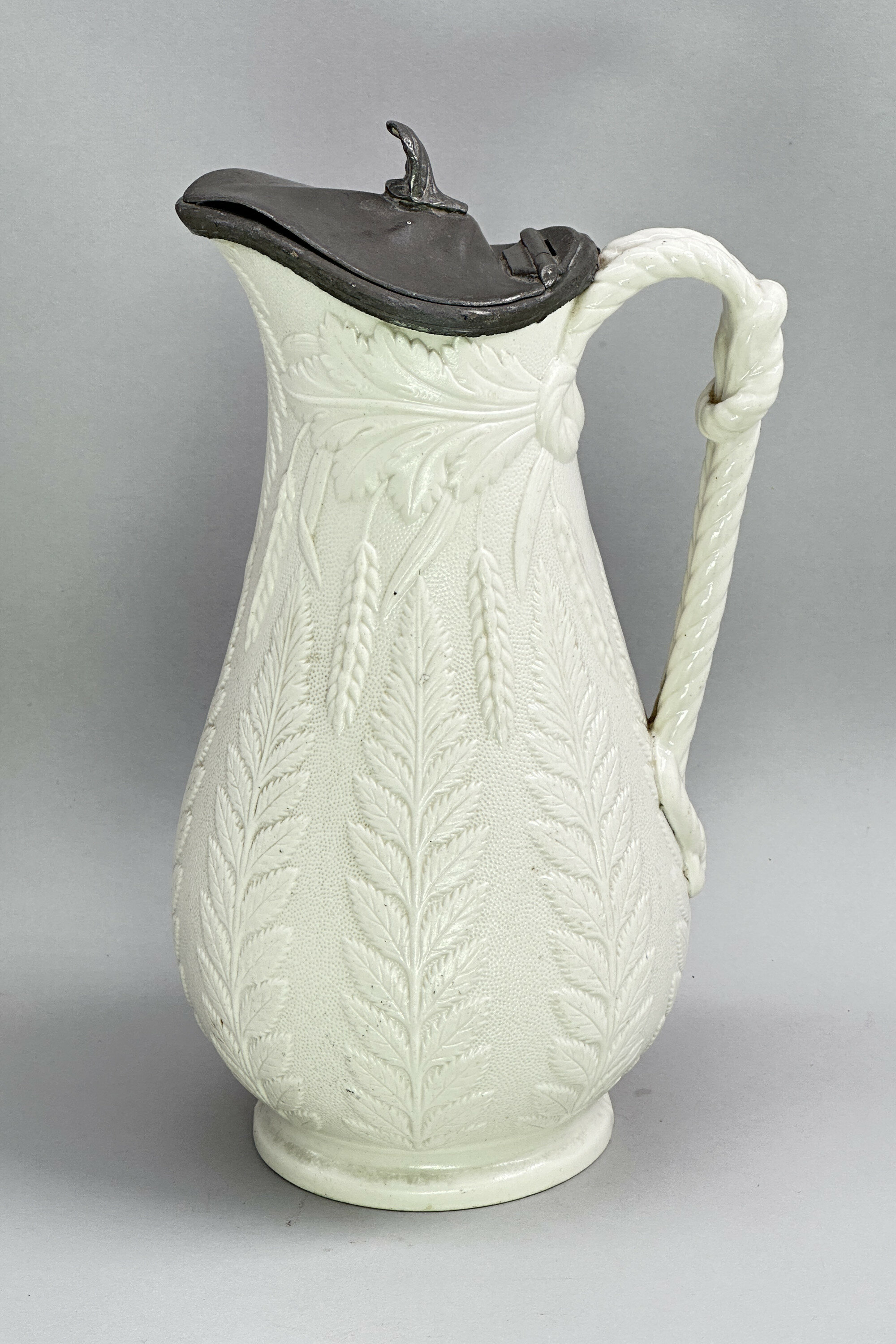
Antique English Staffordshire pitcher, William Brownfield and Sons, circa 1860.
Price: £55
Pair of Gilt Metal and Onyx Scales, probably French, C20th
Price: £55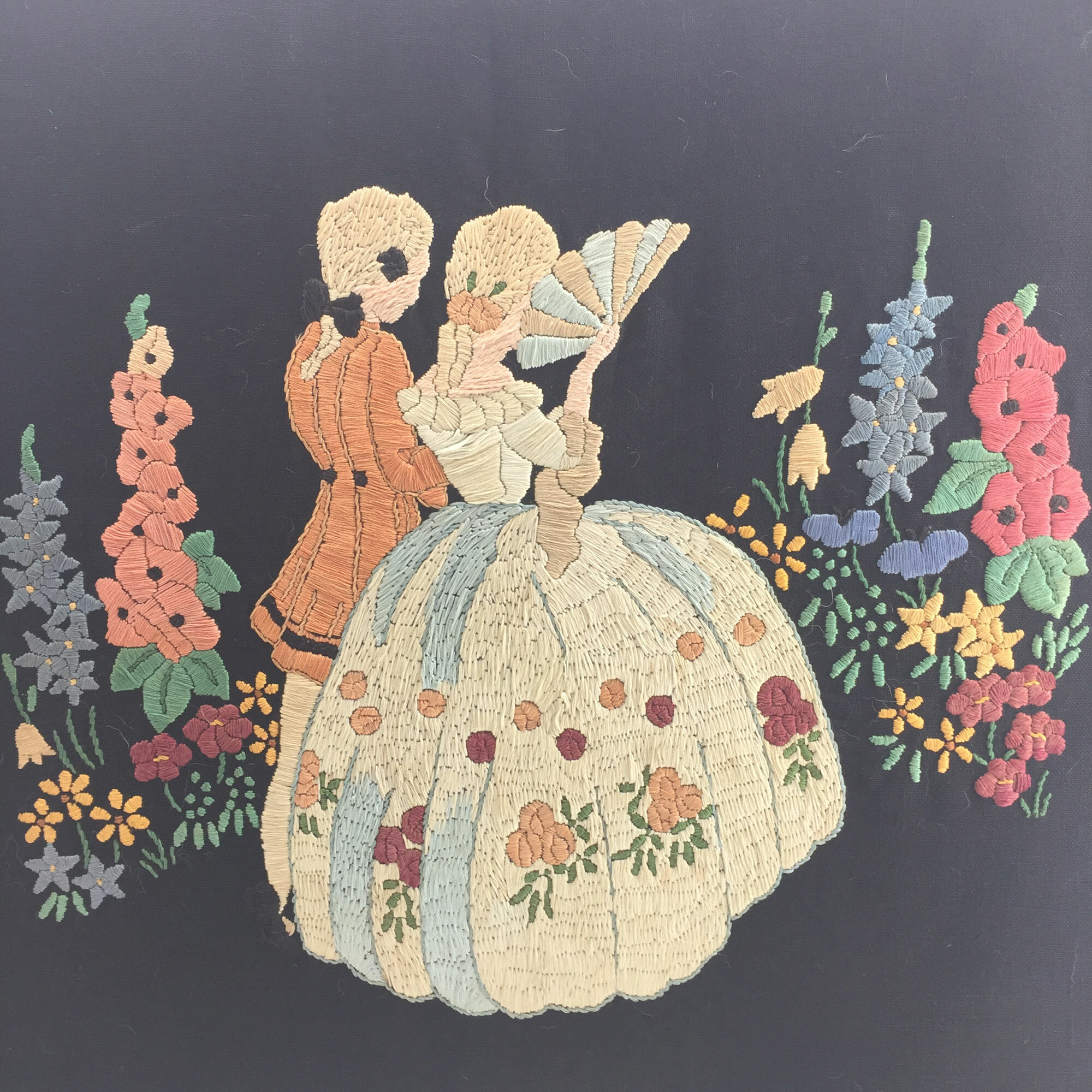
Arts and Crafts Stumpwork Firescreen 1900
Price: £25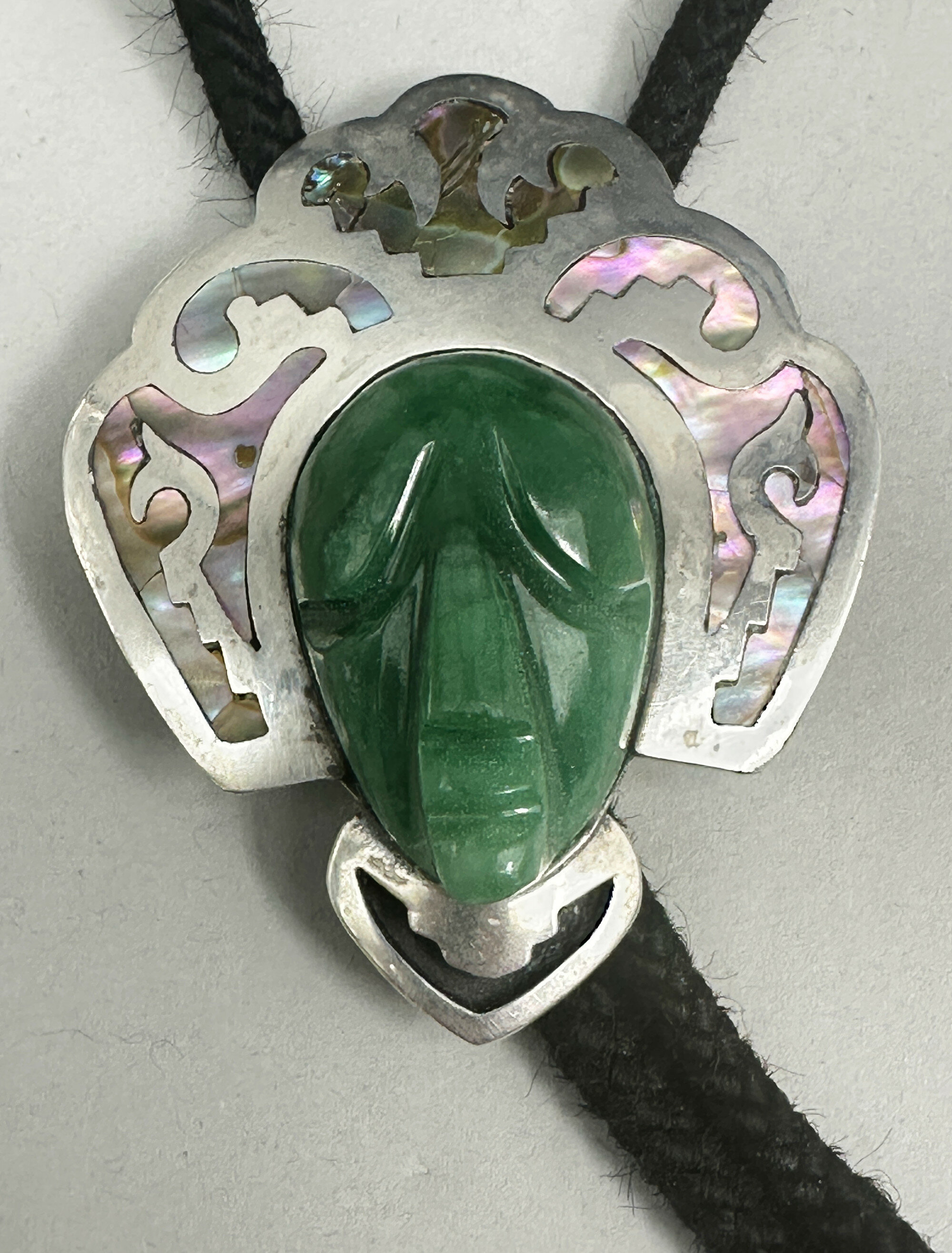
Mexican Silver Bolo Tie with Aztec mask Head, Taxco, c1950
Price: £125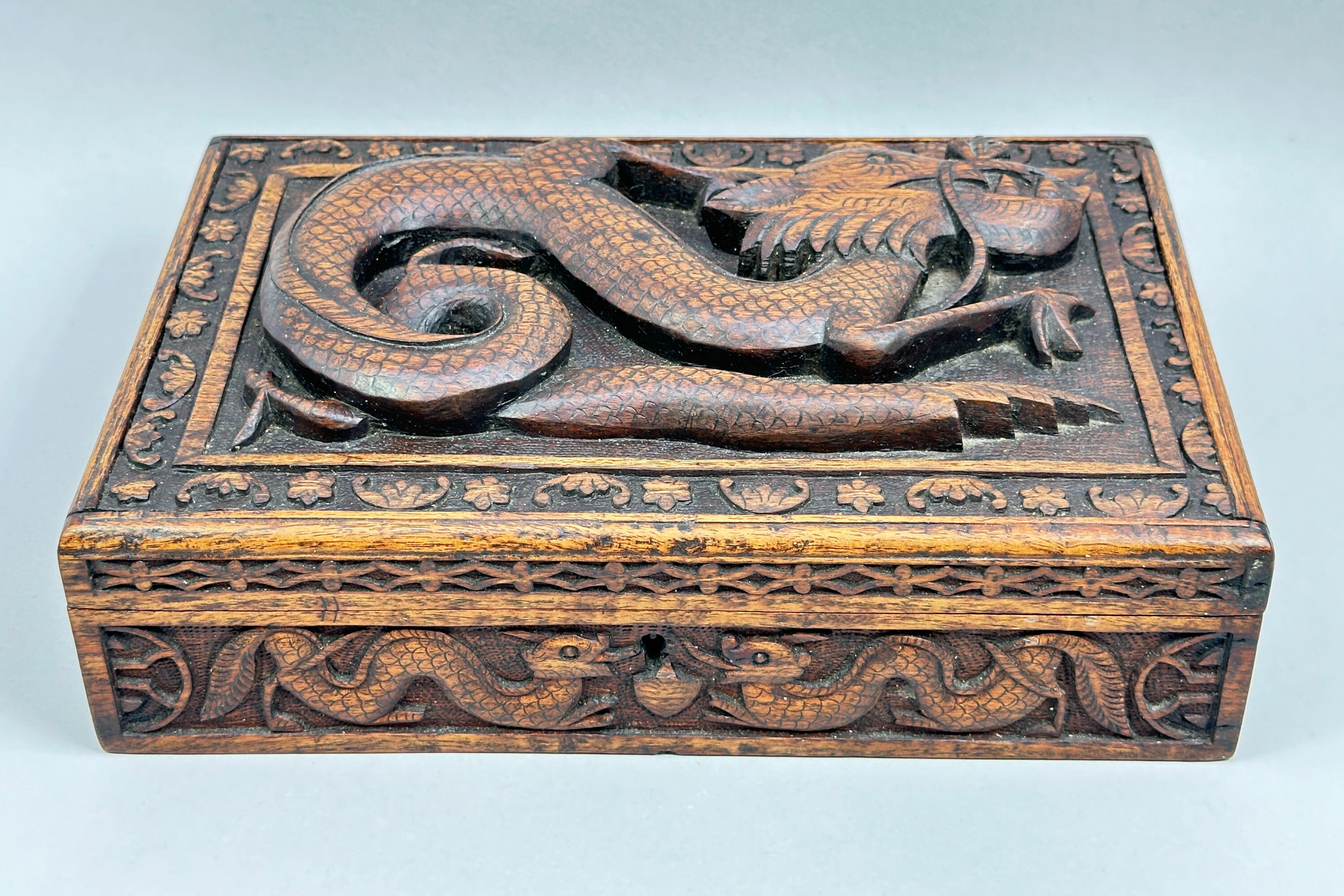
Chinese carved wood Box decorated Dragons, early C20th
Price: £150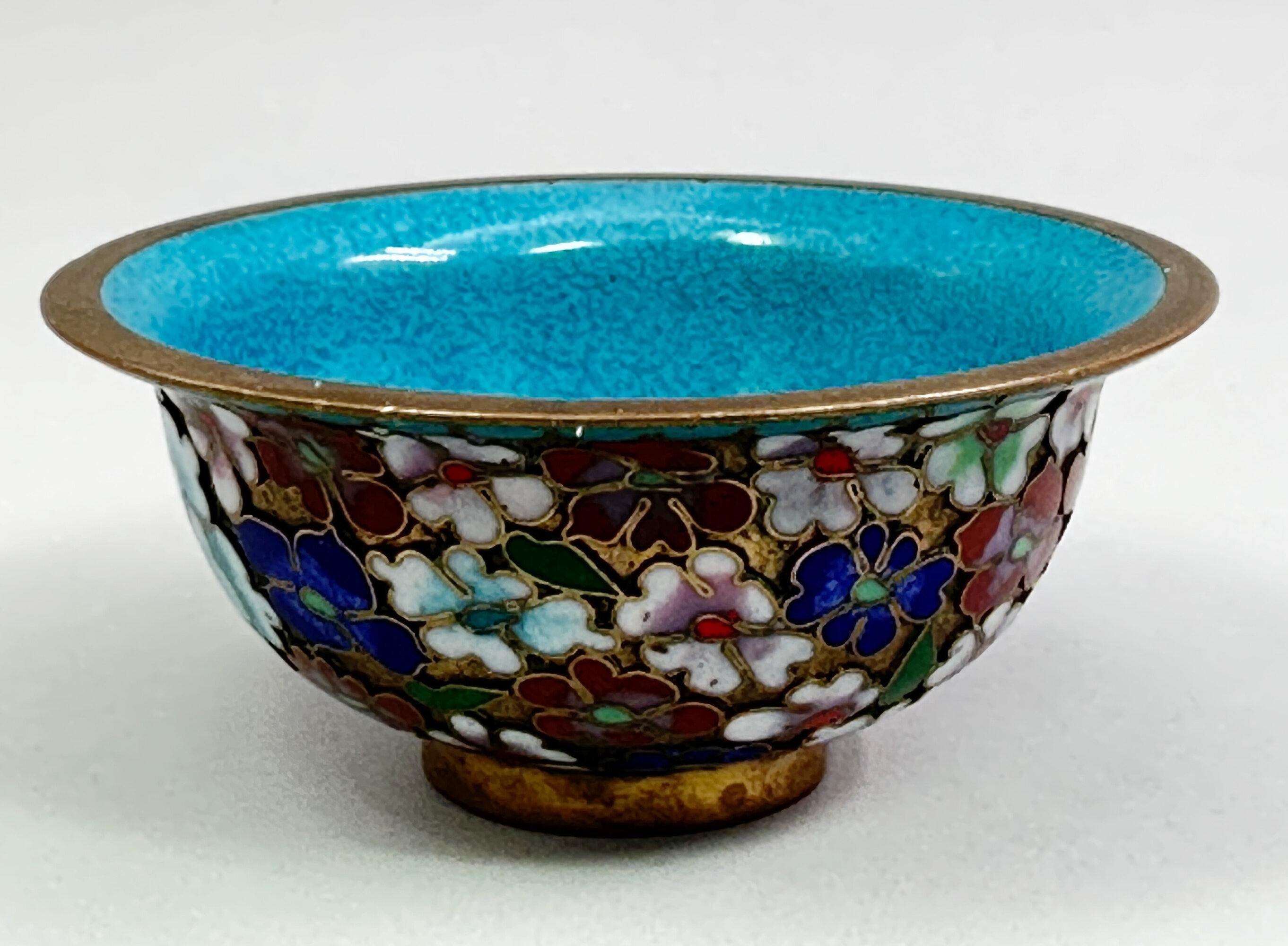
Small Chinese Gilt Ground Cloisonné Bowl, C20th
Price: £35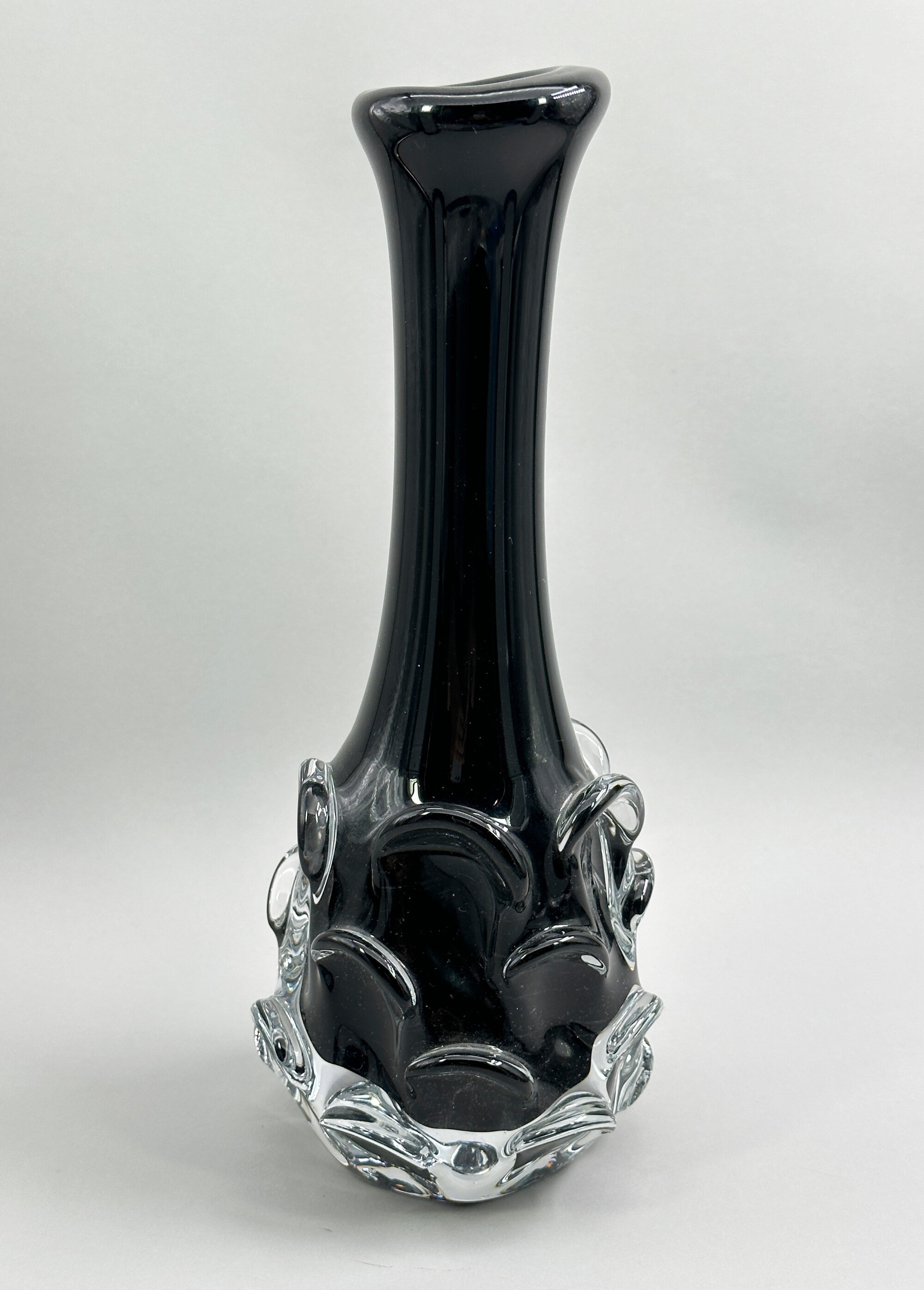
Aseda Glasbruk Art Glass Vase by Bo Borgstrom, Swedish, 1960s/1970s
Price: £75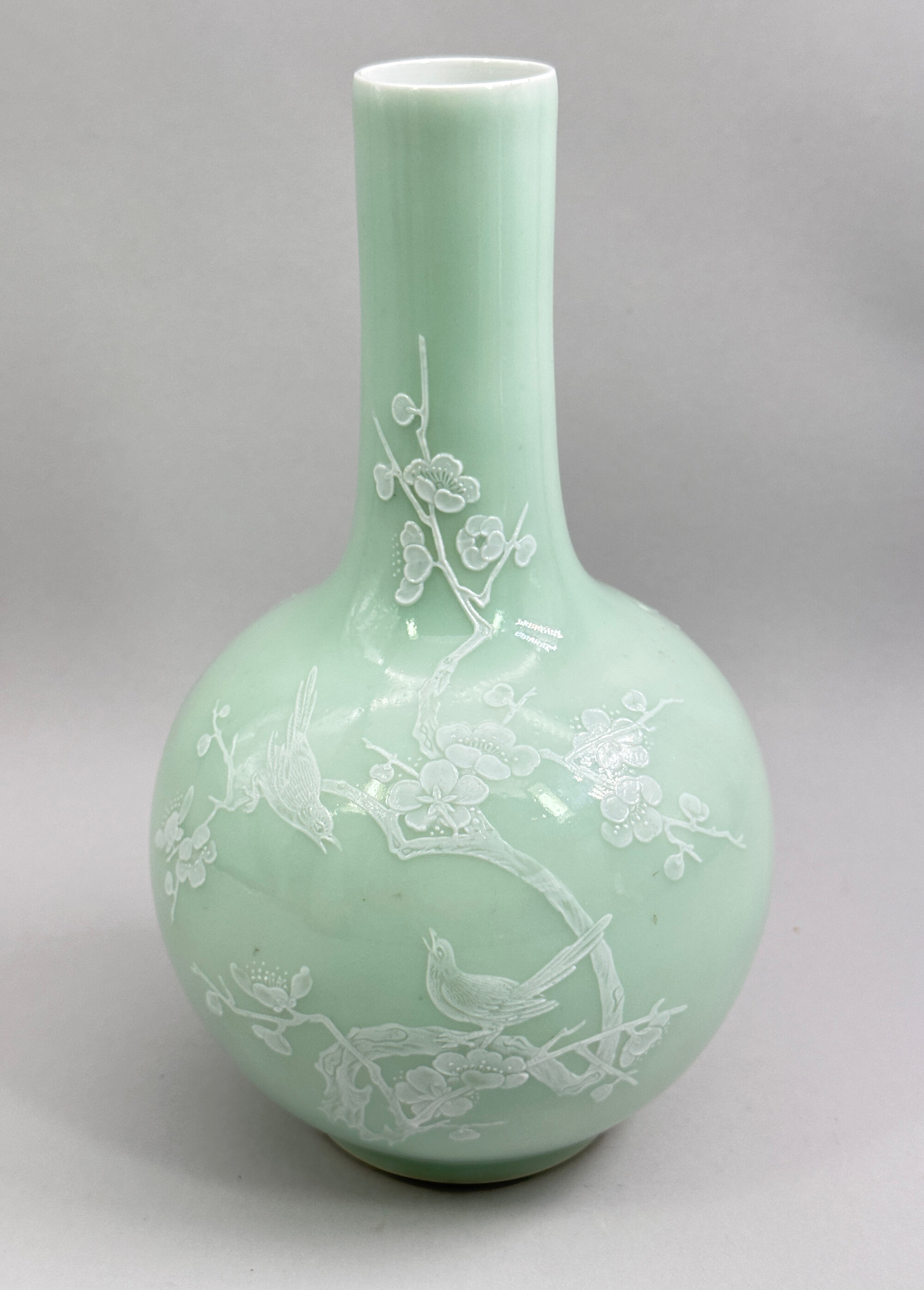
Chinese Celadon Glaze Bottle Vase with White Slip decoration, Jingdezhen mark, C20th
Price: £75
Burgundy Leather Jewellery Box with Bramah Lock, early C20th
Price: £95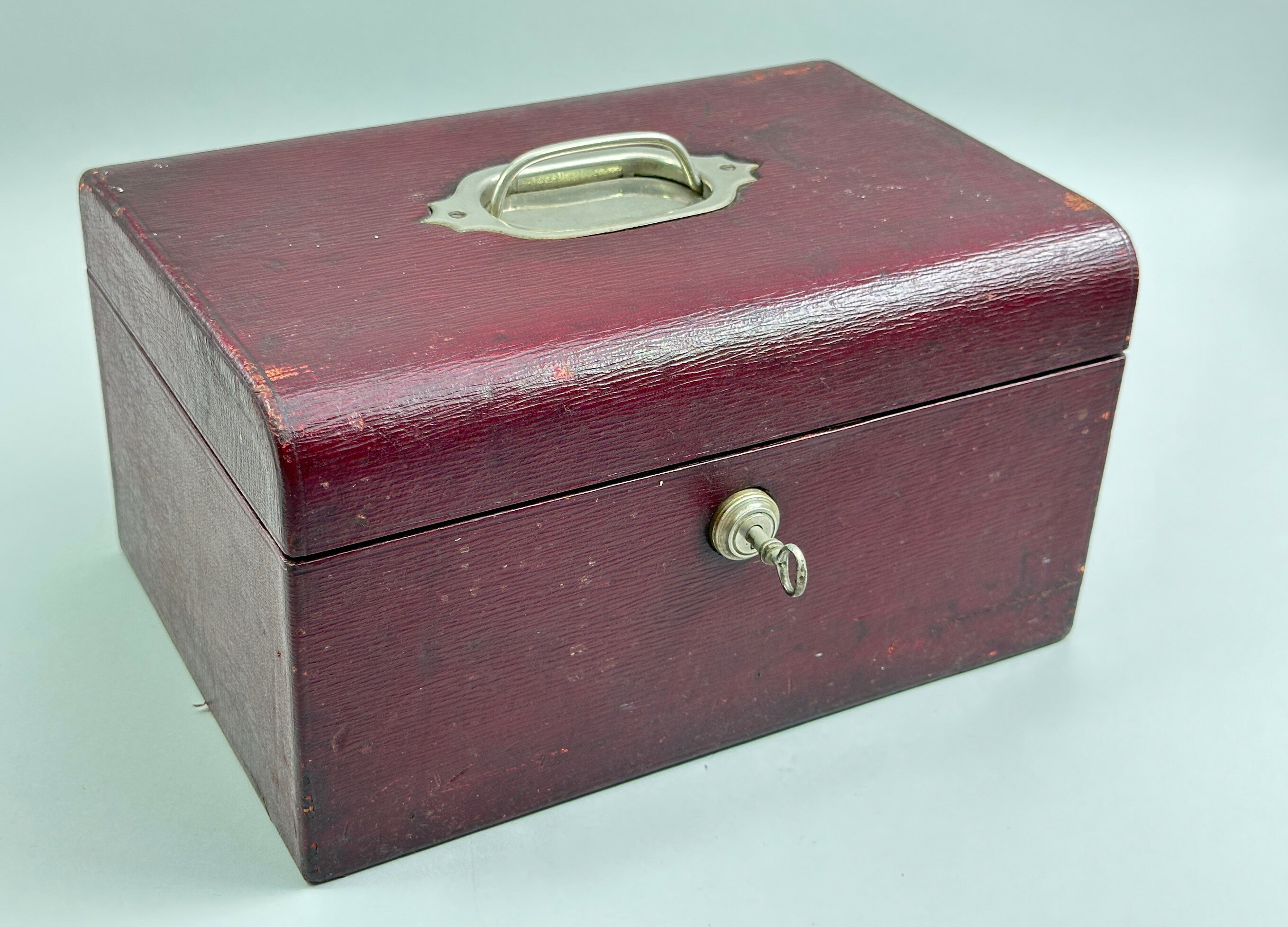
Burgundy Leather Jewellery Box with Bramah Lock, early C20th
Price: £95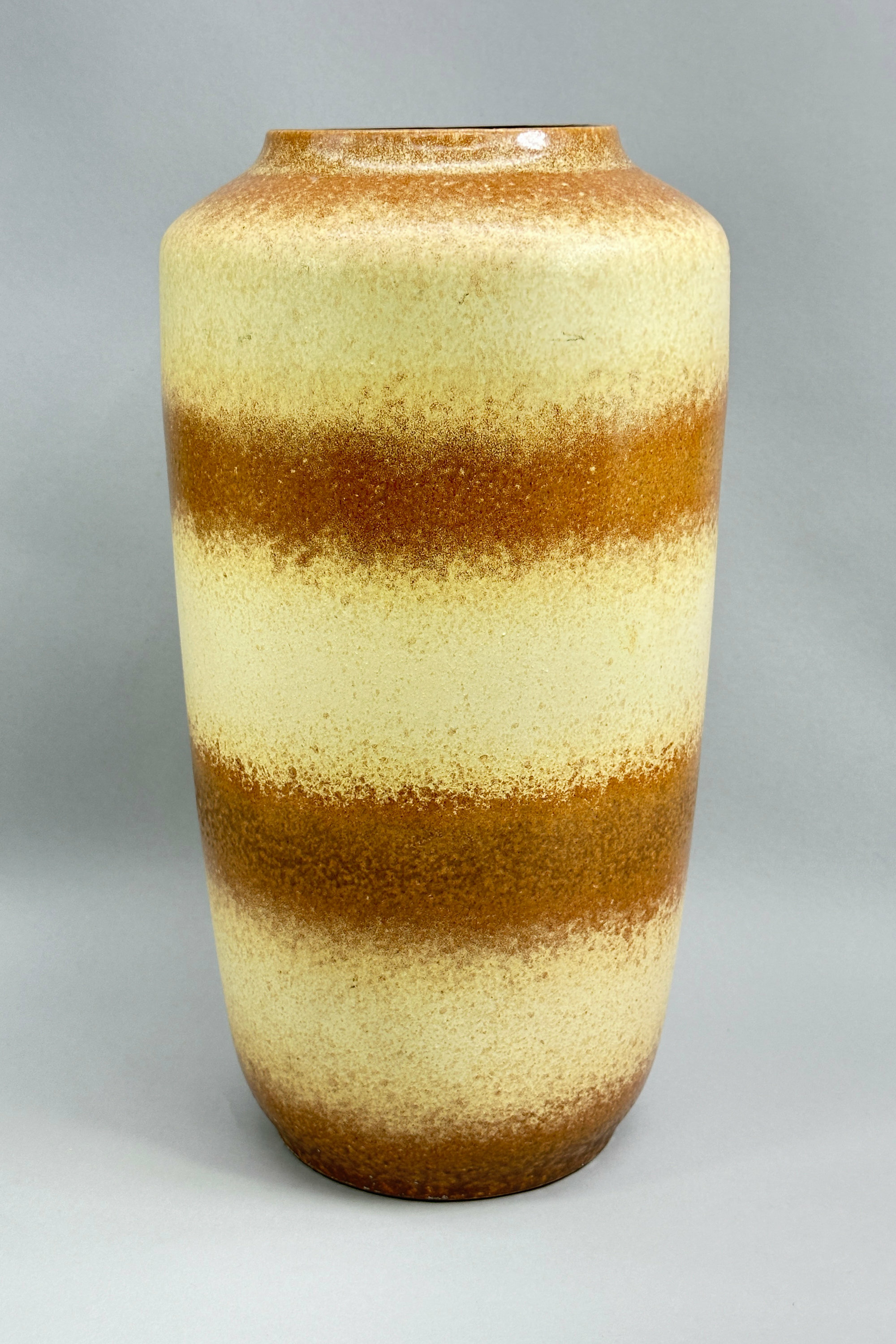
West German Vase, Model No 517-38, Scheurich, 1960s
Price: £55Although not marked as such, this vase has all the hallmarks of the firm Scheurich Keramik which started production in 1954, rather later than most of its competitors, but soon became the largest producer of commercial art pottery in Germany. Their pieces rarely carried the factory name but usually the model number followed by the height in centimetres with ‘W.Germany’ below, as here. Model ‘517’ can be found in a variety of different glazes but the pattern and colourings here, more muted than some of Sheurich’s work and with a matt finish, are particularly pleasing and complement the elegant form most successfully. Dating is to the 1960s.
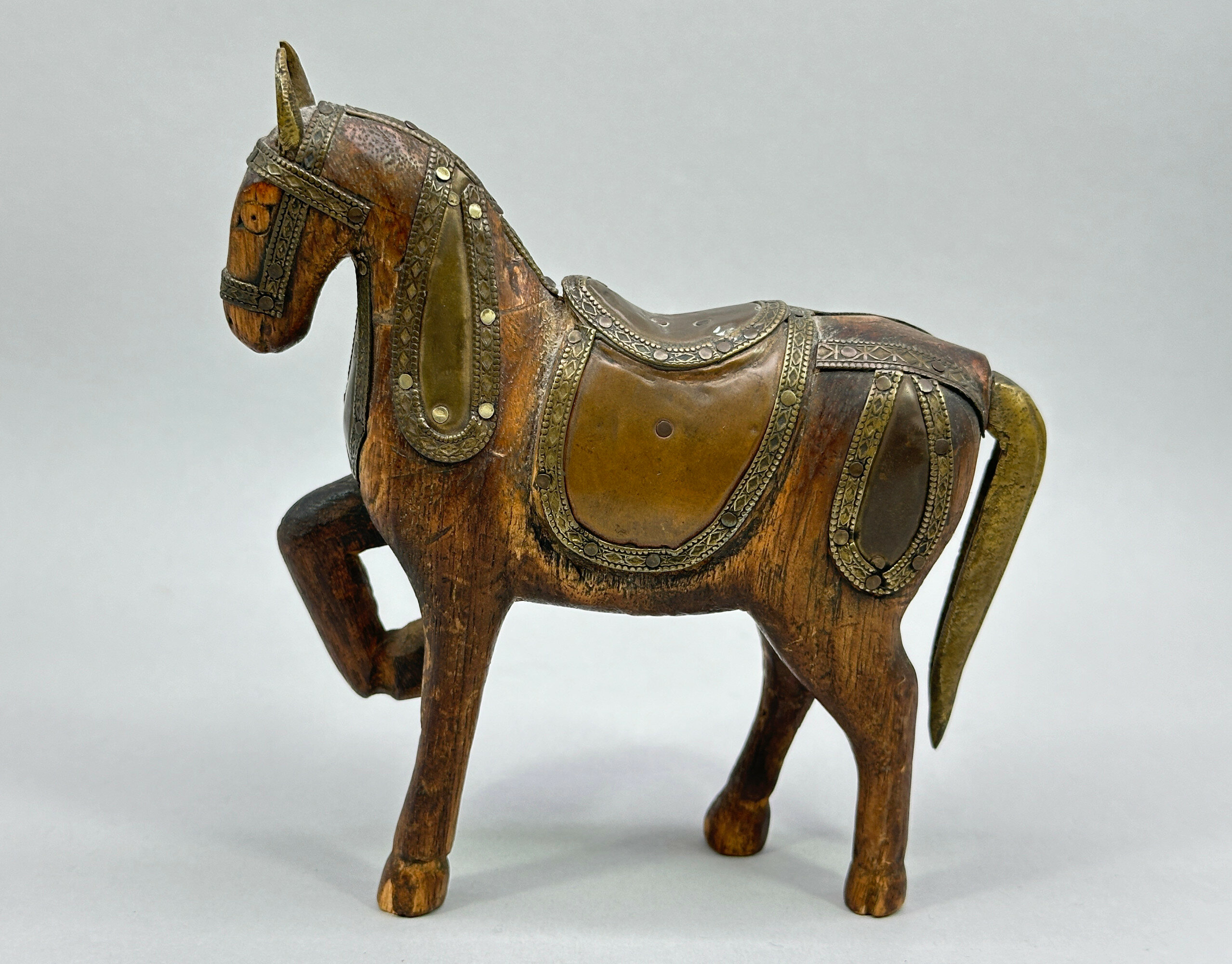
Indian wooden toy model of a Horse with metal fitments, early C20th
Price: £25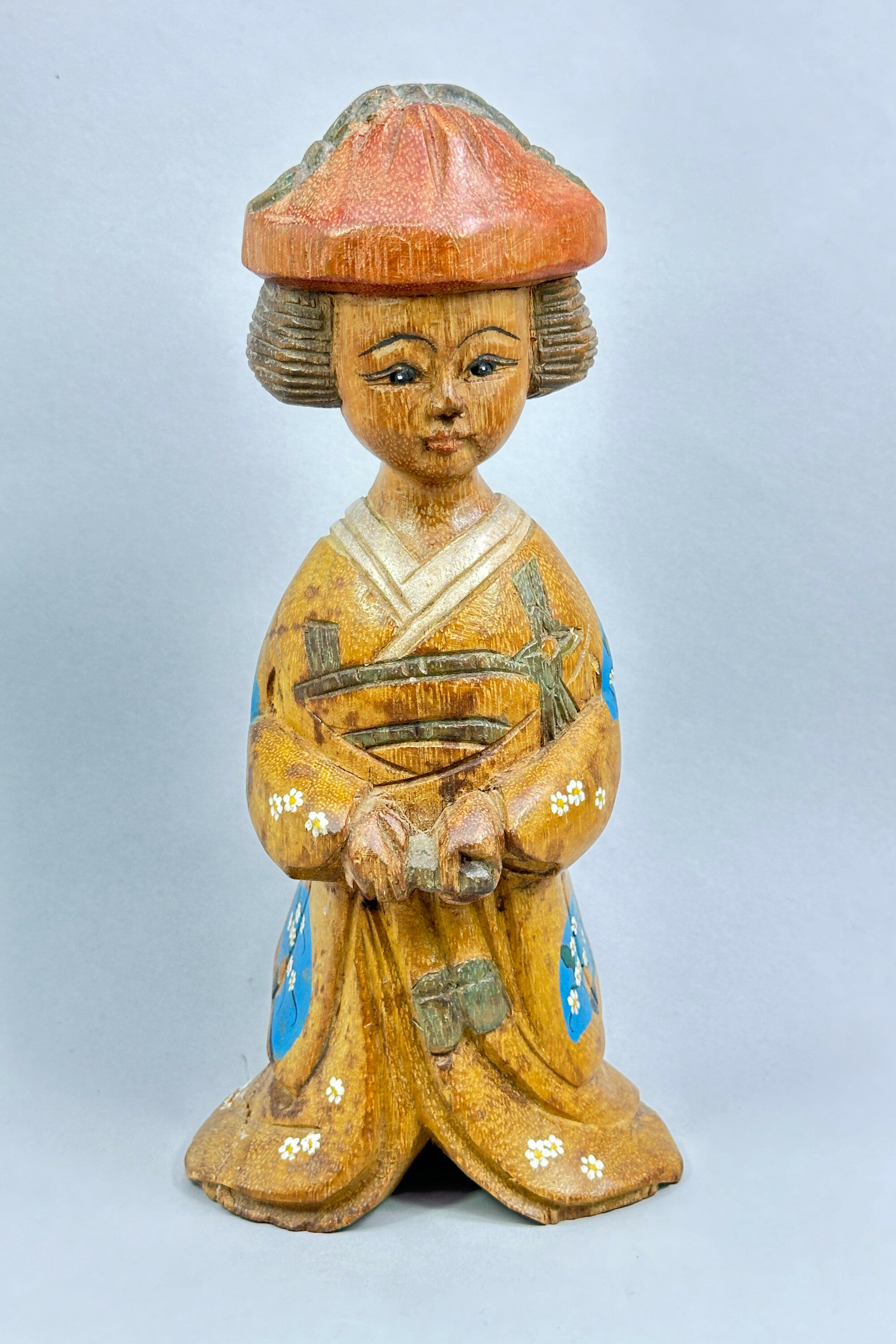
Japanese Carved Wood Figure of a Young girl, Kokeshi doll style, C20th
Price: £45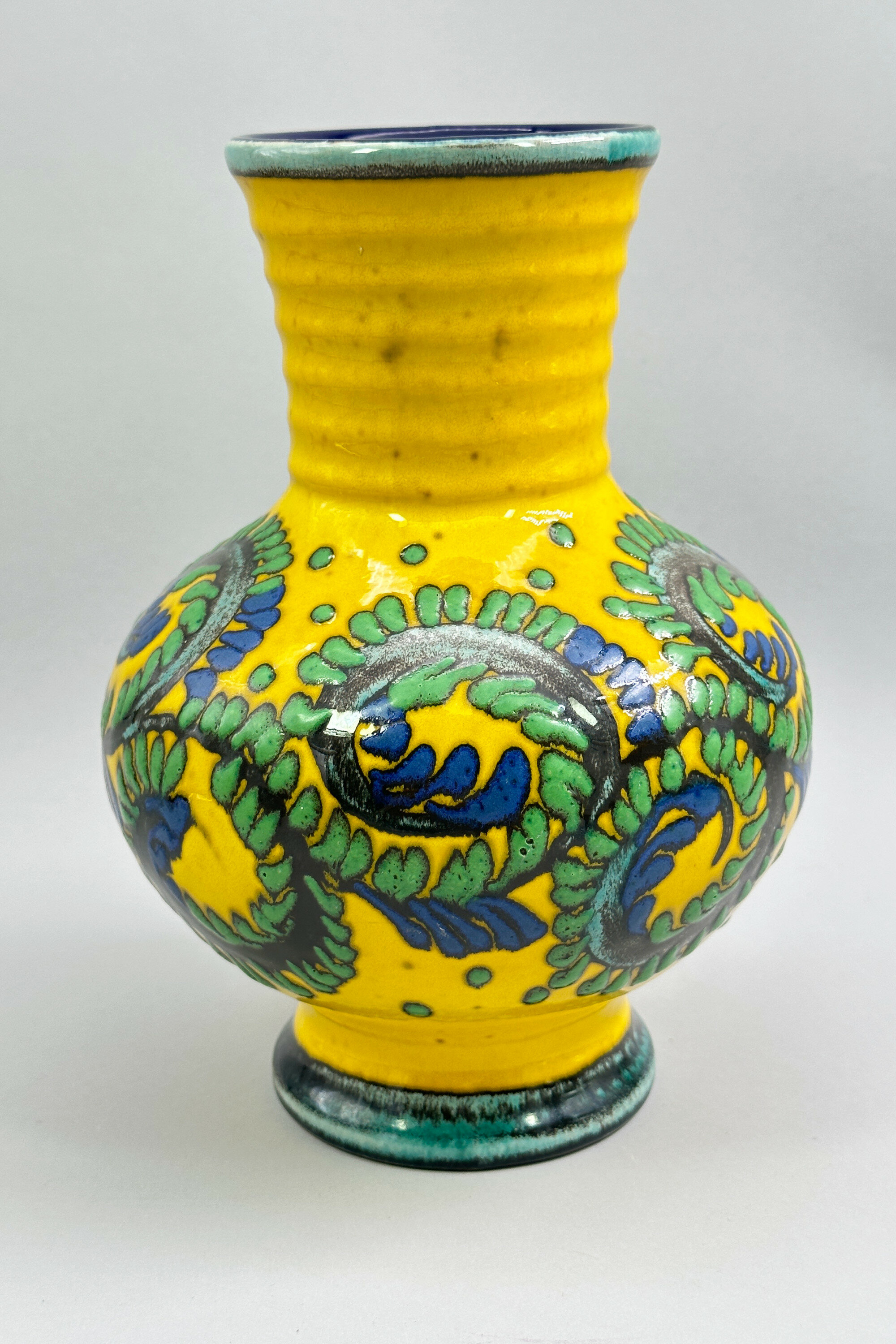
West German Ceramic Vase, Marei, 1970s
Price: £45While not stamped with a maker's mark, vases of this type are attributed to the West German Ceramics factory Marei which produced pieces from 1949 to 2016. Marei was the commonly used abbreviation for the firm's name which was Majolikafabrik Rheinbach Jean Fuss and Sohn. The pieces are distinguished by the use of a reddish clay but this was sometimes more brown or dark brown depending on the suppliers used. Marks are usually impressed into the base although these are often just pattern numbers, as here. Many pieces are unmarked and some are stamped 'MADE IN GERMANY' or 'W.GERMANY'. The pattern number here is '7104'and is found on similar pieces with the same shape but different decoration. This vase was probably made in the 1970s and is typical of the striking designs the firm produced.
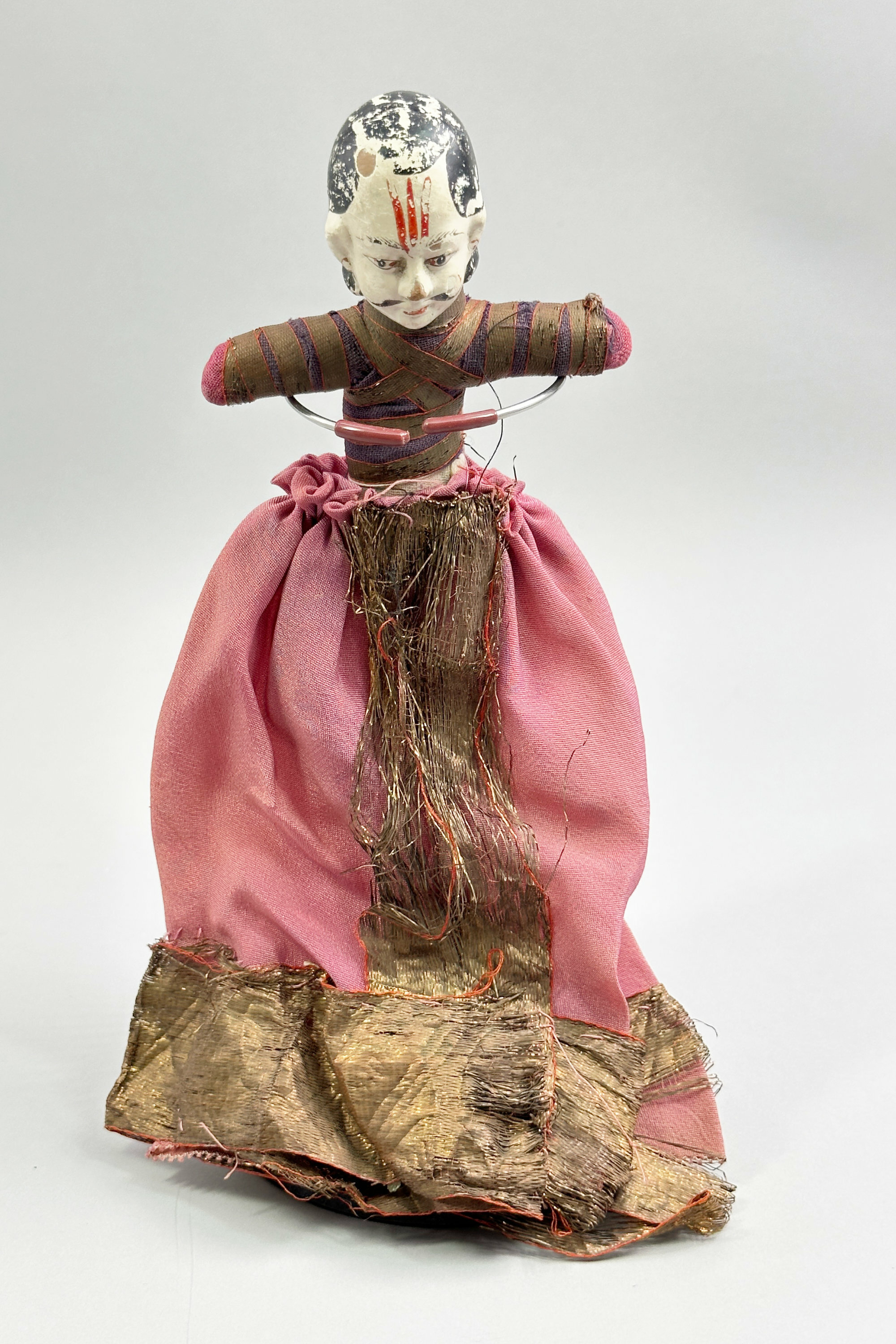
Burmese doll figure of a Priest, C20th
Price: £45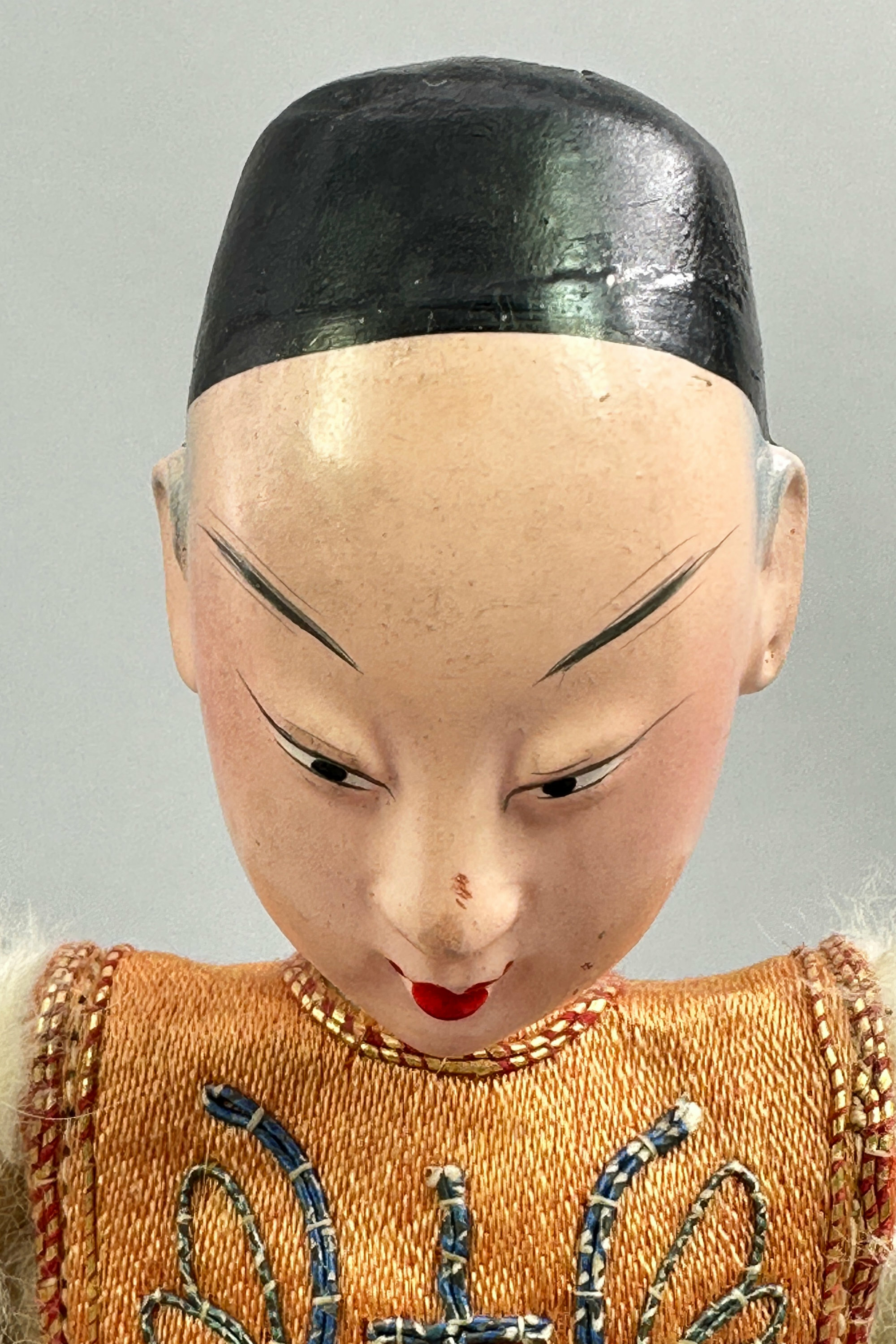
Chinese Doll of a man dressed in traditional costume, early C20th.
Price: £95
Pair of French Blue Ground Square Vases Choisy Le Roi, late C19th
Price: £45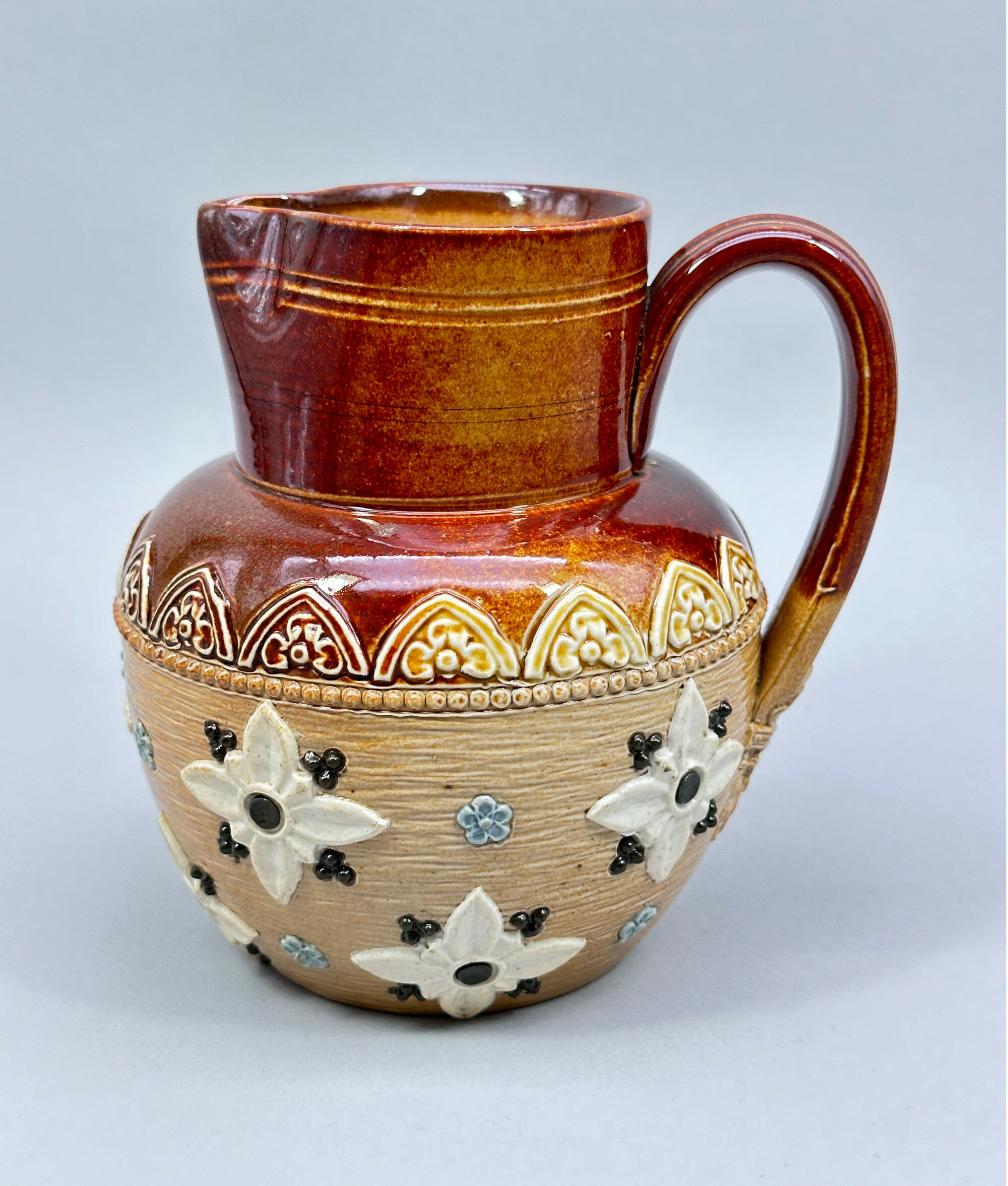
Doulton Lambeth Stoneware Jug circa 1900
Price: £45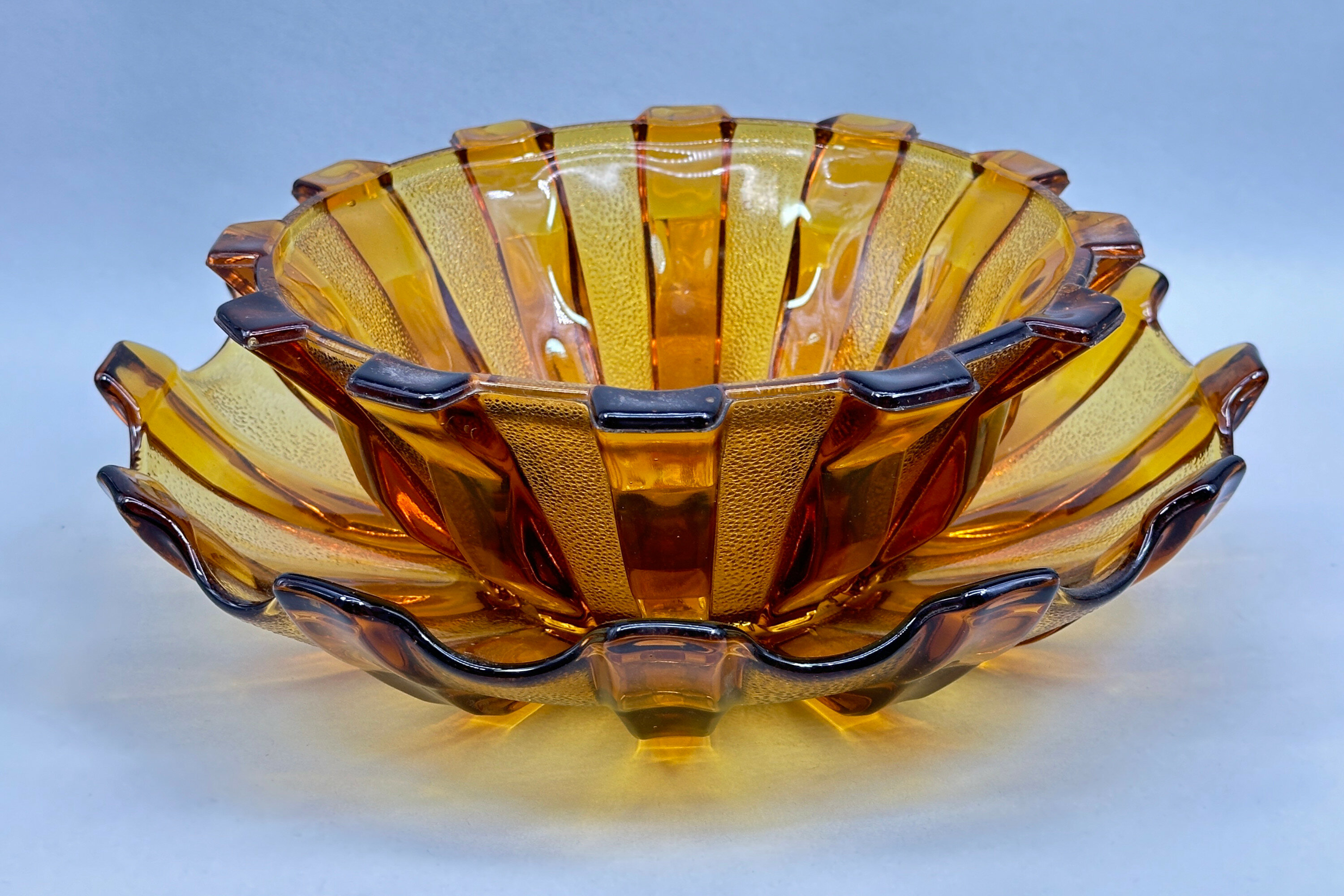
Amber Glass Bowl and stand, Stölzle Hermanova Hut factory, Czech 1930s
Price: £55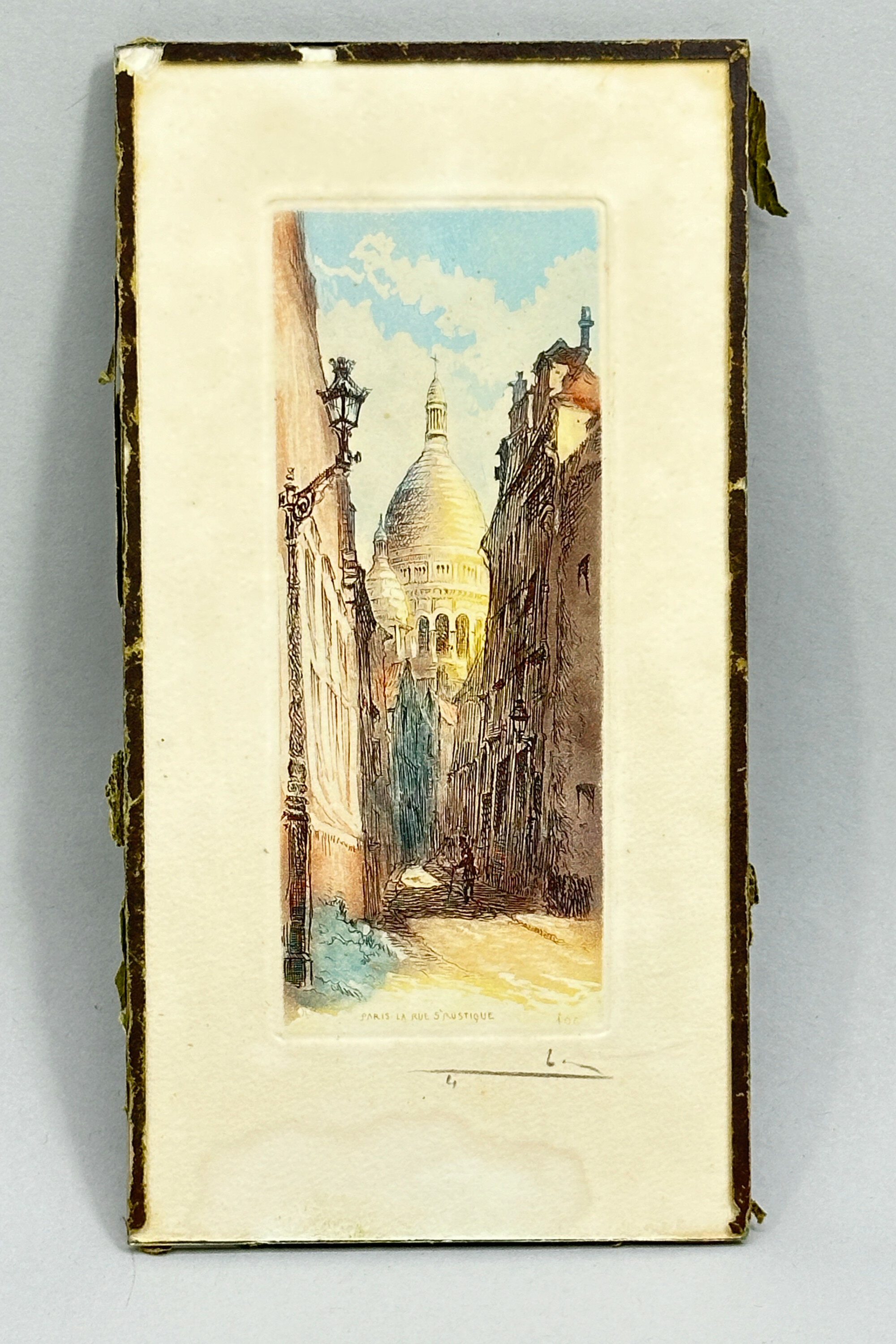
French Orientalist etching aquatint - Paris La Rue Saint Rustique
Price: £35
Art Deco necklace with French Jet and paste stations
Price: £45
Islamic silver choker necklace 1920s
Price: £120
Victorian style copper bracelet with buckle detail 1950s
Price: £20
Fun group of two porcelain brooches with paid of small earrings 1960s
Price: £15
Celtic Style Pewter Brooch in the form of a Panthers Head, C20th
Price: £10PLEASE NOTE THAT THERE IS FREE UK SHIPPING ON THIS ITEM. For international buyers the shipping cost will be reduced by the UK shipping cost, so don't worry if you are outside the UK, you still receive this benefit!
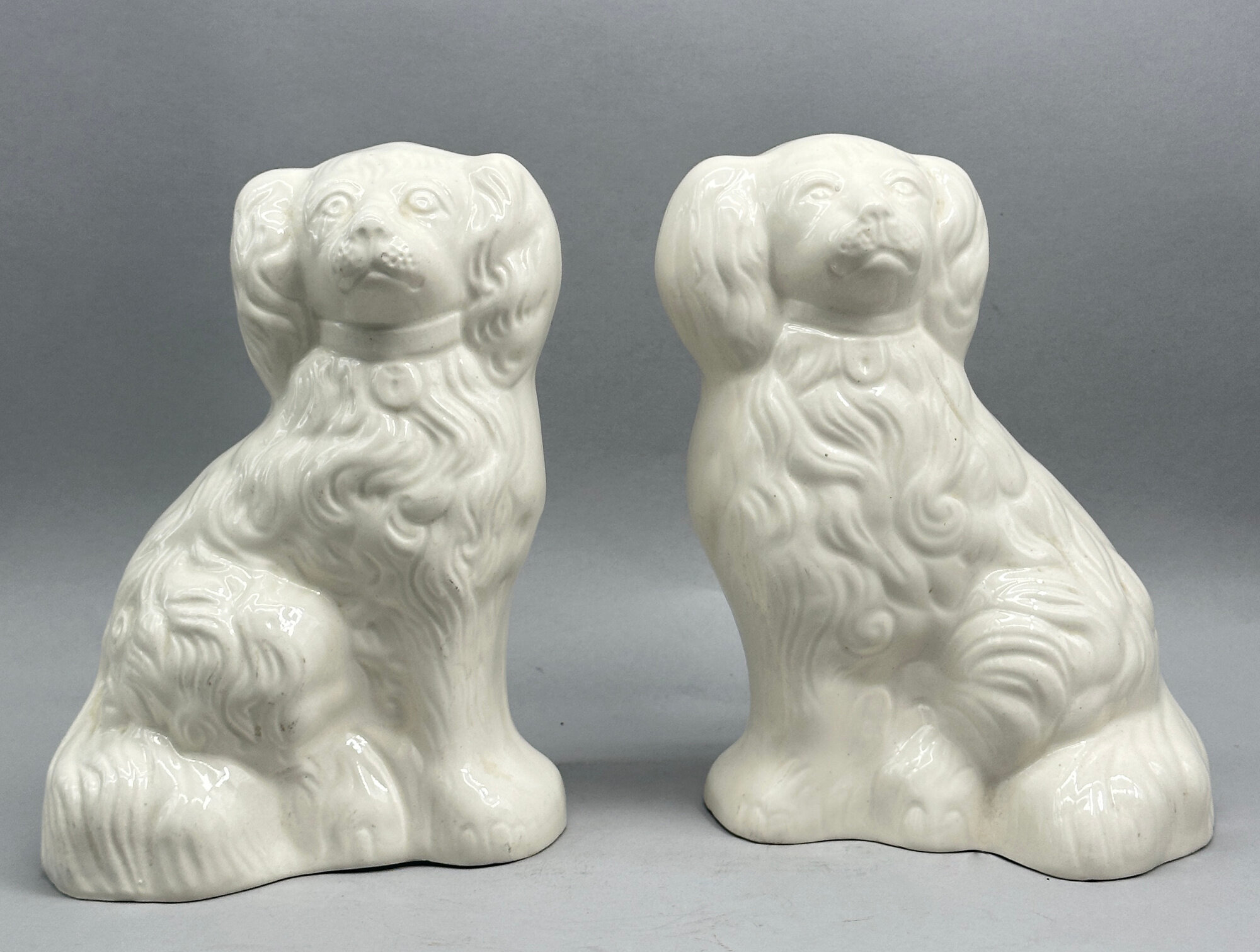
An unusual pair of white glaze models of Spaniels, Beswick, 1960s
Price: £75While a close relation to the traditional Victorian ‘Staffordshire Dog’, these figures were actually made by the English firm Beswick in the twentieth century. Founded in 1894 by James Beswick and his sons, the company became known for its output of figurines, eventually securing the rights to producing characters from the novels of Beatrix Potter and the films of Walt Disney. It was sold to Royal Doulton in 1969 who continued production until 2002, selling the pottery premises in 2003 and the rights to the name in 2004 when they were bought by Dartington Crystal who still manufacture pieces carrying the Beswick name. These spaniel figures appear to date from the 1960s and were made in at least two sizes. Most have painted decoration but the plain white finish here is really the most pleasing of all producing a pair of decorative items with timeless appeal.
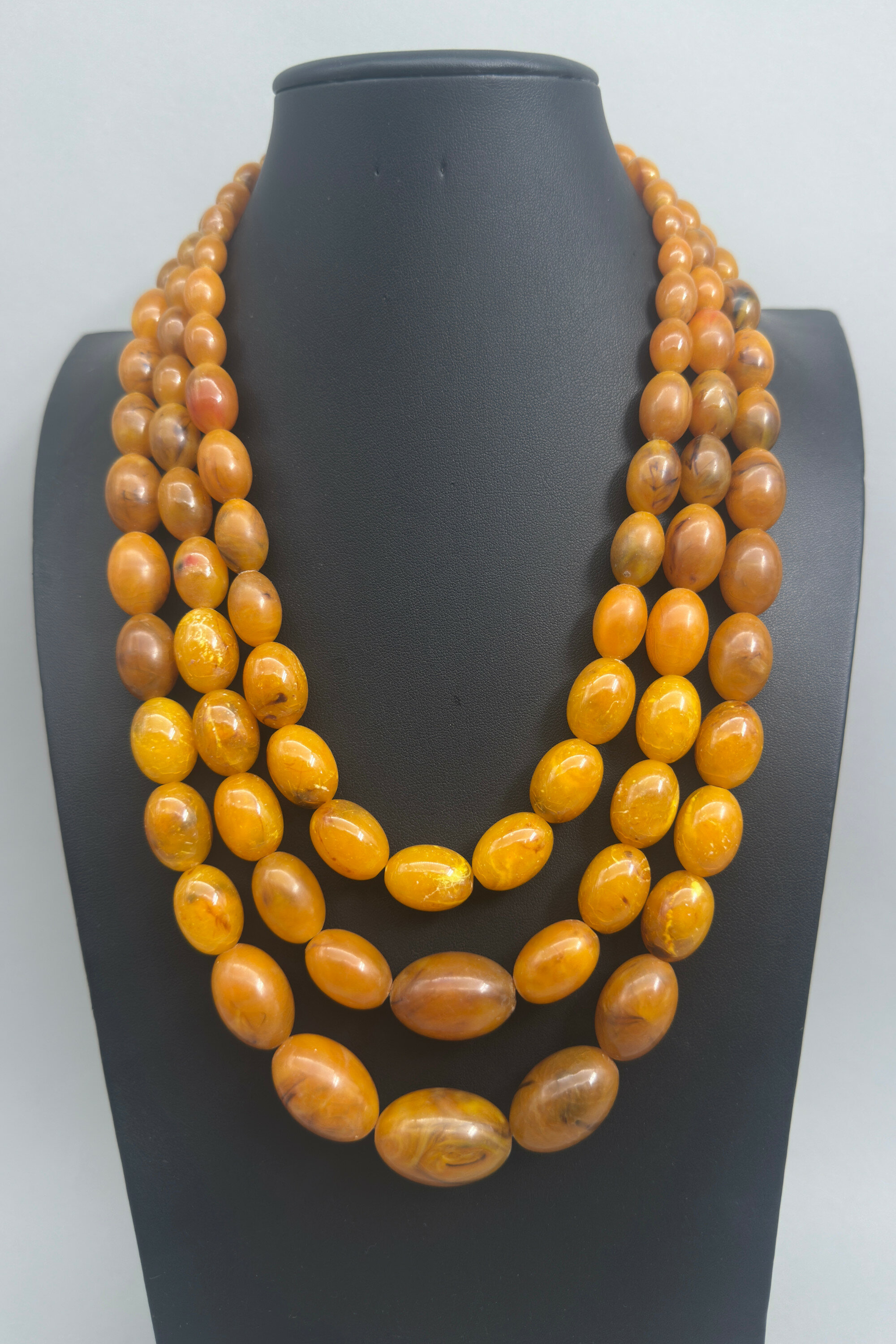
Triple strand of amber Bakelite beads, British 1930s
Price: £750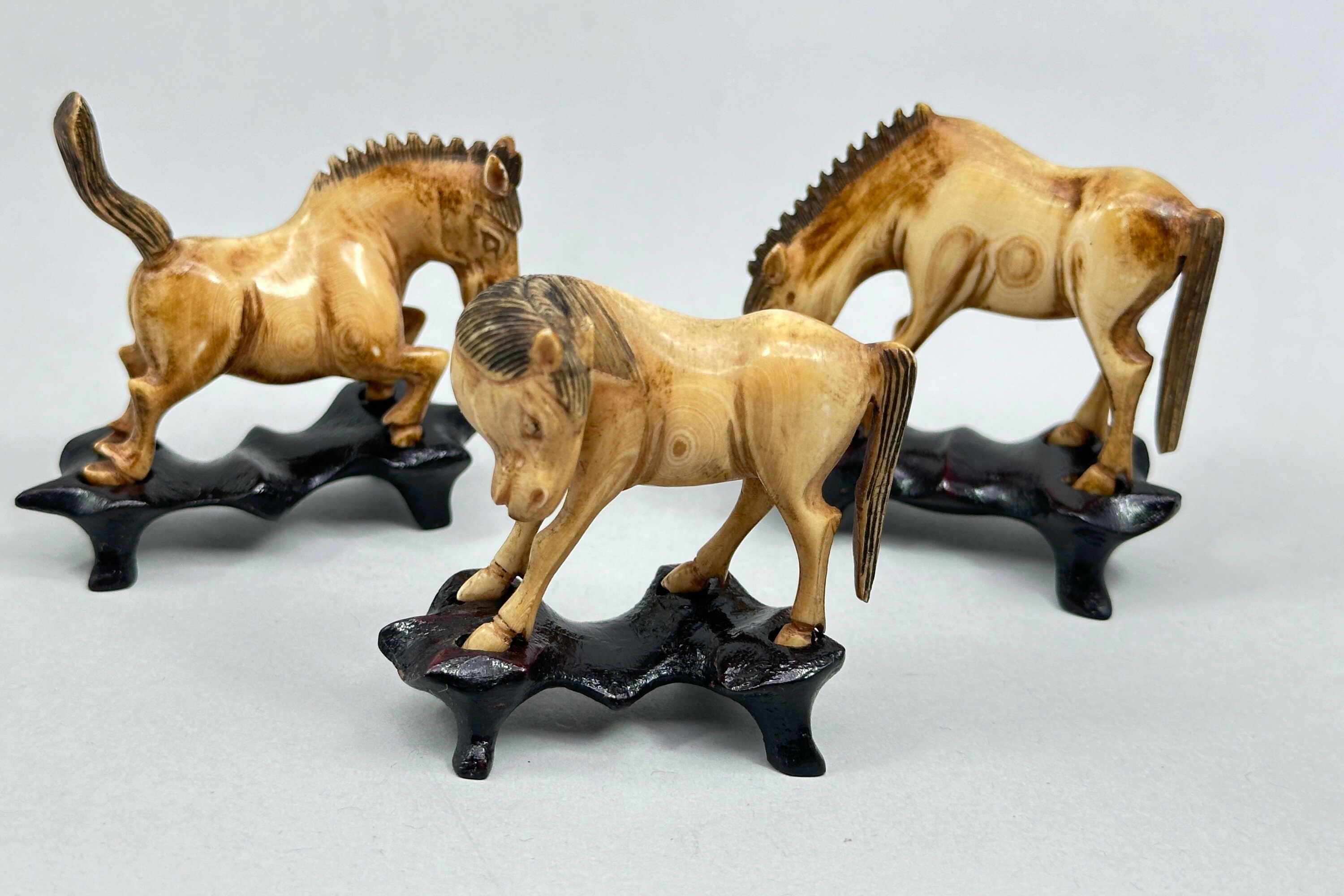
Group of Three Chinese carved bone Horses with wood stands, probably mid C20th
Price: £30
Two lacquer bird brooches 1980s
Price: £15
Two long infinity strands of cultured pearls
Price: £45
Art Deco Islamic silver bracelet with inset stones
Price: £195
A Pair of Royal Doulton Ewers, marked, early C20th
Price: £150
Obsidian Mayan Statuette inlaid with semi precious stones, C20th
Price: £35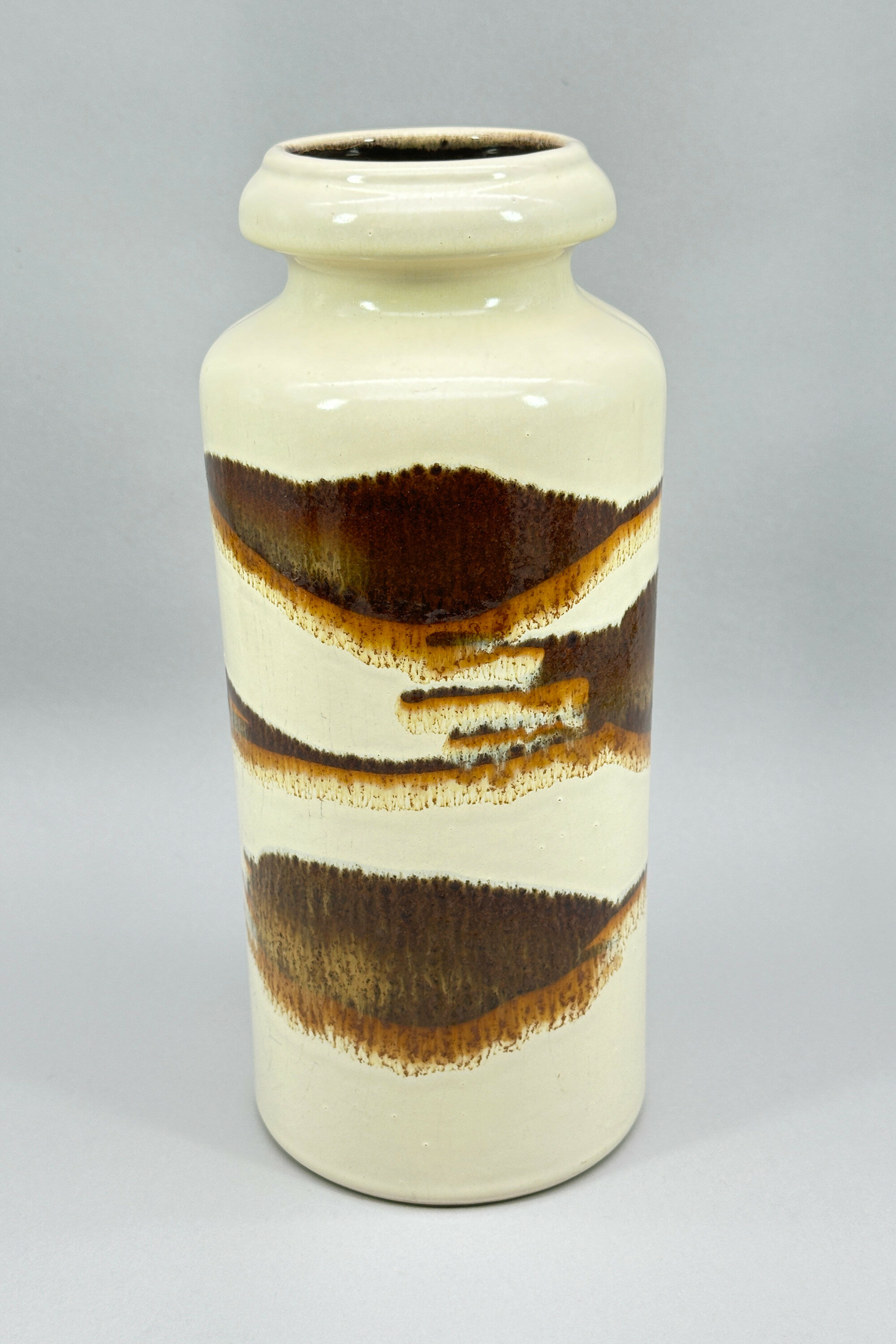
West German Vase with drip glaze decoration, Scheurich, 1960s
Price: £45Although not marked as such, this vase has all the hallmarks of the firm Scheurich Keramik which started production in 1954, rather later than most of its competitors, but soon became the largest producer of commercial art pottery in Germany. Their pieces rarely carried the factory name but usually the model number followed by the height in centimetres with ‘W-Germany’ below, as here. Model ‘517’ can be found in a variety of different glazes but the colourings here with the contrast between browns and cream are particularly successful. Dating is to the 1960s.
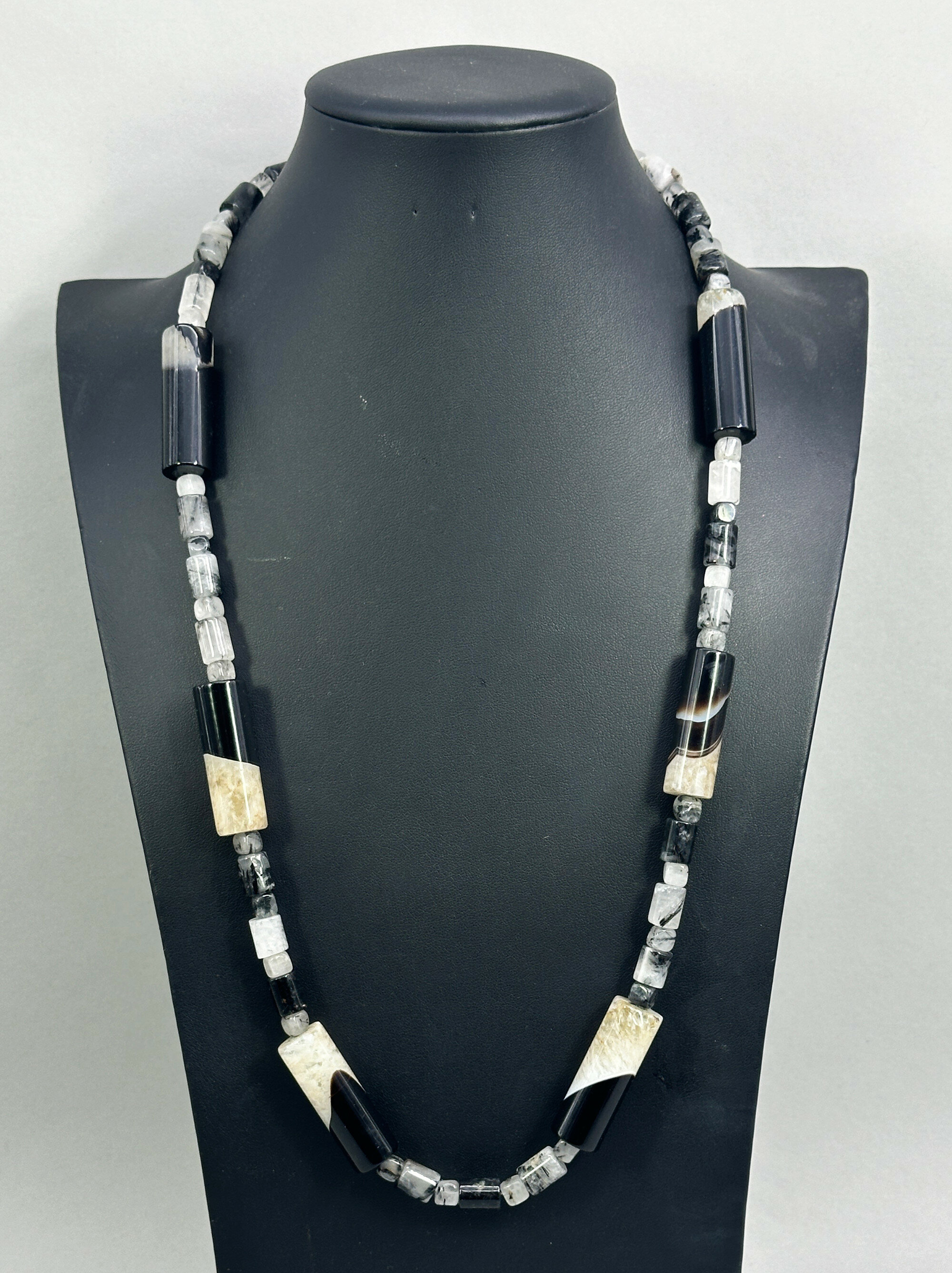
Monochrome tubular bead necklace, Modern
Price: £95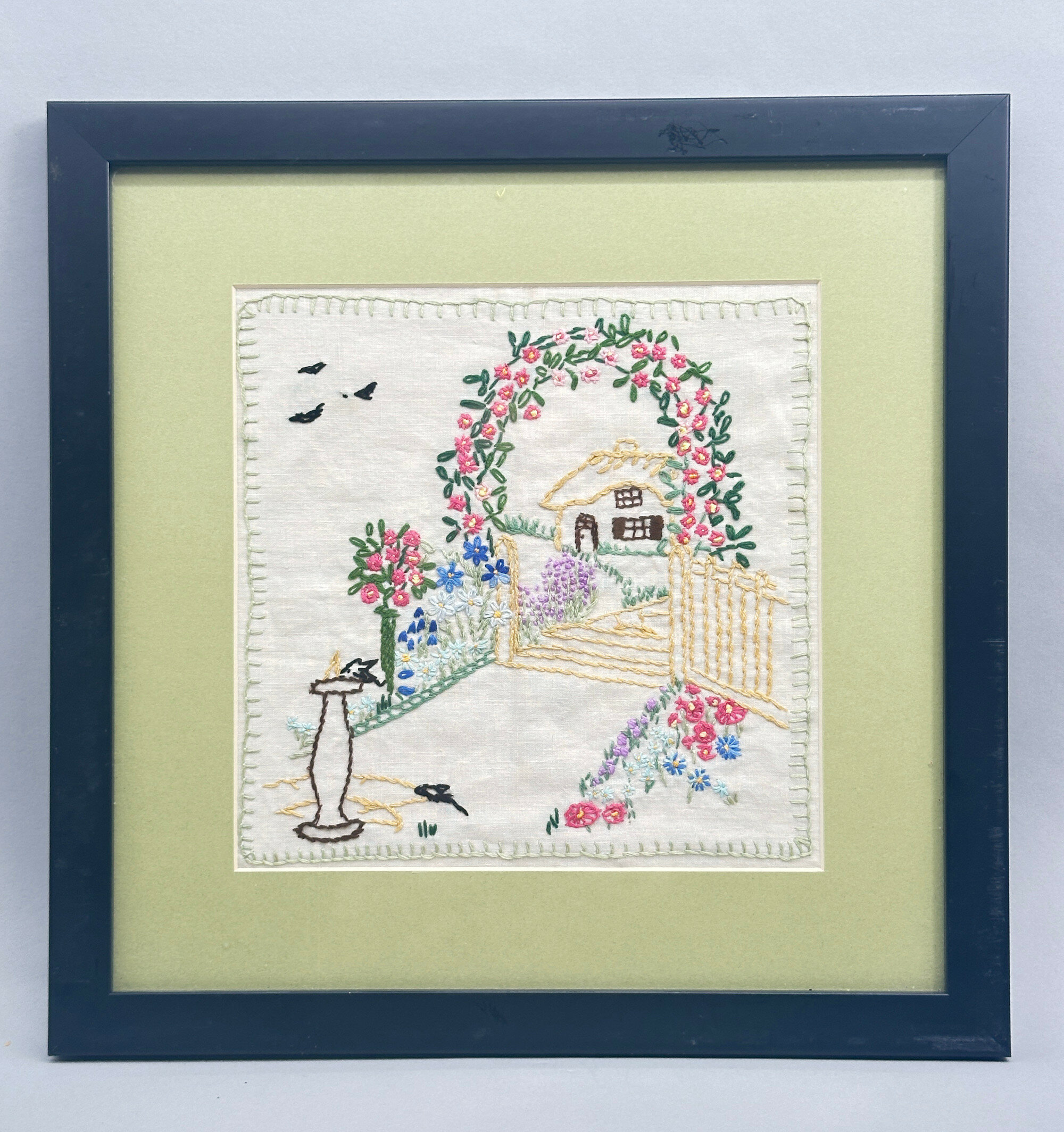
Vintage Needlepoint Picture of a Garden Scene, framed, second half C20th
Price: £25
Silver Cricket Box, Islamic probably Persian, early C20th
Price: £110
Chinese Framed Ceramic Plaque depicting Peony, C20th
Price: £150
Chinese Bone Netsuke carving of a man holding a musical instrument, early C20th
Price: £25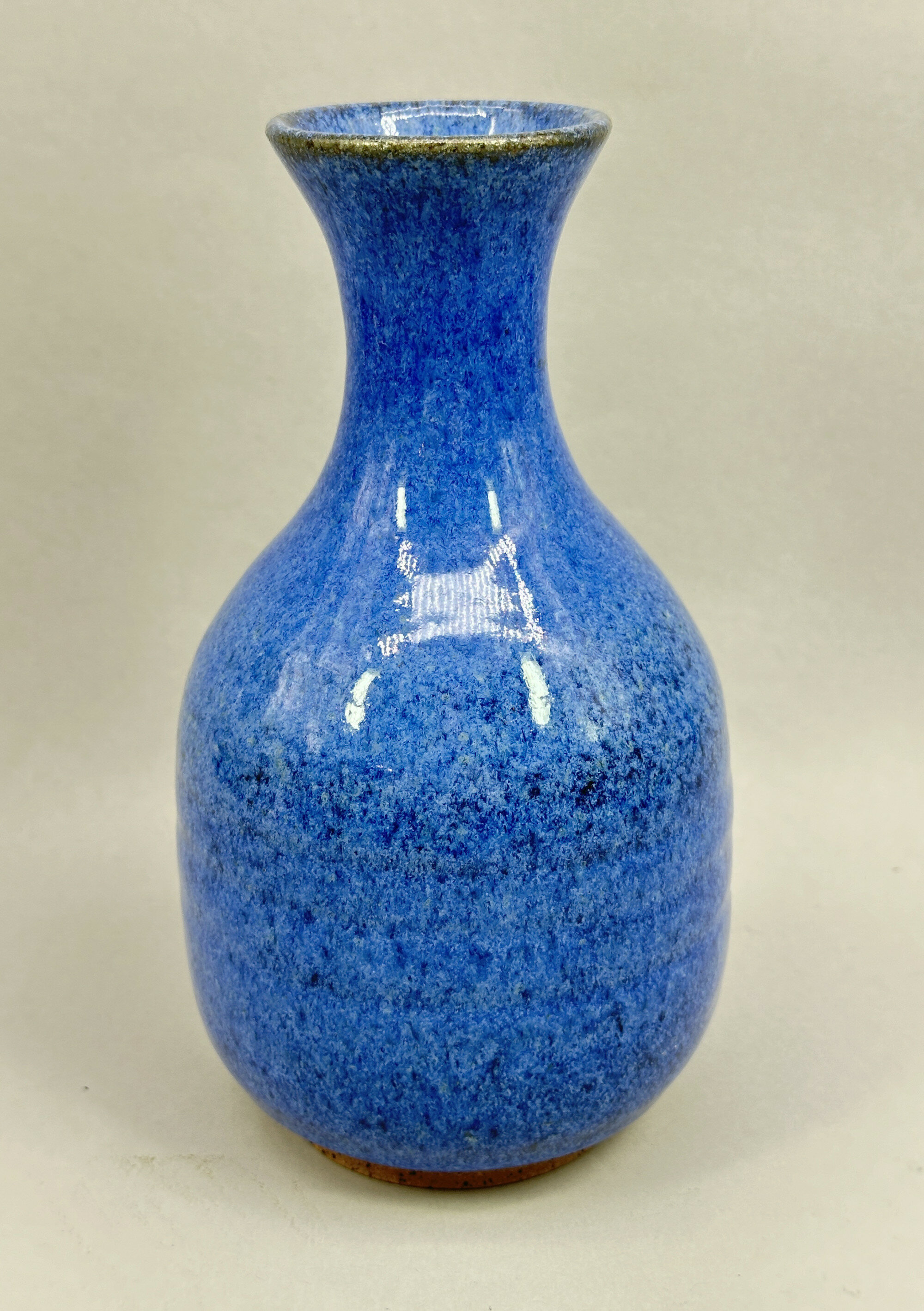
Studio Pottery Vase with Robin’s Egg Glaze marked Zambia, Modern
Price: £30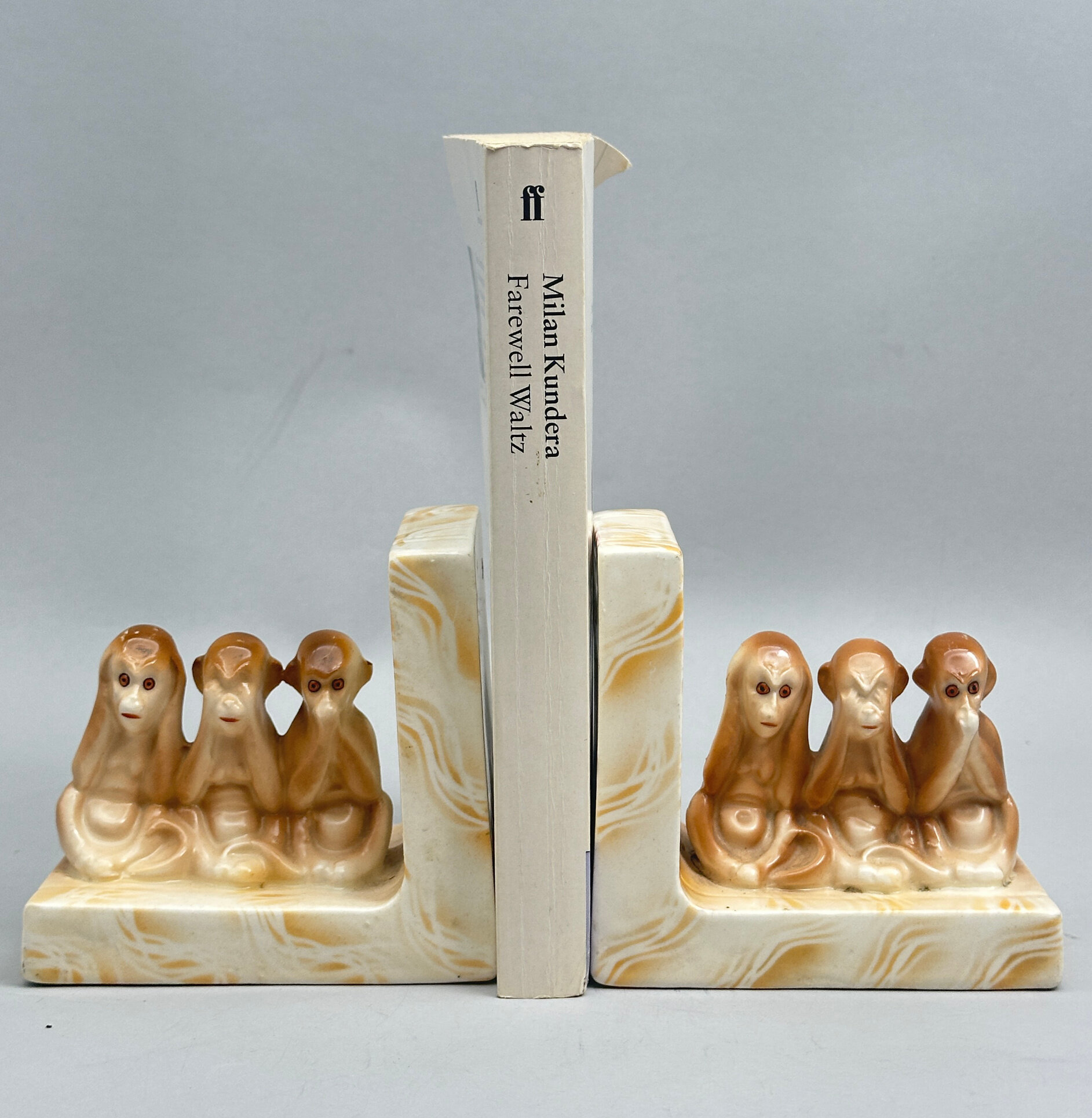
Pair of ceramic Bookends, the three wise monkeys, Czech second half C20th
Price: £30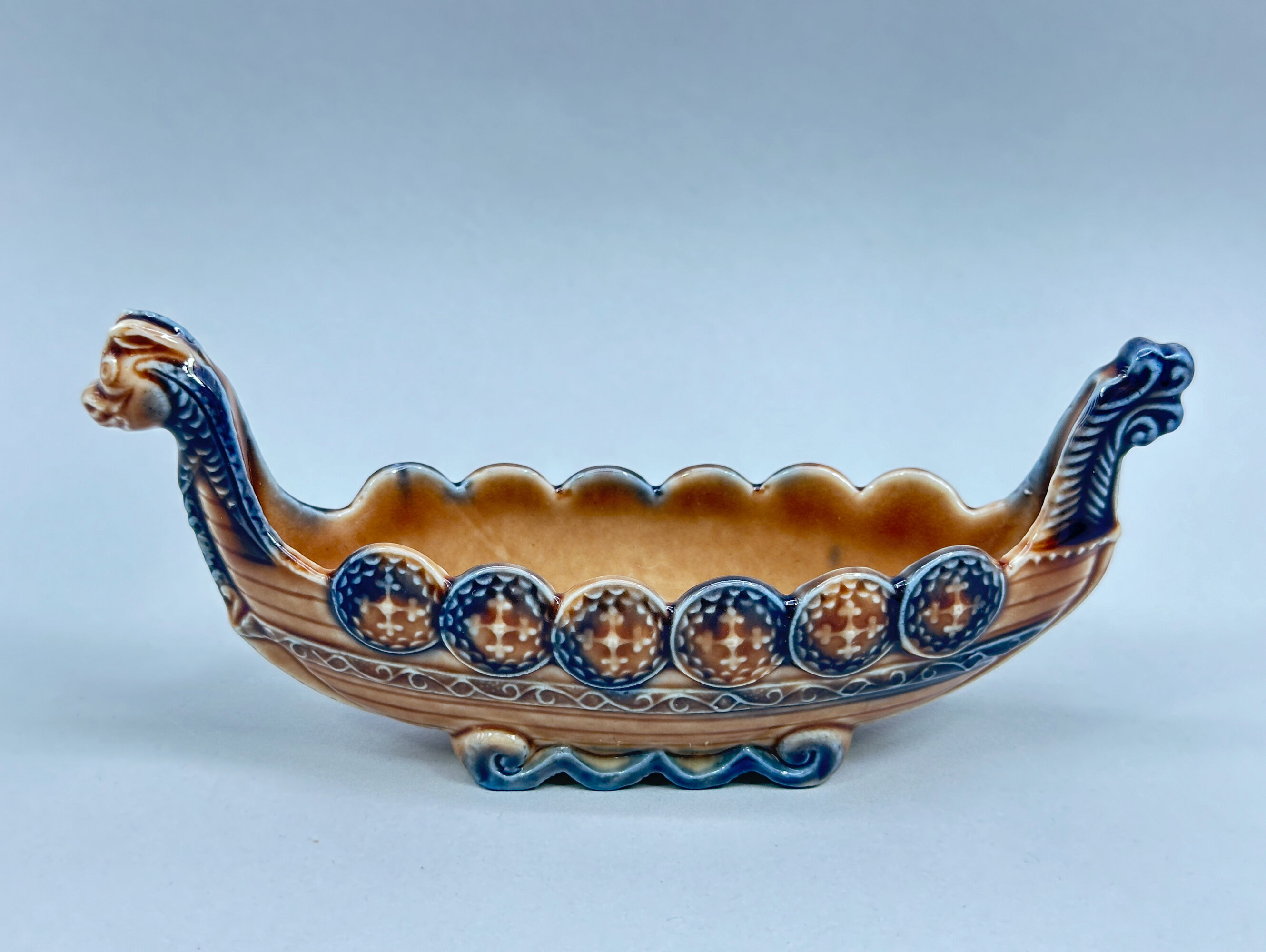
Ceramic Model of a Viking Longboat, Wade, 1950s/1960s
Price: £25Wade Ceramics Ltd was a manufacturer of porcelain and earthenware, headquartered in Stoke-on-Trent, England. Founded in 1867, it was run by various members of the Wade family until the death of George Anthony Wade in 1987 after which there was a succession of management buyouts. Despite substantial investment in 2009, the firm eventually went into administration in 2022. Wade produced a wide variety of ceramics, including the well known Wade Whimsies animal figurines.
Many of their pieces were designed to act as small containers for flowers and trinkets and this piece is a particularly amusing example of the type. Two colour ranges exist, one as here and one with much darker tones which is held to be later. Dating here, then, is most likely to the 1950s/1960s when the Wade production lines were in full swing and enjoying considerable popularity.
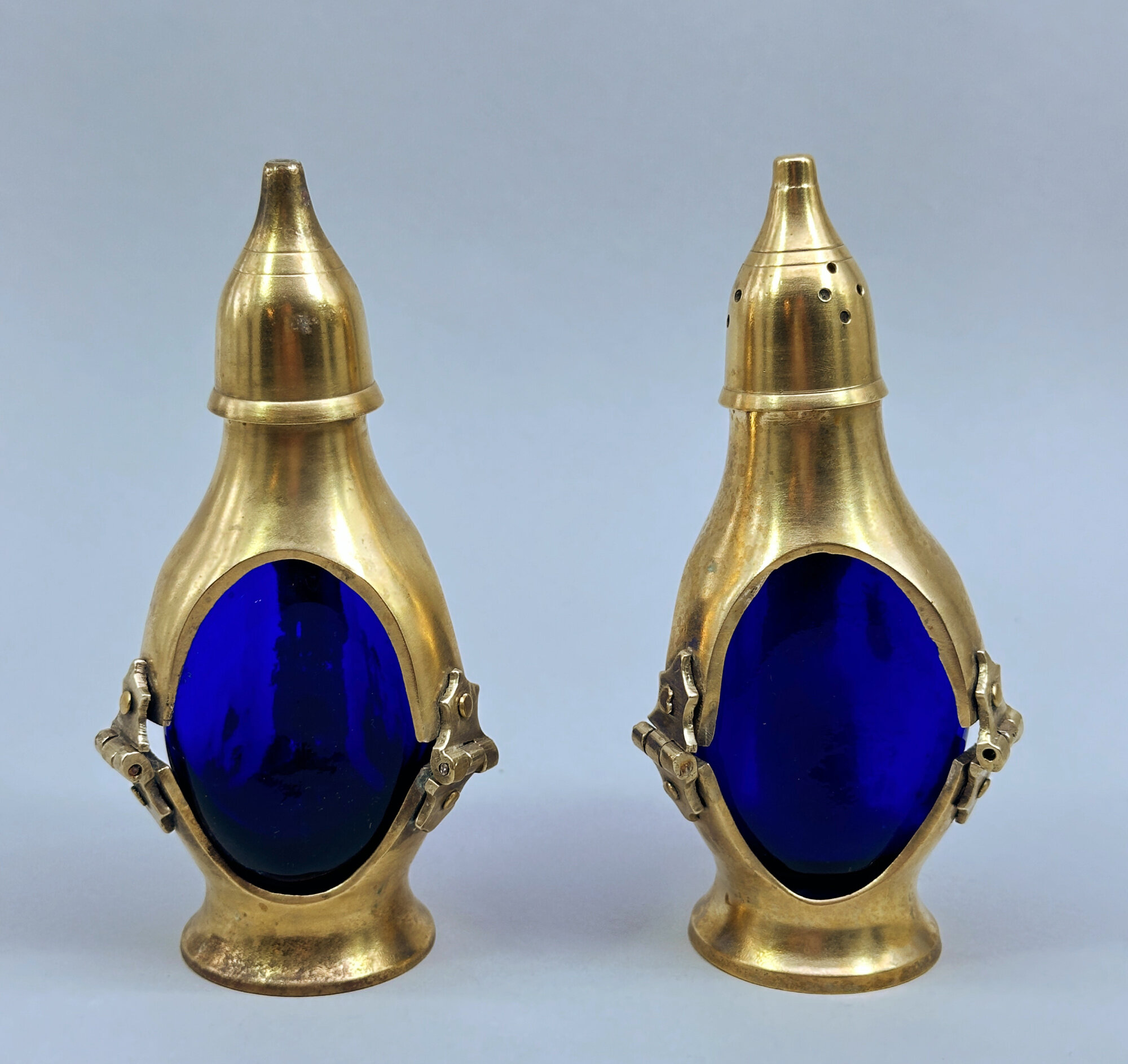
Arts and Crafts Brass and Cobalt Glass Salt and Pepper, early C20th
Price: £55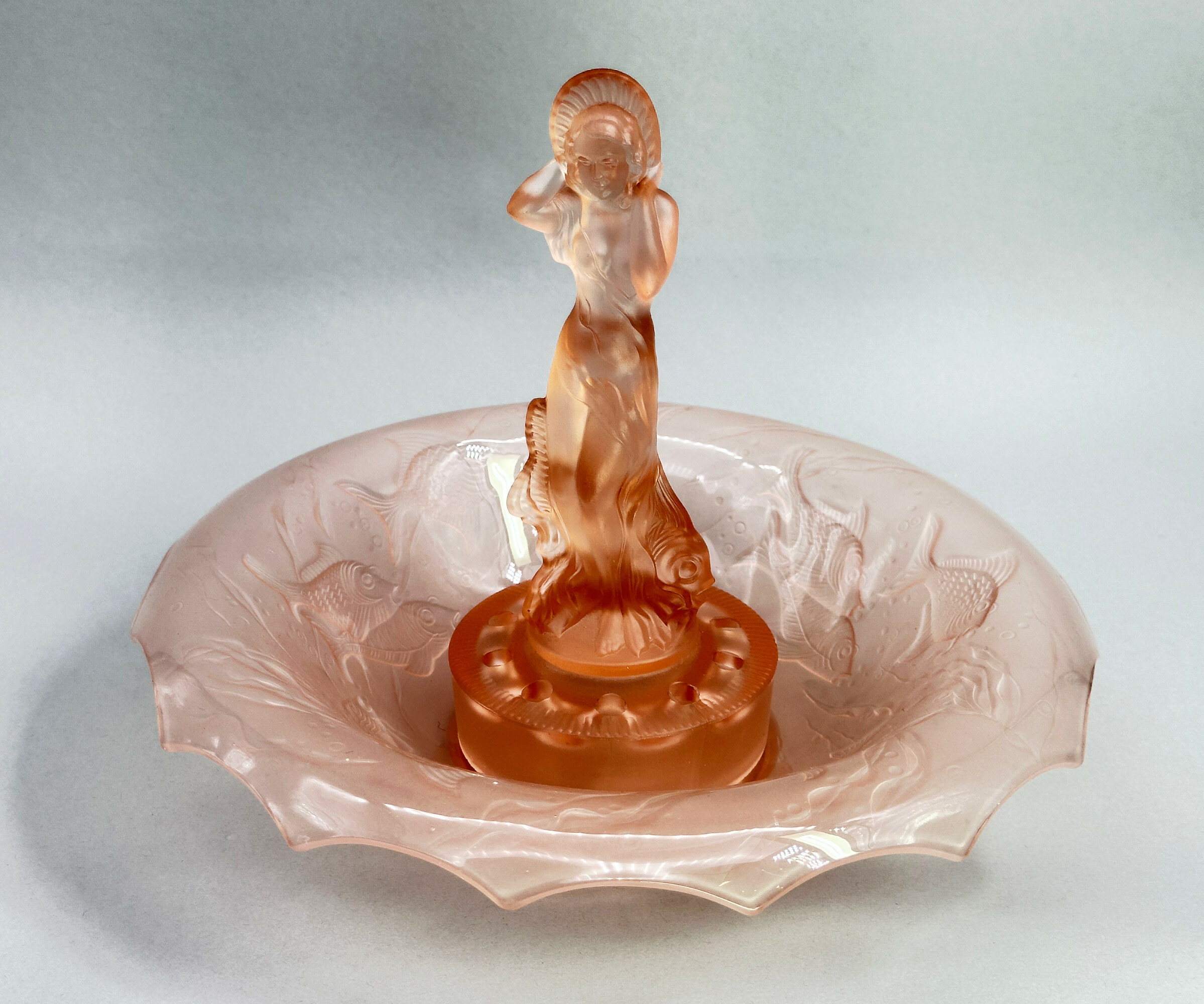
Pink Glass Centrepiece Set, Arabella, Walter and Sohne, 1930s
Price: £55The influence of Art Deco style of this piece is clear and it does indeed date to the 1930s. The model, termed ‘Arabella’ can apparently be seen in the 1934 catalogue of the German glass manufacturers Walther and Sohne, founded by August Walther in 1888 at Ottendorf-Akrilla near Dresden. In the 1930s the firm was famous for its Art Deco designs and also produced a version of ‘cloud glass’ which at one time was held to be exclusive to the English manufacturer Davidson. But some of the English glass makers also drew on their German rival’s work such that Walther and Sohne patented some of their designs in the UK in 1937, presumably to protect their work. This centrepiece set is a classic example of Walther and Sohne’s pre war productions and a distinctive example of Art Deco glassware.
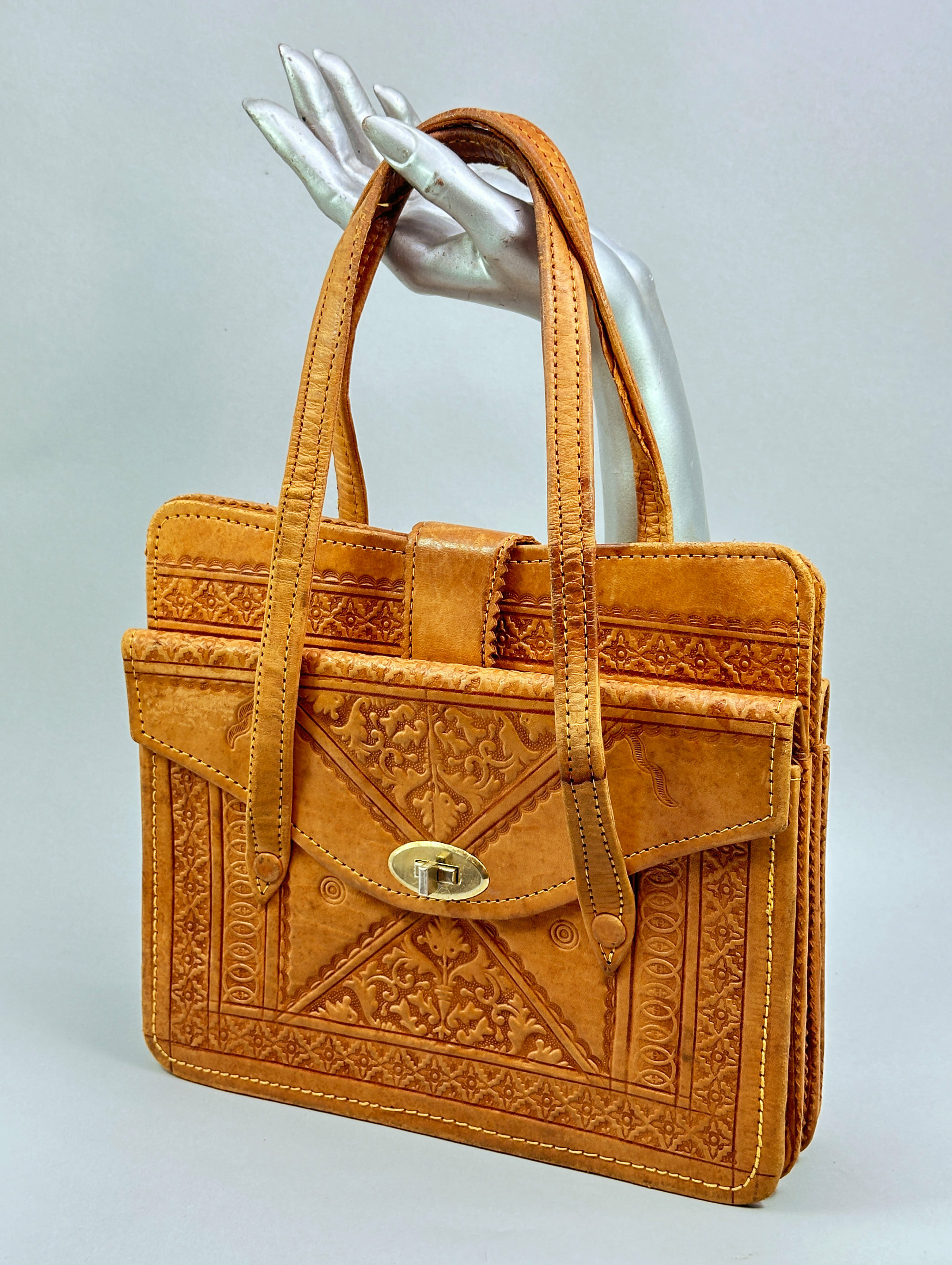
Moroccan tooled leather bag c1960
Price: £65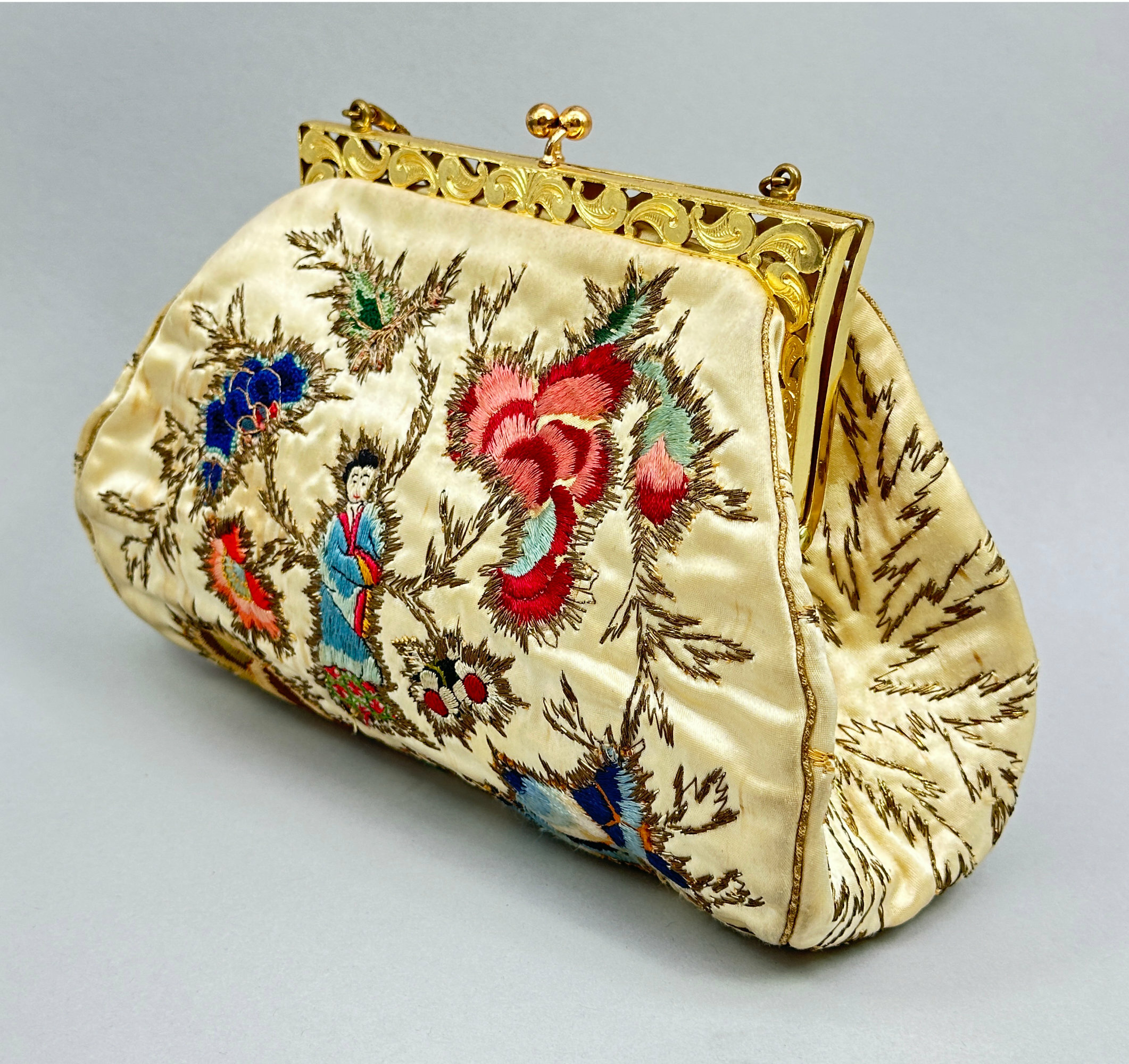
English silk handbag with embroidered Chinoiserie design c1950
Price: £95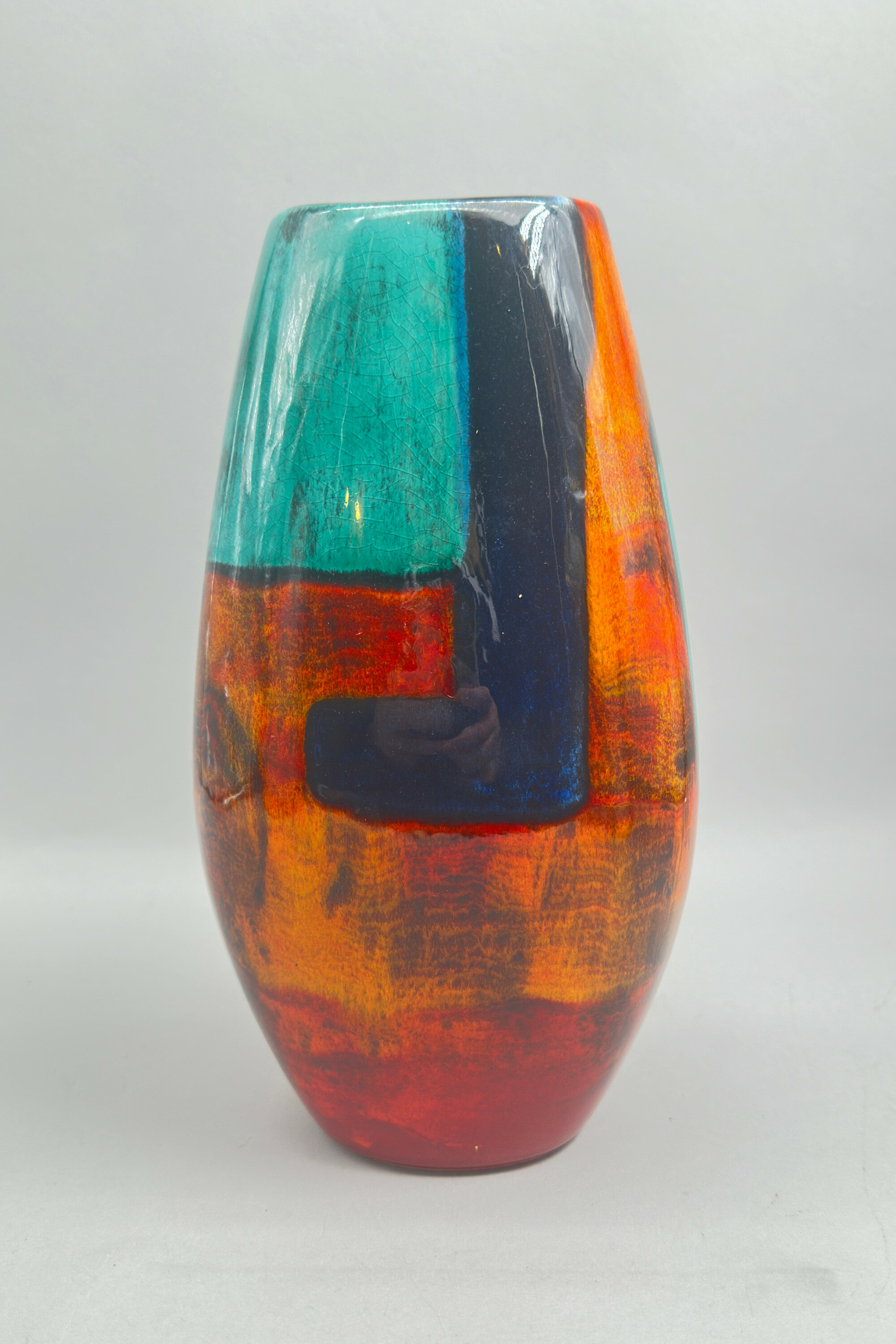
Poole Pottery Gemstones Vase, late C20th
Price: £75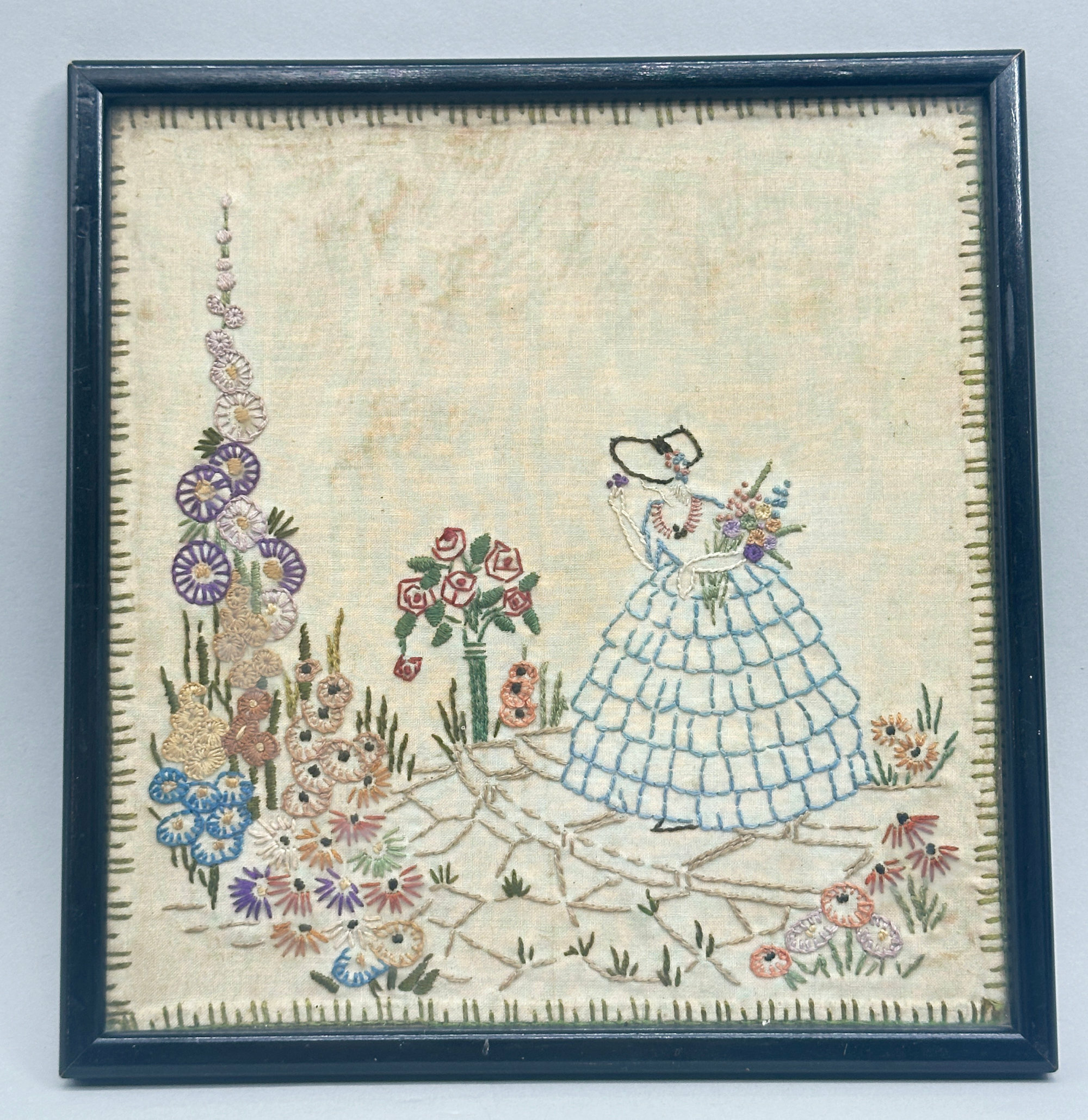
Vintage Needlepoint Picture of a lady dressed in a crinoline, framed, probably 1930s
Price: £25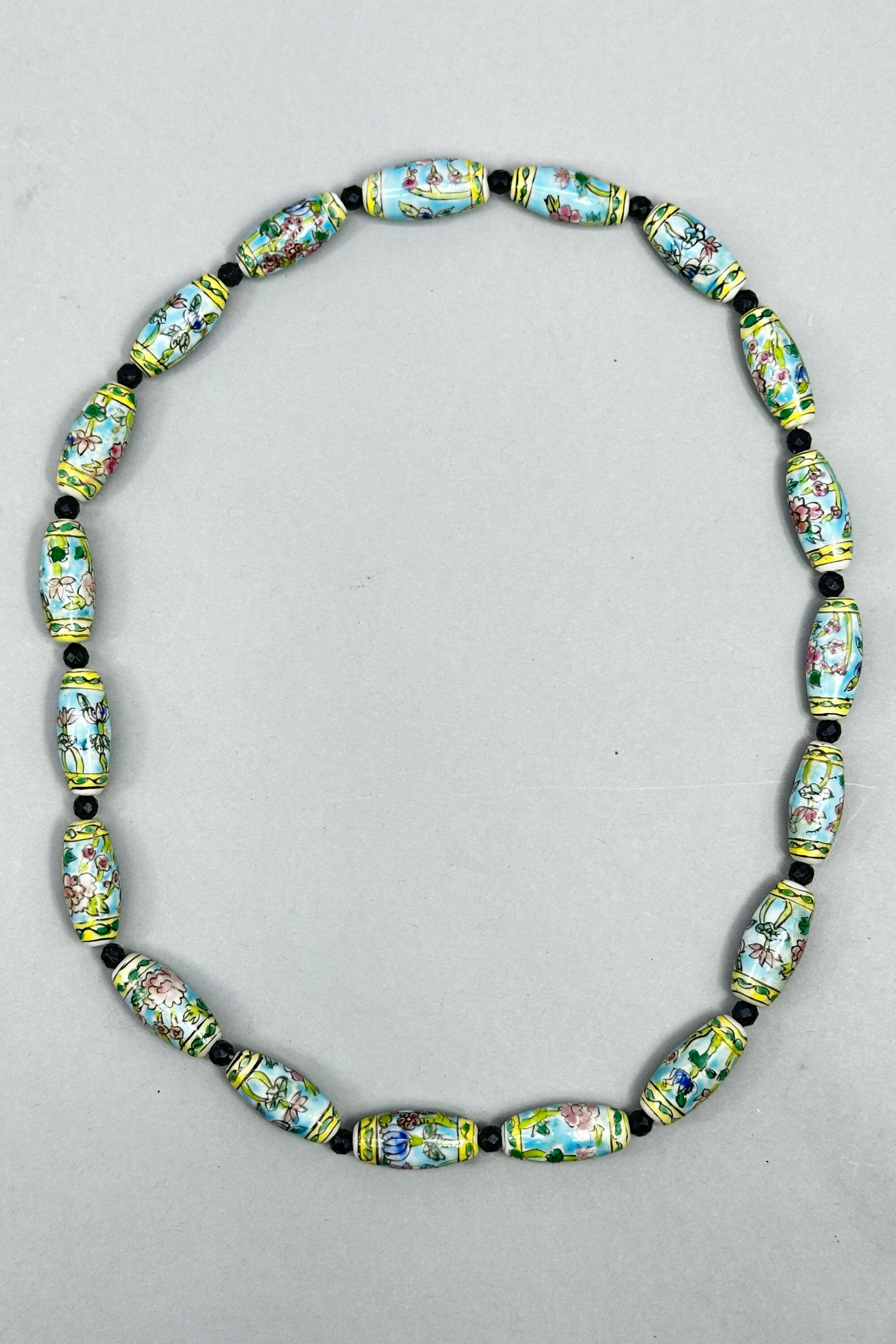
Strand of Chinese ceramic beads c1950
Price: £25
Miniature Staffordshire flatback model of two spaniels and a barrel, second half C19th
Price: £55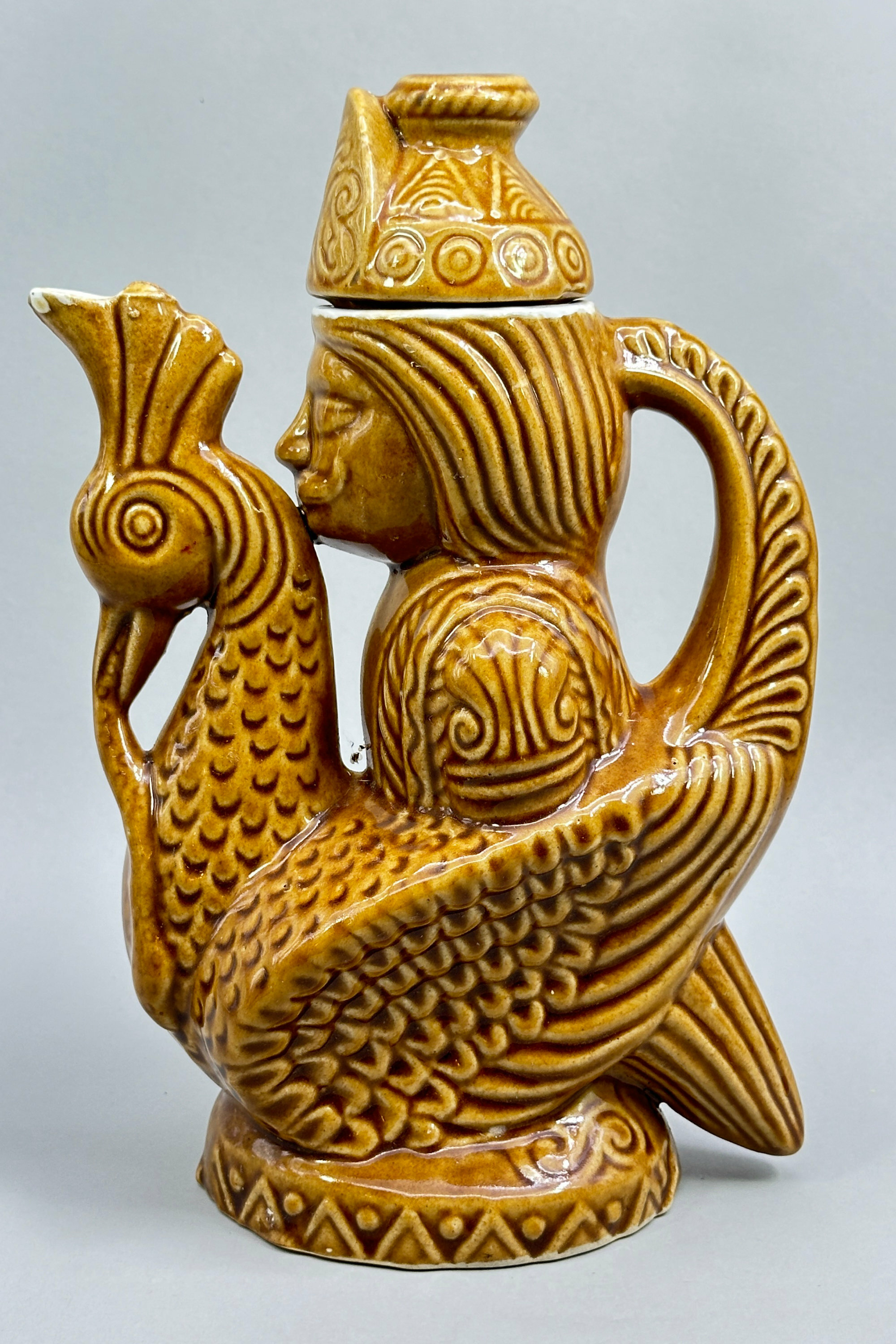
Bird form ewer with cover, possibly Russian c1960
Price: £45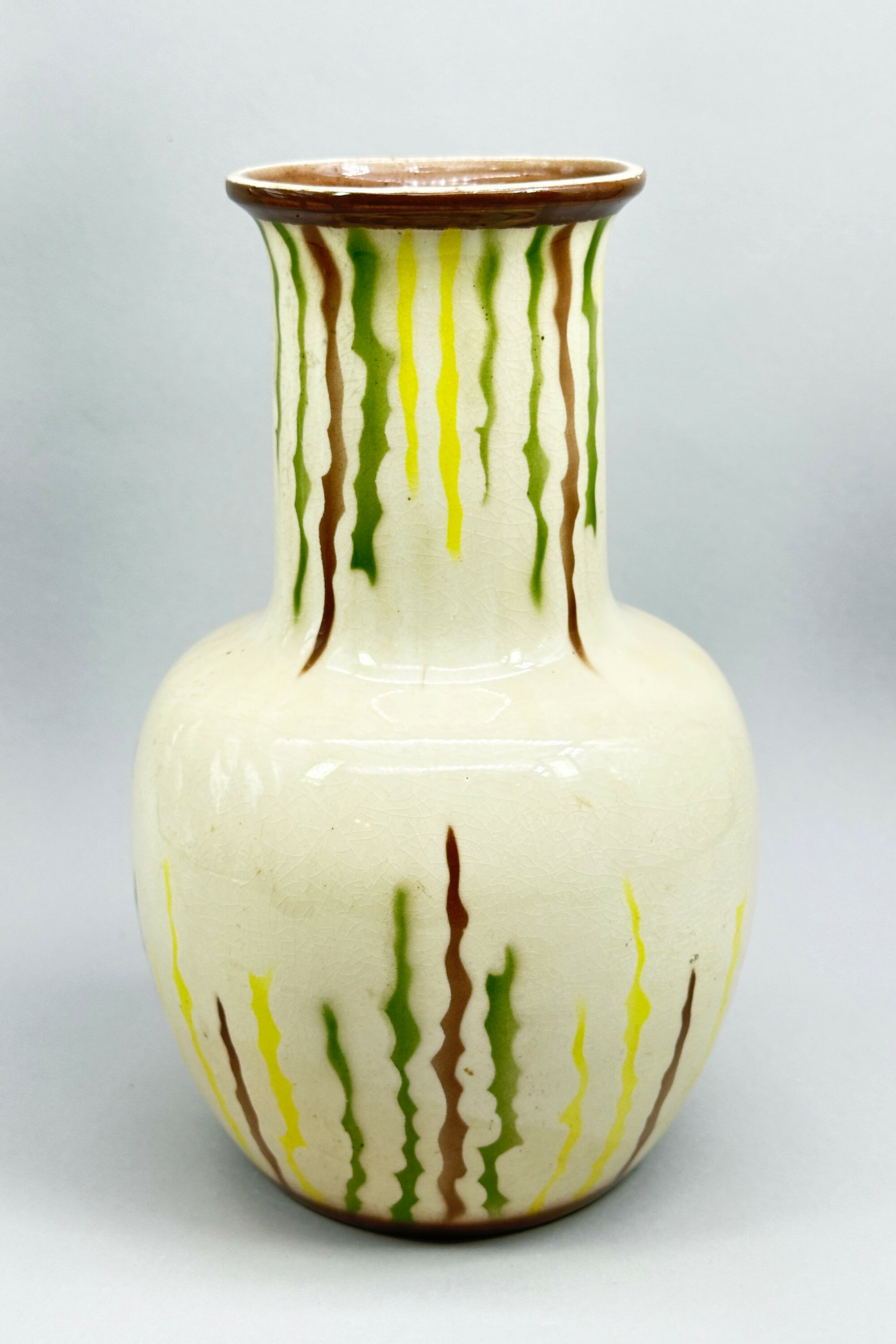
Art Deco style Vase signed E.Radford, mid C20th
Price: £75There were, in fact, two craftsmen working in the C20th British pottery industry with the name Edward Radford, father and son. Radford senior worked for Pilkington’s Royal Lancastrian Pottery in Manchester from 1903 until his retirement in 1936, acting as their main thrower. Radford junior joined his Father in 1905, but the First World War intervened, in which he won a Military Cross for his actions at Passchendaele in 1917 and afterwards he settled in Stoke on Trent, the heart of Britain’s pottery industry. An association developed with H.J.Wood’s Alexandra Pottery in Burslem who produced a range of wares bearing his name in the 1930s, although Radford himself may have acted as more a salesman than the designer. Production continued after the war and even after Radford’s retirement in 1948. The form of mark used here implies the later dating but may have been used earlier. The impressed figures indicate model number. Even if this vase is post war, the style is emphatically that of pre war Art Deco period with the simple lines of the form accompanied by semi abstract decoration vaguely reminiscent of Clarice Cliff combining to produce a piece of timeless attraction.
